
Arts Academy
in the Woods

How Art Education Fosters Critical Thinking and Why It Matters

These days, the ability to grasp the logical connection between ideas is a necessary skill.
Unless you’re a hermit living in a cave, there is so much information coming at all of us at any given moment.
Being able to discern which information is of worth – and which is not based in reality – requires critical thinking.
So What Exactly Is Critical Thinking?
Critical thinking is often synonymous with reflective and independent thinking. It means knowing how to take in the data and then come to a reasonable conclusion.
Those who engage in critical thinking are constantly questioning ideas and assumptions rather than just accepting what’s being peddled to the masses.
Critical thinkers want to know that the incoming information is representative of the bigger picture. If they determine that it’s not, they’ll take the necessary measures to get that additional information.
Critical Thinking Versus Being Critical
Critical thinking is not the same thing as being argumentative or critical/judgmental of other people. Sure, critical thinking can expose errors or poor reasoning.
But it’s also crucial for cooperative reasoning and then moving toward constructive tasks. Because acquiring more knowledge improves and strengthens one’s theories and arguments. And this subsequently leads to enhanced work processes.
How Art Improves Critical Thinking
Because critical thinking tends to incorporate logical and rational thinking and veers from instinct, many people see it as a hinderance to creativity.
After all, creativity requires breaking the rules, right? (Well, yes and no .)
Still, critical thinking truly requires out-of-the-box thinking. Rather than just taking popular approaches and swallowing them whole, critical thinkers challenge the consensus. This means they often have to pursue less popular thoughts or approaches.
So if you think about, critical thinking is an absolutely necessary component of creativity. Without it, how can the creative person continue to evaluate and improve upon his or her ideas?

It’s this very process of observation and study that teaches students of the arts to more intensely observe and analyze the world. And it gives them the skills that build the foundation of critical thinking.
But Why Does It Matter?
You might think that if your path leads you to work in research, law, education, management, finance or medicine, then you’ll absolutely need this skill. And you’re right.
But no matter what you choose to do with your life, the ability to think clearly and rationally is important.
Knowing how to receive information, clearly consider it and then use it to systematically solve problems is an asset for any career. Especially in light of this new knowledge economy. To be successful in such an economy requires one to able to handle changes quickly and effectively.
There is an increased demand for workers to be able to analyze a lot of information from diverse sources, then integrate it in order to find solutions. Critical thinking promotes these skills.
It also enhances language and presentation skills. The simple act of learning to think in a more systematic and logical fashion can also improve the way one expresses ideas.
Furthermore, in having to analyze the structure of different information sources, critical thinking also improves one’s ability to comprehend.
And as we mentioned above, critical thinking actually promotes creativity. Coming up with creative solutions is more than just having new ideas. There has to be an understanding that the new ideas are useful and relevant to the required task. Critical thinking plays an important role in this.

That’s right. Critical thinking is even important for this. It’s nearly impossible to structure a meaningful life without the ability to justify and reflect on our own values and decisions. And critical thinking provides the tools for this process.
So yeah, it’s safe to say that critical thinking definitely matters.
Learning Critical Thinking with an Arts Integration Education
Arts integration education merges the important skill of critical thinking achieved through art education and blends it in with academics.
There’s no disputing the importance of STEM. The above mentioned knowledge economy requires students to understand facets of science, technology, engineering and math.
With arts integration though, there’s the added importance of art – hence the term STEAM. Arts integration isn’t looking to bypass STEM. It strives instead to create an integrated program that includes all of those, while teaching the application of skills learned through the arts – such as critical thinking.
Arts integration helps students see the world from multiple angles, and to take a design-thinking approach in finding solutions.
Teaching young people to be careful and deliberate observers can go miles toward expanding their worldview. And this, in turn, can create a stronger democracy.
Do You Want to Explore An Arts Integration Education?

So take a look at what our students have to say . And/or request a tour of our school and see what we have to offer.
Then get ready to put those critical thinking skills toward a higher purpose.
News Categories
- Art Integrated Education
- Daily Announcements

Art and Critical Thinking
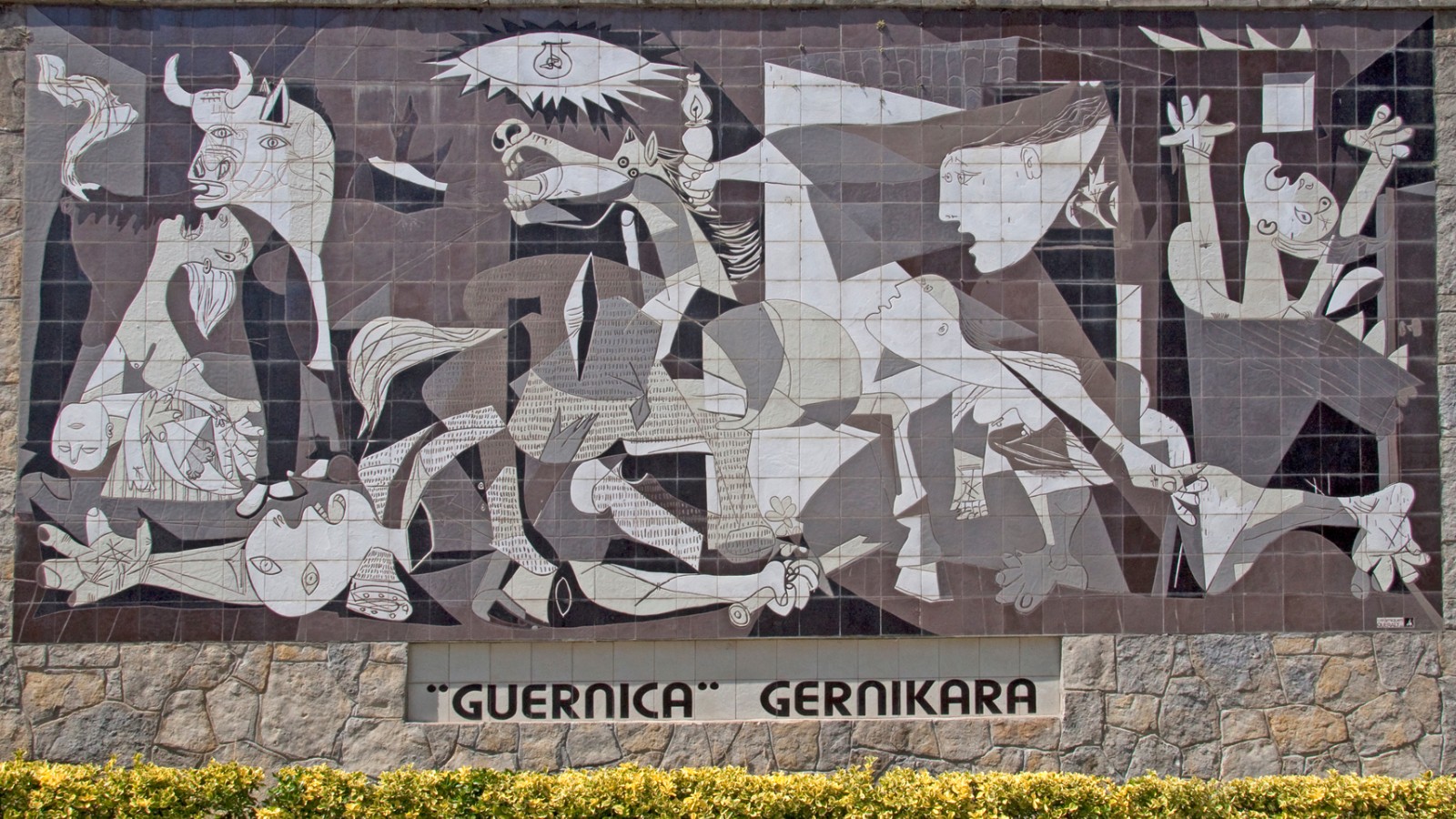

Art Appreciation – Definition, Examples, History & More – Art Education and Methodologies Glossary
Table of Contents
What is Art Appreciation?
Art appreciation is the understanding and enjoyment of art. It involves looking at, analyzing, and interpreting works of art. It also involves understanding the cultural and historical context in which the art was created.
Art appreciation allows individuals to develop a deeper connection to art and to appreciate the creativity and skill of artists. It can also help individuals to develop their own artistic skills and creativity.
Elements of Art
The elements of art are the basic building blocks of visual art. They include line, shape, form, color, value, texture, and space. These elements are used by artists to create works of art and to communicate ideas and emotions.
Line is a mark made by a moving point. Shape is a two-dimensional area defined by a boundary. Form is a three-dimensional object with height, width, and depth. Color is the visual property of objects created by the wavelength of light they reflect. Value is the lightness or darkness of a color. Texture is the surface quality of an object. Space is the area around, between, and within objects.
Principles of Design
The principles of design are the guidelines that artists use to organize the elements of art in a work of art. They include balance, contrast, emphasis, movement, pattern, rhythm, and unity. These principles help to create visual interest and harmony in a work of art.
Balance is the distribution of visual weight in a work of art. Contrast is the difference between elements in a work of art. Emphasis is the focal point of a work of art. Movement is the path the viewer’s eye takes through a work of art. Pattern is the repetition of elements in a work of art. Rhythm is the repetition of visual movement in a work of art. Unity is the harmonious relationship between elements in a work of art.
Art Movements
Art movements are periods of time in which artists shared a similar style or philosophy. They are often characterized by a specific set of techniques, subject matter, or themes. Some famous art movements include Impressionism, Cubism, Surrealism, and Abstract Expressionism.
Impressionism was a 19th-century art movement that focused on capturing the effects of light and color in a scene. Cubism was an early 20th-century art movement that emphasized geometric shapes and multiple perspectives. Surrealism was a 20th-century art movement that explored the unconscious mind and dreams. Abstract Expressionism was a mid-20th-century art movement that emphasized spontaneous, gestural painting.
Art Criticism
Art criticism is the analysis and evaluation of works of art. It involves looking at a work of art, interpreting its meaning, and assessing its artistic value. Art critics use a variety of methods to critique art, including formal analysis, contextual analysis, and subjective interpretation.
Formal analysis involves looking at the formal elements of art in a work, such as line, shape, color, and composition. Contextual analysis involves considering the cultural, historical, and social context in which the art was created. Subjective interpretation involves interpreting the emotional or personal response to a work of art.
Art Analysis
Art analysis is the process of examining and interpreting works of art. It involves looking at the formal elements of art, the principles of design, and the cultural and historical context of the art. Art analysis can help individuals to understand and appreciate works of art on a deeper level.
Art analysis can also help individuals to develop their critical thinking skills and to communicate their ideas about art. By analyzing works of art, individuals can gain a greater appreciation for the creativity and skill of artists, as well as the cultural and historical significance of art.
JerwoodVisualArts
Hundreds of articles, guides and free resources
Email: [email protected]
Follow Us !
Copyright © 2024 All Rights Reserved
Privacy policy
Cookie Policy

Visit Planning
- Plan Your Visit
- Event Calendar
- Current Exhibitions
- Family Activities
- Guidelines and Policies
Access Programs
- Accessibility
- Dementia Programs
- Verbal Description Tours

Explore Art and Artists
Collection highlights.
- Search Artworks
- New Acquisitions
- Search Artists
- Search Women Artists
Something Fun
- Which Artist Shares Your Birthday?
Exhibitions
- Upcoming Exhibitions
- Traveling Exhibitions
- Past Exhibitions
Art Conservation
- Lunder Conservation Center

Research Resources
- Research and Scholars Center
- Nam June Paik Archive Collection
- Photograph Study Collection
- National Art Inventories Databases
- Save Outdoor Sculpture!
- Researching Your Art
Publications
- American Art Journal
- Toward Equity in Publishing
- Catalogs and Books
- Scholarly Symposia
- Publication Prizes
Fellows and Interns
- Fellowship Programs
- List of Fellows and Scholars
- Internship Programs
Featured Resource

- Support the Museum
- Corporate Patrons
- Gift Planning
- Donating Artworks
- Join the Director's Circle
- Join SAAM Creatives
Become a member

A Teacher Asks: Why the Renwick?

Vaija Wagle, former teacher at Washington International School.
Welcome to the Renwick Gallery. I am Vaija Wagle. I have been a classroom teacher for the last 40 years. For 20 of those years, ideas from Project Zero , a research institute at Harvard Graduate School of Education influenced teaching and learning in my classroom. Upon retiring from the classroom, I took on the challenge of writing teacher resources for the Renwick Gallery.
As a teacher, my initial concern was that the Renwick Gallery would not be a teacher’s intuitive choice. Teachers have limited time and the artwork at the Renwick Gallery were not connected to any curriculum content. However, I soon recognized that the artwork at the Renwick Gallery presented a unique teaching opportunity.
Finding the Key
The artworks begged understanding. Using thinking patterns to understand and appreciate the artworks could offer students vital lessons to learn about critical thinking. If thinking about their thinking (metacognition) could be part of this experience, then the students might, in addition, transfer these thinking patterns across subject areas and to the world beyond.
If a visit to the Renwick, either through reproductions in the classroom or in-person, offered an opportunity to learn about using critical thinking skills and metacognition, teachers like me might find it quite valuable. With this in mind, I set to work on the units now available in the Resources section. They use a variety of trans-disciplinary thinking patterns to appreciate and understand the Renwick’s artworks such as:
- Uncovering Hidden Stories
- Taking Multiple Perspectives
- Getting to the Heart of the Matter
- Gleaning Context from Objects
- Making Connections
Learn more about Field Trips and School Tours at the Smithsonian American Art Museum.
The Units’ Philosophical Core
At Project Zero , I was profoundly drawn to the idea of making cultivating understanding through critical thinking as the goal of learning. This idea promised to benefit students’ learning in the classroom, but also for life long learning beyond the classroom.
You’ll notice that the units I created:
- Constructing an understanding of big conceptual ideas : Big conceptual ideas describe physical and social patterns that govern the world, how things work or why they are the way they are. They provide an enduring and universal lens through which to view subject matter but also the world around.
- Engage active student thinking . While knowledge may be dished out and delivered, understanding can only be cultivated through critical thinking, and through the units, students are guided to use a variety of thinking patterns to construct the desired understandings.
The units are designed for a variety of age groups; elementary to middle school students or middle to high school students.
Each unit takes between 60 and 90 minutes and can be accomplished during a visit to the museum or by displaying high definition photographs of the artworks available on the website.
Each unit uses a particular thinking pattern to look closely at a select artwork, and form informed and relevant interpretations.
There are metacognitive breaks along the way to help students become cognizant of the thinking pattern they are using to engage with the artworks.
A closing moment of reflection is built in to allow the students to revisit the experience and think about what they gained both in terms of ideas the artwork generated and patterns of thinking used.
Examples of how the various thinking patterns can be used to successfully teach curriculum content are also provided.
Practical Testing
As a teacher, I know that there is nothing better than a chance to actually teach the units and receive feedback. So, I took multiple opportunities to test the units in the gallery and at workshops across the city and gather feedback from participating students and teachers. I also reflected on what worked and what didn’t.
My highlight was when we presented the unit on Hidden Stories (the importance of seeking side and hidden stories to better understand the main story) to a high school art class at St. Alban’s School. Having visited the classroom some days before, my host teacher wrote to me and said that the students had returned from their art class and informed their teachers in the history and literature classes that they ought to be looking for side and hidden stories!! This, to me, is the ideal outcome. With all this feedback I set to revise the units.
Thinking Through Craft resources were funded by a generous gift from the William R. Kenan, Jr. Charitable Trust.
Unlocking Creativity: The Socratic Method in Art Education
What is the socratic method, how can art education benefit from the socratic method, practical ways to implement the socratic method in art education, socratic discussions and art, socratic questioning and art criticism, stimulating creativity through socratic dialogue, how to prepare for a socratic seminar in art class, challenges and solutions in applying the socratic method in art education, examples of socratic method in art education, why the socratic method matters in art education.
Are you searching for fresh ways to unlock your students' creativity in art class? If so, you've probably tried numerous approaches. But have you ever considered the Socratic Method in art education? This ancient technique has the power to open up new doors, encourage critical thinking, and stimulate boundless creativity. Let's explore!
The Socratic Method is a time-tested teaching strategy named after Socrates, a classical Greek philosopher. He believed in the power of asking questions to stimulate critical thinking and to draw out ideas and underlying presumptions. Instead of feeding information directly, the Socratic Method encourages learners to ask and answer questions, fostering a deeper understanding of the topic.
So, how does it work?
- Questioning: The process begins with a teacher posing thought-provoking questions. Rather than seeking 'yes' or 'no' answers, these questions are open-ended and designed to encourage students to think more deeply about the topic.
- Active Listening: Teachers and peers listen carefully to the responses, taking note of perspectives and ideas that may be explored further.
- Follow-up Questions: The teacher then asks follow-up questions based on the answers. This encourages students to refine their thoughts and delve deeper into the subject matter.
- Reflection: Finally, students reflect on the discussion, allowing them to internalize the insights gained and apply them in future situations.
By using this method, teachers can create a dynamic learning environment that encourages active participation, critical thinking, and a greater understanding of the subject matter, something that fits perfectly when it comes to the Socratic Method in art education.
Art education, by its very nature, is a realm of exploration and creativity. It encourages students to express themselves through various mediums, bringing their inner thoughts and feelings to life. But how can the Socratic Method in art education enhance this process even further? Let's take a look.
- Enhance Critical Thinking: By asking probing questions, the Socratic Method encourages students to scrutinize their own artwork and the artwork of others. This can help them understand their creative choices, appreciate the thought process behind their art, and constructively critique their own and others' work.
- Boost Confidence: Art can sometimes be intimidating, especially when students feel they lack the 'right' skills. By shifting the focus from the final product to the process and the ideas behind the work, students can gain confidence in their creative abilities.
- Encourage Active Participation: In traditional art classes, students often work on their own projects in silence. The Socratic Method, on the other hand, encourages dialogue and discussion, helping students to feel more engaged and part of a community.
- Develop a Deeper Appreciation of Art: Through the Socratic Method in art education, students can gain a deeper understanding and appreciation of art. They learn to see beyond the surface, exploring themes, techniques, and meanings that they might have otherwise overlooked.
So, are you ready to give your art class a Socratic twist? The benefits are plentiful and your students will thank you for it!
Integrating the Socratic Method into art education doesn’t have to be a daunting task. Here, we'll provide some practical tips on how you can seamlessly incorporate this method into your teaching routine.
- Ask Open-Ended Questions: Instead of asking students, "What did you draw?", try asking, "Why did you choose to draw this?" or "What does this artwork say about you?". Open-ended questions stimulate deeper thinking and encourage students to express their feelings and ideas.
- Encourage Group Discussions: After a project or exercise, gather your students and facilitate a group discussion. Allow them to share their thoughts, insights, and feedback about their own work and the work of their peers. The goal here is to foster a sense of community and promote a culture of constructive criticism.
- Use Art as a Springboard for Dialogue: Art can be a powerful conversation starter. Use pieces of art—be it from famous artists or student creations—as a springboard for discussions about themes, techniques, and personal interpretations.
- Guide, Don't Dictate: As the educator, your role should be to guide the conversation, not dictate it. Encourage students to ask their own questions and explore their own ideas. This fosters independence and critical thinking.
Remember, the Socratic Method in art education isn't about arriving at a 'correct' answer. It's about exploration, discussion, and understanding—both of art and of oneself. So, the next time you step into your art classroom, why not give it a try?
Socratic discussions are a fundamental component of the Socratic method in art education, serving as a bridge between the visual and the verbal. These discussions provide a platform for students to share their interpretations, challenge assumptions, and delve into the layers of meaning within an artwork.
Imagine this scenario: you're in class, and you present your students with "Starry Night" by Vincent Van Gogh. Instead of lecturing about the painting, you ask thought-provoking questions like, "What emotions does this painting evoke in you?" or "Why do you think Van Gogh chose these colors?". You'll find that students will begin to see the painting not just as a piece of art, but as a narrative waiting to be explored.
But how does one effectively facilitate a Socratic discussion in an art class? Here are a few strategies:
- Establish Ground Rules: Ensure that students understand that every viewpoint is valid and should be respected. This sets a safe space for open dialogue.
- Invite Participation: Encourage every student to contribute. Remember, a discussion isn't a discussion without varied voices and perspectives.
- Keep the Conversation Guided but Fluid: While it's important to guide the conversation, don't stifle it. Allow students to explore different tangents and ideas—it's all part of the learning process.
- Summarize and Reflect: After the discussion, summarize the key points and invite students to reflect on the conversation. This helps reinforce what they've learned and encourages them to apply it in future discussions.
Through Socratic discussions, students learn not just about art, but also about empathy, communication, and critical thinking. It's a powerful tool in the arsenal of art education—one that can truly unlock creativity in your classroom.
Socratic questioning forms the backbone of art criticism under the umbrella of the Socratic method in art education. It's all about asking the right questions to foster critical thinking and develop a deeper understanding of art. Let's think of it as a detective trying to piece together clues to solve a mystery. Only this time, the mystery is an artwork, and your students are the detectives!
But why is Socratic questioning important in art criticism? Well, imagine flipping through an art book and simply saying, "I like this painting" or "I don't like that sculpture." It's a start, but it doesn't dive into the why and how—Why does this artwork appeal to you? How does it make you feel? What elements stand out? In other words, it doesn't promote critical thinking.
That's where Socratic questioning comes in. By asking questions like, "What elements of this artwork stand out to you and why?" or "How does this artwork connect with you on a personal level?", you're encouraging your students to analyze and evaluate art, rather than merely observe it.
Here are a few key strategies for implementing Socratic questioning in art criticism:
- Start with Observation: Encourage students to describe what they see in the artwork. This includes colors, shapes, textures, and any other noticeable elements.
- Move to Interpretation: Ask students what they think the artwork means. This can be based on the elements they've observed, the emotions they feel, or any personal connections they may have.
- End with Evaluation: Finally, ask students whether they think the artwork is successful and why. This isn't about whether they like the artwork—it's about whether they think the artwork effectively communicates its intended message or evokes a particular emotion.
By using Socratic questioning in art criticism, you're teaching students to think critically about art. This is an invaluable skill—not just in art education, but in life as well.
What's the secret sauce to unlock creative potential in art education? Well, it might just be the Socratic method in art education. Socratic dialogue, a key component of this method, has the power to ignite the spark of creativity in your students.
So, how can we create this 'eureka' moment in art class? The answer lies in open-ended, thought-provoking conversations. You see, Socratic dialogue isn't a lecture where one person does all the talking. It's a collaborative conversation where everyone's ideas are equally valuable.
When students engage in this type of dialogue, they're forced to think outside the box. They're challenged to find new ways to approach a problem or express an idea. And this is precisely what fuels creativity.
Here are some practical steps to stimulate creativity through Socratic dialogue:
- Encourage Open-Ended Questions: Instead of asking questions with a simple yes or no answer, encourage questions that require more thoughtful responses. For instance, instead of asking "Do you like this artwork?", you might ask "What emotions does this artwork evoke, and why?"
- Create a Safe Space: For Socratic dialogue to be effective, students need to feel safe expressing their ideas. Create an environment where all ideas are welcome, and there are no 'wrong' answers.
- Value Process Over Product: In art, the creative process is often more important than the final product. Emphasize this in your Socratic dialogue by focusing on the journey of thought and exploration, rather than the end result.
By incorporating the Socratic method into art education, you're not just teaching students about art. You're teaching them to be creative thinkers. And in today's fast-paced, ever-changing world, that's a skill that will serve them well in any field they choose to pursue.
So you've decided to bring the Socratic method to your art education class—great choice! Now, the question is, how do you prepare for a Socratic seminar in art class? Here are some helpful steps:
- Choose a Stimulating Piece of Art: The first step is to select an artwork that will serve as the basis for your Socratic seminar. This piece should be thought-provoking, with enough depth to inspire a rich discussion.
- Prepare Questions in Advance: Before the seminar, take some time to come up with a list of open-ended questions about the artwork. These questions should encourage critical thinking and spur creative responses.
- Set the Ground Rules: Make sure your students know what's expected of them during the seminar. This includes being respectful of others' ideas, listening carefully, and participating actively in the conversation.
- Practice Active Listening: During the seminar, your role as the teacher is to guide the discussion, not control it. This means listening more than you speak, and encouraging students to share their thoughts freely.
- Reflect After the Seminar: After the seminar, encourage students to reflect on the discussion. What did they learn? What surprised them? This reflection is a key part of the learning process in the Socratic method in art education.
Remember, the goal of a Socratic seminar in art class isn't to arrive at a single 'right' answer. It's to explore different perspectives, challenge assumptions, and stimulate creative thinking. So, get ready to dive into a world of ideas and watch as your art class transforms into a hub of creativity!
While the Socratic method in art education has undeniable benefits, it's not always a smooth sail. Just like in any learning approach, you may encounter a few hiccups along the way. But don't worry, we've got you covered with some common challenges and practical solutions.
- Challenge: Student Participation Not all students might be comfortable sharing their thoughts in a group discussion. This can hinder the effectiveness of the Socratic method.
Solution: Encourage a safe and supportive learning environment. Let students know that all perspectives are valued and that it's okay to make mistakes. You might also consider small group discussions before moving onto whole-class seminars.
- Challenge: Dominance of a Few Voices Sometimes, a few students might dominate the conversation, leaving others feeling left out.
Solution: Implement a 'talking stick' rule, where only the person with a designated object can speak. This ensures everyone gets a chance to voice their thoughts.
- Challenge: Straying From the Topic With open-ended discussions, there's a risk of the conversation veering off-track.
Solution: Keep a list of your prepared questions at hand. If the discussion begins to wander, politely steer it back to the topic. It's your job to keep the conversation focused yet fluid.
Remember, the goal of the Socratic method in art education is to foster critical thinking and creativity. As long as you're promoting these skills, you're on the right track. So, don't let these challenges discourage you. Instead, see them as opportunities for growth and learning. After all, isn't that what education is all about?
Now that we've tackled some challenges and solutions, let's shift gears a bit and dig into some tangible examples of the Socratic method in art education. This should help you visualize how this method can unfold in a real-world art classroom:
- Exploring Art History: Imagine a lesson on Renaissance art. Rather than simply lecturing about the period's characteristics, ask questions like, "What do you notice about the use of light and shadow in this painting? How does it affect the overall mood of the piece?" Encourage students to observe, analyze, and interpret the artwork, promoting a deeper understanding of the subject.
Art Appreciation: When presenting a new artist or artwork to the students, refrain from sharing your own interpretations initially. Instead, ask open-ended questions such as, "What emotions does this artwork evoke in you? What elements in the piece contribute to these feelings?" This approach not only fosters a personal connection to the artwork but also encourages students to articulate their thoughts and feelings.
- Art Creation: Let's say students are working on a painting project. Instead of giving step-by-step instructions, pose questions to stimulate their creative thinking. For instance, "What colors could you use to represent the mood you want to convey? How can you use texture to enhance the visual appeal of your painting?" By doing so, you're enabling students to make independent artistic decisions, fostering their creativity and problem-solving skills.
These examples show how the Socratic method in art education can be a powerful tool for encouraging deeper thinking and creative expression. It's not about finding the 'right' answer, but about exploring different perspectives and developing a more nuanced understanding of art.
So, you've made it this far, and now you're probably thinking, "Okay, but why does the Socratic method matter in art education?" Here's why:
- Nurturing Critical Thinking: The Socratic method fosters a culture of questioning and curiosity. It pushes students to not simply accept information at face value, but to dig deeper, analyze, and form their own conclusions. In the realm of art education, critical thinking is essential — it encourages students to look beyond the surface of an artwork and explore its underlying themes, techniques, and historical context.
- Encouraging Dialogue: Art isn't created in a vacuum — it's a form of communication. The Socratic method promotes dialogue and discussion, encouraging students to articulate their thoughts, share their interpretations, and learn from others' perspectives. This not only enriches their understanding of art, but also develops their communication skills, which are valuable in any field.
- Boosting Creative Confidence: Often in traditional teaching methods, students might be hesitant to express their creative ideas for fear of being 'wrong'. However, the Socratic method in art education creates an environment where there's no one 'right' answer — it's all about exploration and personal interpretation. This can significantly boost students' confidence in their own creative abilities.
- Broadening Horizons: Art is inherently subjective, and the Socratic method mirrors this by encouraging diverse perspectives and interpretations. This can help students broaden their horizons, appreciate different viewpoints, and develop a more inclusive understanding of art and the world around them.
In a nutshell, the Socratic method is more than just a teaching technique — it's a way to cultivate a deeper, more meaningful engagement with art. So, whether you're a teacher, a student, or simply an art enthusiast, the Socratic method in art education can open up a world of possibilities for creative exploration and growth.
If you're intrigued by the Socratic Method and its role in art education, you'll definitely want to explore Eric Drummond's workshop, ' Classical Painting in the Modern Day .' This workshop delves into the techniques and methods of classical painting, demonstrating how they can be applied and adapted to contemporary art practices. Expand your artistic horizons and unlock your creativity with this insightful workshop.

Live classes every day
Learn from industry-leading creators
Get useful feedback from experts and peers
Best deal of the year
* billed annually after the trial ends.
*Billed monthly after the trial ends.
Staffing shortages undermine transitional kindergarten rollout
Student journalists on the frontlines of protest coverage
How can California teach more adults to read in English?
How earning a college degree put four California men on a path from prison to new lives | Documentary
Patrick Acuña’s journey from prison to UC Irvine | Video
Family reunited after four years separated by Trump-era immigration policy

Black teachers: How to recruit them and make them stay

Lessons in higher education: California and beyond

Keeping California public university options open

Superintendents: Well-paid and walking away

The debt to degree connection

College in prison: How earning a degree can lead to a new life

May 14, 2024
Getting California kids to read: What will it take?

April 24, 2024
Is dual admission a solution to California’s broken transfer system?

Arts education
Art appreciation helps young children learn to think and express ideas
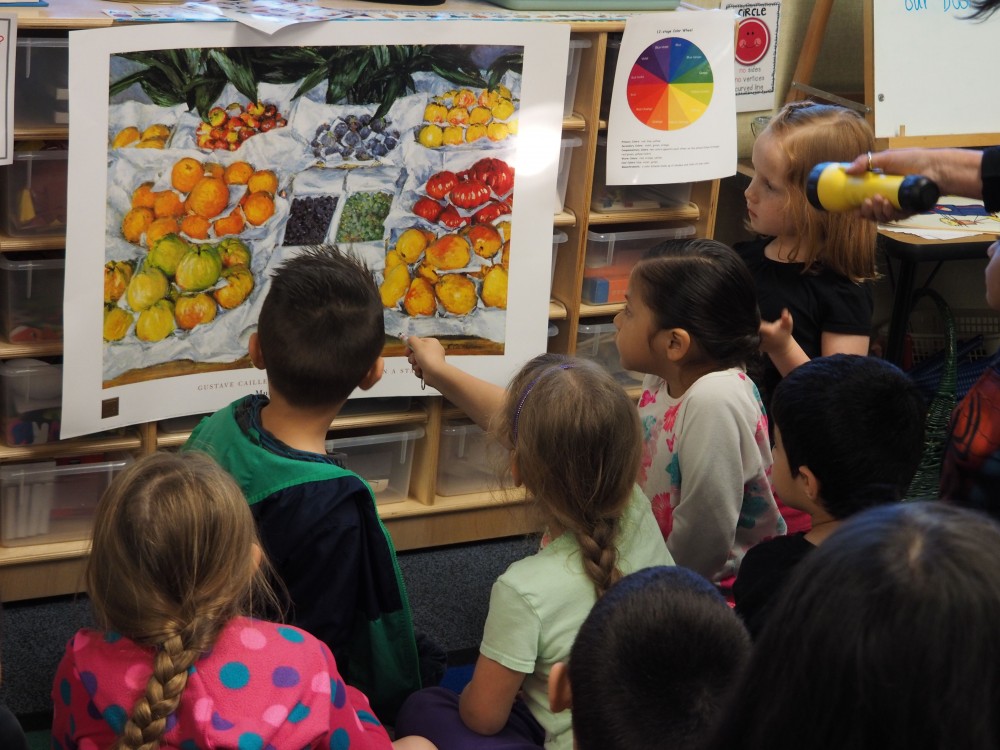
April 9, 2015
18 comments.
Art lessons for pre-kindergarten students are moving beyond finger paints and into the worlds of van Gogh, da Vinci and Rivera.
Teachers in a number of districts in California are using classic works of art to inspire some of the youngest students to observe closely, think critically and discuss respectfully – all key elements of the Common Core approach to learning.
By looking closely together as a class at a Picasso or a Cezanne, 4- and 5-year-olds are learning how to observe and translate their thoughts into language and listen and respond to multiple perspectives.
This approach for K-12 students was developed about 20 years ago by the co-founders of Visual Thinking Strategies , a nonprofit based in New York that provides training in the method to schools and art museums. More recently, the nonprofit has introduced the concept to pre-K classes.
Liv Ames for EdSource
Alexander Chitay, a transitional kindergartner, uses a laser light to point out what he wants to discuss about the painting.
It appears to be growing in its appeal since the introduction of the Common Core standards adopted by California and 42 other states. During the past two years, the nonprofit’s national trainings of educators have doubled, said Amy Chase Gulden, national program director. The nonprofit has trained teachers in more than 70 schools in the Bay Area, Northern California and Los Angeles.
Research studies on the method have shown that students in classes where the visual thinking program was used had a better understanding of visual images, exhibited stronger growth in math and reading, and showed better social-emotional growth than students in classes that did not use the program. The approach was particularly effective for English learners.
The visual thinking method asks three questions of young students: What’s going on in this picture? What do you see that makes you say that? What more can we find?
This approach teaches students how to take the time to observe closely, describe what they see in detail and provide evidence for their observations, Gulden said, “the kinds of skills that the Common Core asks for.”
Such programs are part of a new movement in English language arts to develop visual literacy, said Kim Morin, a professor who teaches integrated art at Fresno State University.
“It kind of came in with the Common Core – a more holistic approach,” Morin said. “As society becomes more digital, it’s not enough to just be able to read words; we have to be able to read images.”
“We have to be able to look at an image and understand it, not just react to it,” she said.
Some districts, such as San Francisco Unified, were applying this method long before Common Core standards were adopted. When Elizabeth Levett, who teaches kindergarten at George Peabody Elementary in San Francisco, introduced the Visual Thinking Strategies program into her classroom about eight years ago, she said she saw the growth in her students’ language “right away from one lesson to the next.”
“They’ll start the year with ‘I see a ball,’” she said. “After that it snowballs. It’s amazing.”
“We’re giving them language they wouldn’t normally have in a context that is meaningful to them right in the moment,” said Elizabeth Levett, a kindergarten teacher at George Peabody Elementary in San Francisco.
Teachers respond to a student’s comment on a painting by paraphrasing the comment and taking it to the next level, Levett said. Perhaps a student will notice a figure. The teacher will then say, “so you are noticing this figure in the left-hand foreground of the painting?”
“We’re giving them language they wouldn’t normally have in a context that is meaningful to them right in the moment,” she said.
Donavon Quezada, 4, is looking closely at a painting in his transitional kindergarten class in Fresno.
It is important for the teacher to paraphrase the student’s comment in such a way that the student feels understood and the rest of the group can grasp what the student has said, Gulden said. Teachers have to let go of their agendas and ideas and follow the child, she said, another Common Core approach to learning.
Sometimes the student may be searching for a word and the teacher can restate the student’s idea using the word, she said.
The approach “builds vocabulary and fluency,” Gulden said. The method is particularly effective with recent immigrants, she said.
School psychologist Julie Montali also finds the method works well with English learners. Montali has an art degree and has been trained in the visual thinking method. She developed a similar curriculum for pre-K students at Fresno Unified with English language arts instructional coach Claudia Readwright.
“Kids act as language models for other kids,” Montali said. “Often another child is the best teacher.”
The open-ended approach to discussing the painting also equalizes the experience, she said. The art is new for everyone, sometimes including the teacher. The discussion of the ideas inspired by the art does not require prior knowledge, and there are no wrong answers. That makes it easier for shy students or those learning English to participate, she said.
Children also respond to the ideas of other students and learn to look at things from another person’s perspective, Montali said. They keep the discussion moving with minimal intervention from the teacher, the kind of self-directed learning emphasized by the Common Core.
In the process of discussing the paintings, the children learn how to have different opinions without rancor, Levett said. They use terms such as “I’m noticing” or “I want to build on what he said.”
Juliet James, who has been using the method to teach 2nd-graders at Old Adobe Elementary School in Petaluma for the past five years, said students are polite. “They’ll say, ‘I disagree with Karen because of this reason.’ They have to give the evidence,” she said.
Using high-quality artwork is also important, Morin said, particularly in terms of stimulating observations by the children.
“You can keep going back to a masterwork and see something different every time,” she said. “If it’s not a high-quality work, it doesn’t have that depth.”
Students in a transitional kindergarten class in Fresno talk among themselves about the work of art they just discussed as a class.
On a recent day, the transitional kindergarten students in Yvonne Stout-Barrett’s class at Figarden Elementary School in Fresno eagerly gathered around a print called “Fruit Displayed on a Stand” by the 19th century French artist Gustave Caillebotte. They began talking about what they saw, including shapes and colors. Building vocabulary by discussing shades such as magenta, carmine or chartreuse is one way talking about art builds more sophisticated language.
Teachers say they see the effect of the method in other subject areas.
Brian Harrigan, who teaches preschool students at San Francisco Unified, said that since he has used the visual thinking method, he notices the difference when he is reading a story to the children.
“They start describing things in the picture more fully,” he said.
Such close observations of art help children learn to visualize, which helps them when they begin to read, Morin said. “If you can visualize what you are reading, you are a stronger reader rather than just reading word-to-word,” she said.
The same methods of showing evidence for what you are thinking or saying can work with deconstructing a story or a mathematical graph, Gulden said.
James uses the method in teaching all subjects to her 2nd-graders, such as when she introduces the 100s number chart to discuss place value.
“They will talk about it being a grid, how each space is equal,” she said. “They will notice the numbers going across are 1 to 10. I then come in and say that the horizontal numbers are 1 to 10. Then they will notice the vertical numbers are counting by 10s.”
“Very often young children have an almost deeper perception of what they’re seeing,” said Fresno State professor Kim Morin. “They don’t have preconceptions. They don’t think: ‘I don’t get it.’”
Fresno has decided to implement the curriculum by adding it to a grade each year, beginning with preschool children last year and transitional kindergartners this year. The integrated approach will follow the children as they move through the K-12 system.
Starting young has its advantages, Morin said. “Very often young children have an almost deeper perception of what they’re seeing,” she said. “They don’t have preconceptions. They don’t think: ‘I don’t get it.’”
In a research paper on talking about art with young people, David Bell, an associate professor at the University of Otago in New Zealand, says that “children are less inhibited than many adults in their engagement with artworks.”
“They may be surprised, entertained, puzzled or challenged by what they see,” he said. “They are also likely to express their various responses to the works in exclamations, comments or conversations.”
Teachers laud the method for slowing things down in a fast-paced world and building on young children’s natural ability to learn through observing.
“Everyone is worried about kids having access to technology,” Levett said. “They’re too little. They need to learn how to look slowly, really observe. Everything in technology is click, click, click. This method hones the craft of looking deeply and really listening to each other.”
To get more reports like this one, click here to sign up for EdSource’s no-cost daily email on latest developments in education.
Share Article
Comments (18)
Leave a comment, your email address will not be published. required fields are marked * *.
Click here to cancel reply.
XHTML: You can use these tags: <a href="" title=""> <abbr title=""> <acronym title=""> <b> <blockquote cite=""> <cite> <code> <del datetime=""> <em> <i> <q cite=""> <s> <strike> <strong>
Comments Policy
We welcome your comments. All comments are moderated for civility, relevance and other considerations. Click here for EdSource's Comments Policy .
Penny Higgins 3 years ago 3 years ago
This sure has enlightened me more about this specific aspect. Thank you! Please see also my blog Why Kids Need Exposure to Children’s Literature
Cynthia Silhan 4 years ago 4 years ago
I frequently do art with my young students. I love how this article made me think of the benefits of art, such as building language and vocabulary in our young students.
Victoria Oderinde 4 years ago 4 years ago
Children’s creativity expands through art appreciation.
Thanks for this well-researched article.
Dennis Sanchez 5 years ago 5 years ago
I thought it was cool when you mentioned that teachers are using art to help their students think critically. My daughter loves going to art museums and looking at all the different paintings. Every time there is an art exhibition, she always wants to spend all of her time there.
Nicole Tingson 5 years ago 5 years ago
This should be preached in kindergarten and schools, in churches, so important for a child’s well being!
Bunny garrett 5 years ago 5 years ago
Absolutely fantastic great program
Rhianna Hawk 5 years ago 5 years ago
It's really great to know that teachers are working hard to incorporate arts into children's learning to create more enriching learning activities, as you said. I'm going to be moving my family to a new city, and so our daughter is going to be starting kindergarten in an entirely new city that I don't know very well, so finding the best learning experience for her will be important to me. We'll definitely have to look … Read More
It’s really great to know that teachers are working hard to incorporate arts into children’s learning to create more enriching learning activities, as you said. I’m going to be moving my family to a new city, and so our daughter is going to be starting kindergarten in an entirely new city that I don’t know very well, so finding the best learning experience for her will be important to me. We’ll definitely have to look into those Visual Thinking Strategies you talked about, as well, and see what schools are incorporating them.
Caroline Gallagher Lavery 6 years ago 6 years ago
Excellent! I have been teaching art and design to pupils aged 11-18 years old in Northern Ireland for 28 years and have always been a firm believer that children should be encouraged to evaluate their own work and others using visual language words. With practice children learn to express their ideas through observing in a natural way and quickly gain confidence to use a range descriptive words to confidently articulate a deeper perception of what they’re seeing.
Asasa Academy 6 years ago 6 years ago
Art is a creative way to help our kids to learn in a better way. Nice post and thanks for sharing the information. And yes thanks again for sharing the research studies. Very helpful.
Suzanne 7 years ago 7 years ago
You make a great point about the need to slow down, look deeply, and observe. Impulsive clicking in today's internet age will replace in depth analysis and appreciation of art in the next generation - if we let it. We felt it was so important to get young children exposed to classic works of art that we created several fine art puzzles to get classic works by Renoir, Matisse, & Thomas Cooper Gotch. … Read More
You make a great point about the need to slow down, look deeply, and observe. Impulsive clicking in today’s internet age will replace in depth analysis and appreciation of art in the next generation – if we let it.
We felt it was so important to get young children exposed to classic works of art that we created several fine art puzzles to get classic works by Renoir, Matisse, & Thomas Cooper Gotch. (We write more on the topic in our article at Amazing Wiz Kids’ blog.)
Aklim 7 years ago 7 years ago
My comment is that we should have to learn as much as possible…!
Gary Ravani 9 years ago 9 years ago
A "return" to art, as well as the social studies, in the schools is a pretty clear indicator of how far off track the self-styled reformers have been able to lead the system, ably assisted by a compliant media and politicians of course. The question society must ask itself, is why were they abandoned in the first place? I note two articles in this week's NY Times, Sunday Review. Both on the same page, "Best, Brightest--And … Read More
A “return” to art, as well as the social studies, in the schools is a pretty clear indicator of how far off track the self-styled reformers have been able to lead the system, ably assisted by a compliant media and politicians of course. The question society must ask itself, is why were they abandoned in the first place?
I note two articles in this week’s NY Times, Sunday Review. Both on the same page, “Best, Brightest–And Saddest,” by Frank Bruni and, “Where Are the Teachers of Color?” by Motoko Rich. The latter article was featured as a “link” by EdSource in the daily update earlier this week.
[Full disclosure: Motoko is a former student of mine, briefly, when she was in middle school. I was teaching Developmental Reading and Motoko had little need for “development” in those skills even then. She went on, as I recall, to attend Lowell in SF.]
In the Bruni article, he talks about “sentries” being stationed around Palo Alto near the commuter train tracks to prevent teenagers from committing suicide. There has been a “cluster” of such incidents of late in the “heart of Silicon Valley.” He cites research done showing thoughts of suicide are more and more prevalent in teenagers around the country. He makes the inference that more and more academic pressure put on students may be a causal factor in this phenomenon. He states: “They grow up with ‘AP’ classes galore, convinced that their futures hinge on perfect SAT scores and preternatural ‘GPAs.'” Bruni quotes a former dean at Stanford who lives in Palo Alto: “There’s something about childhood itself in Palo Alto, and communities like it, that undermines the mental health and wellness of our children.”
Bruni has a warning for another group too: “Does a hovering, exactingly prescriptive parenting put them in unforgiving boxes and prevent them their true selves and their true grit?”
Motoko’s article goes into the threats to another vital component of our schools, the teachers, and teachers of color specifically: “They are disproportionally assigned to to schools with large populations of children from low-income families and are subjected to ‘student discipline problems and lack of resources and lower salaries, with often more top-down and scripted curricula…”
It is a very good thing that schools may be allowed to turn their attention to other subjects than those the Titans of Tech have been demanding and that students may be able to explore their other talents not measured by any test score. And this for both ends of the academic and economic ladder. As Motoko’s article points out scripted, and demeaned, curricula are more common at schools with more disadvantaged students under threat of sanctions from low math and ELA scores, but at the other end (and I’ll get some argument here) AP classes are highly scripted also, and the teaching is definitely “to the test.”
Don 9 years ago 9 years ago
Teachers are walking right down the garden path as they march their students into the testing rooms day after day between now and May and to take what test? Art and history? No, math and ELA, just as they have been doing for years under the failed NCLB and PSAA requirements of law, only now they'll walk that walk under the auspices of CCSS. There is one important difference though. These … Read More
Teachers are walking right down the garden path as they march their students into the testing rooms day after day between now and May and to take what test? Art and history? No, math and ELA, just as they have been doing for years under the failed NCLB and PSAA requirements of law, only now they’ll walk that walk under the auspices of CCSS. There is one important difference though. These new tests will be used for teacher evaluations in years to come. Teachers are in!
Chelsea Guray 9 years ago 9 years ago
Thank you for this highly promising strategy. I will definitely apply this on my upcoming Summer Camp with 8-grader students.
Thank you so much for this highly promising strategy. I will apply this to my upcoming Summer Camp with my 8-grader students.
Margie Stratford 9 years ago 9 years ago
Elizabeth Levett speaks to the heart of every actively involved grandparent of today's children growing up in this highly tech-oriented world. So often we are the ones who are able to sit in an unhurried spot, maybe a tree house or the floor of a child's room and really have a conversation and hear those beautiful thoughts and ideas come out. I love asking my young ones to "tell me about your drawing", or "when … Read More
Elizabeth Levett speaks to the heart of every actively involved grandparent of today’s children growing up in this highly tech-oriented world. So often we are the ones who are able to sit in an unhurried spot, maybe a tree house or the floor of a child’s room and really have a conversation and hear those beautiful thoughts and ideas come out. I love asking my young ones to “tell me about your drawing”, or “when did you first find this idea for your painting”. I hear absolutely pure and original words never spoken before and they enrich me to my common core! Bless the educators who encourage creative and critical thinking in these youngsters! Margie Levett Stratford
Susan Striket 9 years ago 9 years ago
In my books " Meet the Masters" and "Young at Art " I wrote about how to teach preschool through age 6 using great masters of both art and literature. By the way, "Young at Art" is a registered trademark. I own it. Young children really can relate to contemporary art, and this is an ideal time to familiarize children with modern masters. They REALLY "get" Jackson Pollack! Read More
In my books ” Meet the Masters” and “Young at Art ” I wrote about how to teach preschool through age 6 using great masters of both art and literature. By the way, “Young at Art” is a registered trademark. I own it.
Young children really can relate to contemporary art, and this is an ideal time to familiarize children with modern masters. They REALLY “get” Jackson Pollack!
Eric Kamander 9 years ago 9 years ago
I find this whole topic so fascinating. I never considered myself an art fan, and neither did my kids, but when we vacationed in D.C. we were all surprised how much more fun we had at the Hirshhorn Museum and Sculpture Garden than we did at the Air and Space Museum. http://t.co/FUi21C7GVE
EdSource Special Reports

Texas-style career ed: Ties to industry and wages
State funding for Texas State Technical College depends on graduates’ pay. Majors include robotics, welding, cybersecurity and cooking.

California eyes master plan to transform career ed
The goal is to support life-long learning at schools and workplaces.

Fewer than half of California students are reading by third grade, experts say. Worse still, far fewer Black and Latino students meet that standard. What needs to change?

For the four men whose stories are told in this documentary, just the chance to earn the degree made it possible for them to see themselves living a different life outside of prison.
EdSource in your inbox!
Stay ahead of the latest developments on education in California and nationally from early childhood to college and beyond. Sign up for EdSource’s no-cost daily email.
Stay informed with our daily newsletter
Calculate for all schools
Your chance of acceptance, your chancing factors, extracurriculars, high school elective recommendations.
I need some help choosing electives for my senior year of high school. What are some interesting and valuable electives you've taken or heard about? I'm open to any suggestions, but I'm especially interested in courses that could help prepare me for college or expand my horizons!
Choosing electives for your senior year can be an exciting opportunity to explore new interests and prepare yourself for college. Ideally, electives should complement your core academic studies while also showcasing your commitment to personal growth and intellectual curiosity. Here are some electives you may want to consider:
1. Foreign Language: If you haven't already, taking a foreign language course can enrich your understanding of different cultures and provide valuable language skills. Many colleges have foreign language requirements, so getting a head start in high school can be advantageous.
2. Creative Writing or Journalism: If you enjoy writing and would like to improve your skills, these courses can provide a great opportunity to explore various styles and genres of writing, as well as develop critical thinking and analytical skills.
3. Computer Science or Programming: As the world becomes increasingly reliant on technology, having a basic understanding of coding and computer science can be beneficial. It can also open doors to various career opportunities in the fast-growing tech industry.
4. Personal Finance or Economics: These courses can teach you important financial concepts such as budgeting, saving, investing, and credit management. Understanding the basics of personal finance and economics can set a strong foundation for financial success in the future.
5. Art or Music: If you have a passion for visual or performing arts, taking an art or music class can help you develop your skills and showcase your creativity. Engaging in creative pursuits has also been linked to reduced stress and improved well-being.
6. Psychology or Philosophy: These subjects encourage critical thinking and reflection as well as help you develop a deeper understanding of human behavior, ethics, and societal values.
7. Debate or Public Speaking: If you want to improve your communication and presentation skills, a debate or public speaking course can be an excellent choice. These skills are useful in college and beyond for all types of careers.
8. Internship or Independent Study: Depending on your school, you may have the option to pursue an internship or independent study in an area you're passionate about. This can be a wonderful way to gain practical experience and deepen your understanding of a specific subject.
Remember that your choice of electives should reflect your interests and goals. Don't be afraid to explore new subjects and step out of your comfort zone. In doing so, you'll increase your chances of discovering hidden talents, expanding your horizons, and better preparing yourself for college and beyond. Good luck, and have fun with your selections!
About CollegeVine’s Expert FAQ
CollegeVine’s Q&A seeks to offer informed perspectives on commonly asked admissions questions. Every answer is refined and validated by our team of admissions experts to ensure it resonates with trusted knowledge in the field.

- 5 Ways Art Improves Your Thinking
- Community Engagement
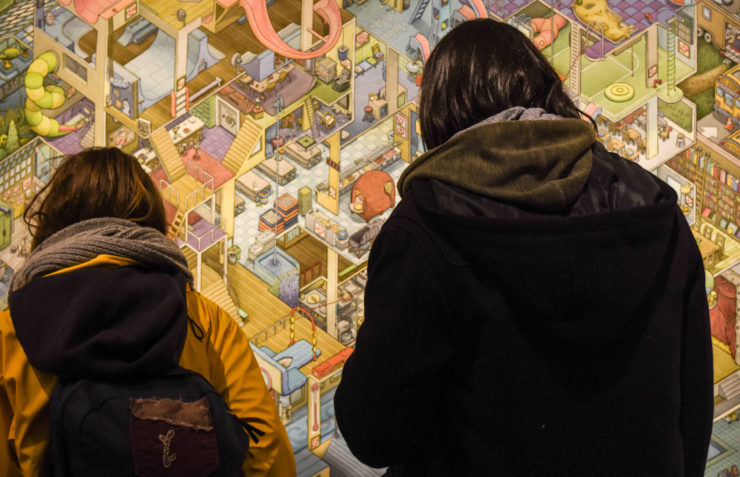
Creating art has many benefits, but did you know it can even affect your thinking? Check out a few ways we found on how art improves your cognitive function.
1) art can broaden your perspective. .
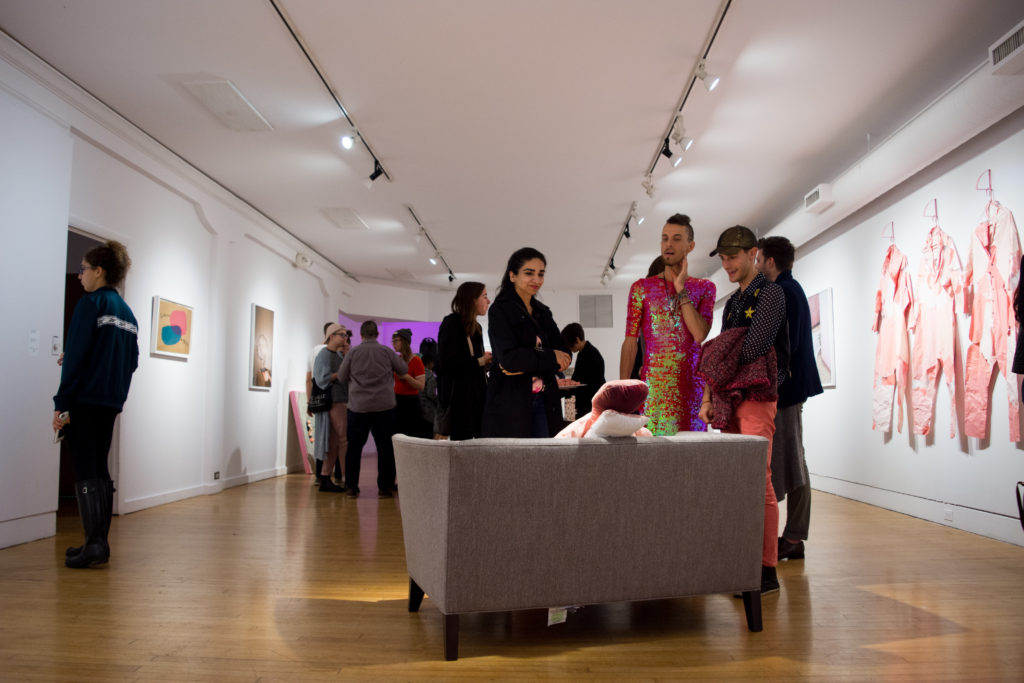
2) Art, particularly art education, can increase your observation skills .
According to Walden University , “Art education teaches students to observe the world more closely. Good art is often complex, layered with multiple elements and meanings. It takes time to find, examine, and consider the numerous details that constitute most works of art.”
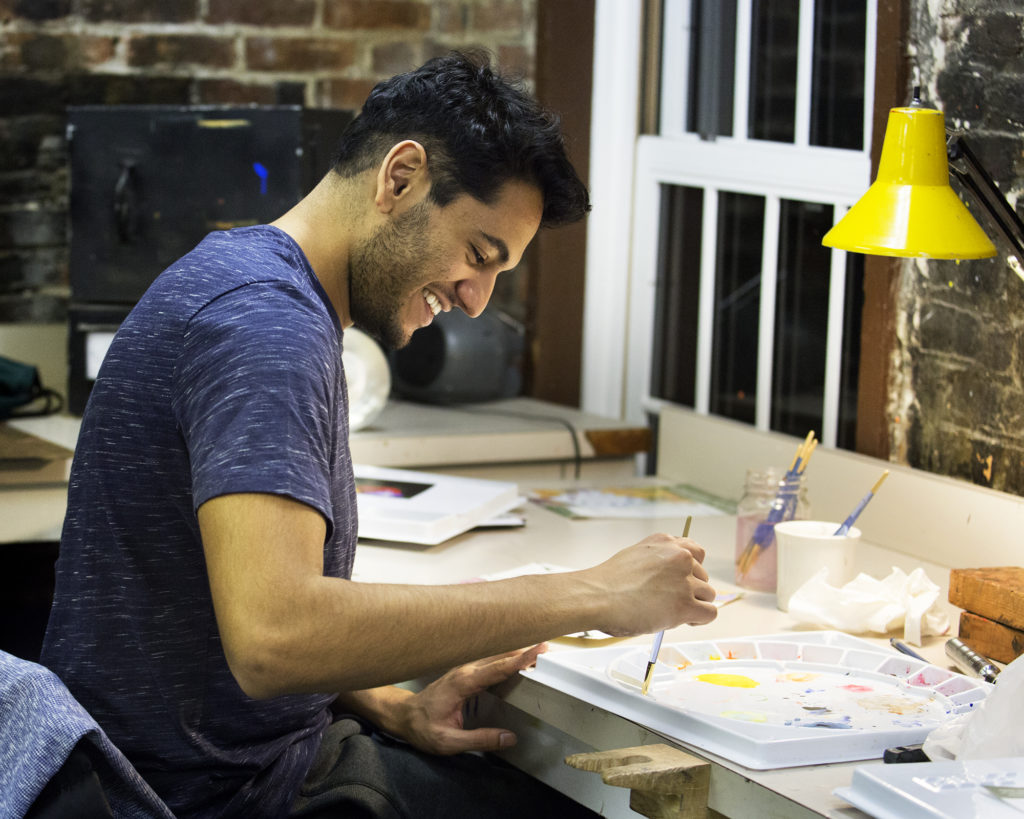
3) Art can improve your ability to empathise .
“Exposure to the arts also affects the values of young people, making them more tolerant and empathetic. We suspect that their awareness of different people, places, and ideas through the arts helps them appreciate and accept the differences they find in the broader world,” according to ED WEEK.
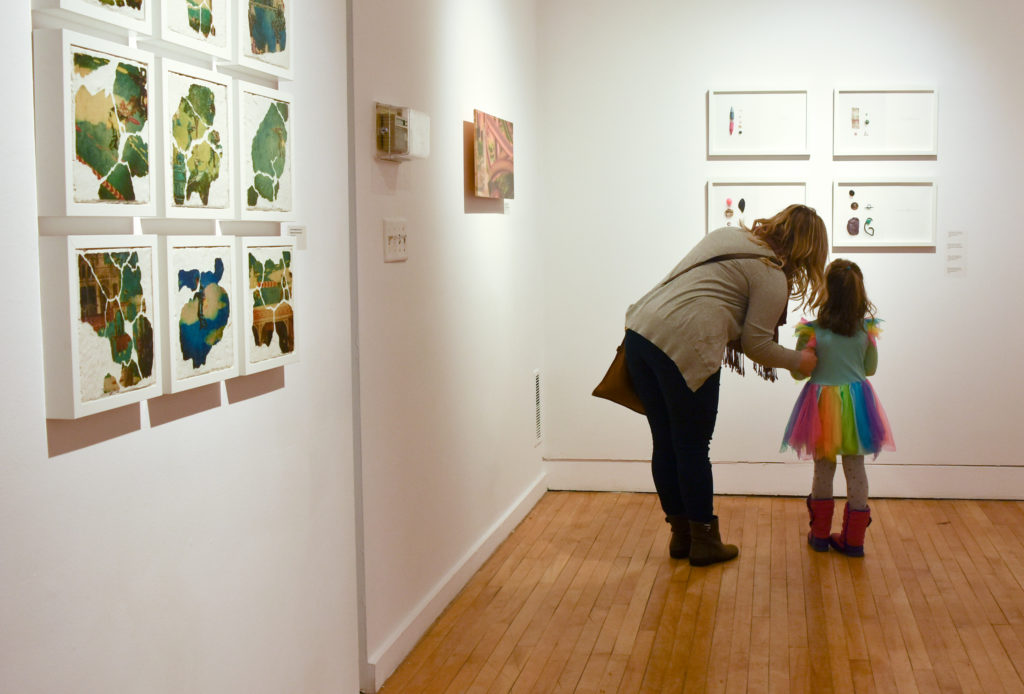
4) Viewing art such as a live performance, can make you feel connected.
“ Our brains like to share emotions with others. This is just one reason that seeing a live performance — a concert, play, opera, etc. — is a neural rush. With our brain’s capacity for emotion and empathy, even in the wordless art of dance we can begin to discover meaning — and a story,” according to the Washignton Post.
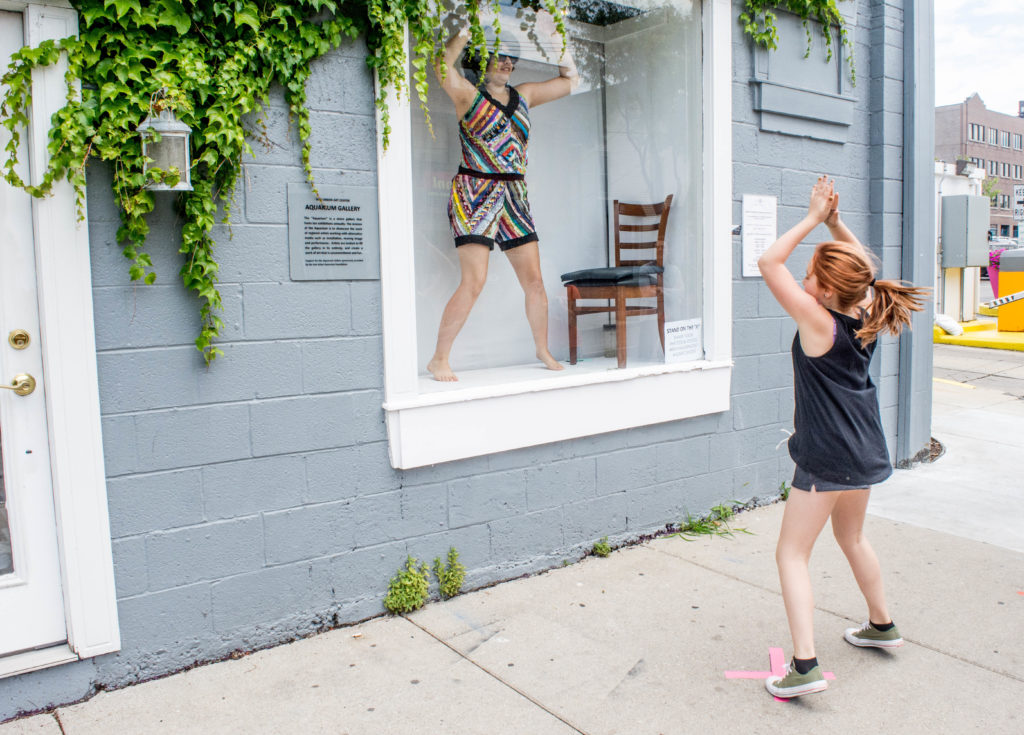
5. Creating art can be incredibly healing .
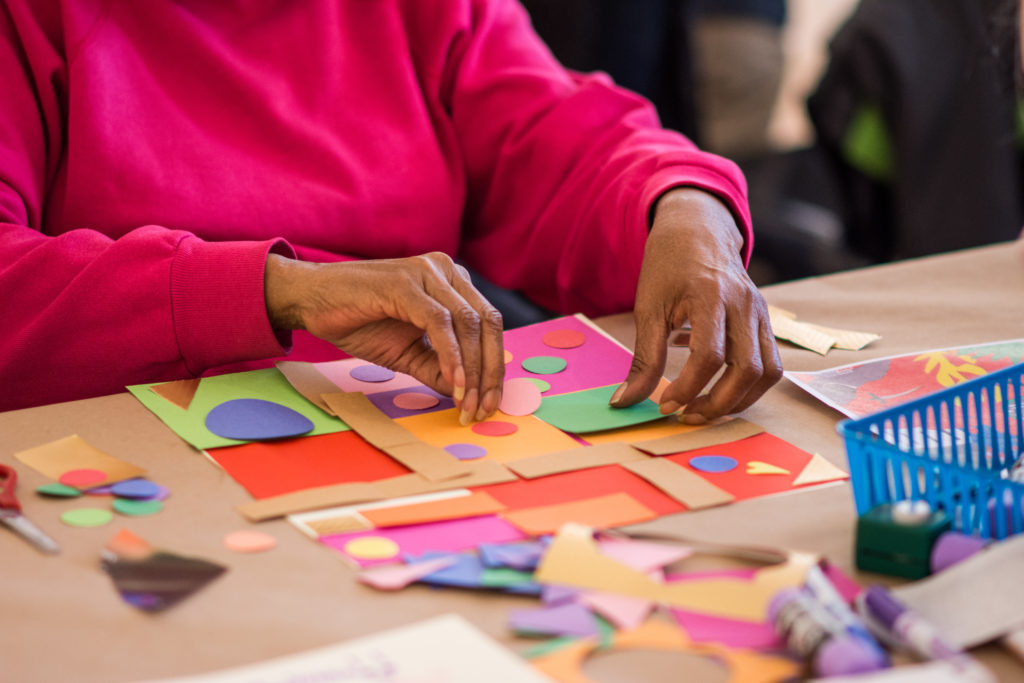
Written by A2AC
View All: A2AC
Comments are closed.
- Art in Public
- December 2022
- November 2022
- October 2022
- September 2022
- August 2022
- February 2022
- January 2022
- December 2021
- November 2021
- October 2021
- October 2018
- September 2018
- August 2018
- February 2018
- January 2018
- December 2017
- February 2017
- November 2016
- October 2016
- September 2016
- February 2016
- Commitment to Diversity & Justice
- Land Acknowledgement
- PZ Doctoral Fellows
- Our First 50 Years
- Art & Aesthetics
- Assessment, Evaluation & Documentation
- Civic Engagement
- Cognition, Thinking & Understanding
- Collaboration & Group Learning
- Digital Life & Learning
- Disciplinary & Interdisciplinary Studies
- Ethics at Work
- Global & Cultural Understanding
- Humanities & Liberal Arts
- Leadership & Organizational Learning
- Learning Environments
- Making & Design
- Science Learning
- Early Childhood
- Primary / Elementary School
- Secondary / High School
- Higher Education
- Adult & Lifelong Learning
- Organizational Learning
- Agency by Design
- Aligned Programs for the 21st Century
- Artful Thinking
- Arts as Civic Commons
- Causal Learning Projects
- Center for Digital Thriving
- Citizen-Learners: A 21st Century Curriculum and Professional Development Framework
- Creando Comunidades de Indagación (Creating Communities of Inquiry)
- Creating Communities of Innovation
- Cultivating Creative & Civic Capacities
- Cultures of Thinking
- EcoLEARN Projects
- Educating with Digital Dilemmas
- Envisioning Innovation in Education
- Global Children
- Growing Up to Shape Our Place in the World
- Higher Education in the 21st Century
- Humanities and the Liberal Arts Assessment (HULA)
- Idea Into Action
- Implementation of The Good Project Lesson Plans
- Inspiring Agents of Change
- Interdisciplinary & Global Studies
- Investigating Impacts of Educational Experiences
- JusticexDesign
- Leadership Education and Playful Pedagogy (LEaPP)
- Leading Learning that Matters
- Learning Innovations Laboratory
- Learning Outside-In
- Making Ethics Central to the College Experience
- Making Learning Visible
- Multiple Intelligences
- Navigating Workplace Changes
- Next Level Lab
- Out of Eden Learn
- Pedagogy of Play
- Reimagining Digital Well-being
- Re-imagining Migration
- Signature Pedagogies in Global Education
- Talking With Artists Who Teach
- Teaching for Understanding
- The Good Project
- The Good Starts Project
- The Studio Thinking Project
- The World in DC
- Transformative Repair
- Visible Thinking
- Witness Tree: Ambassador for Life in a Changing Environment
- View All Projects
- At Home with PZ
- Thinking Routine Toolbox
- Zero In Newsletters
- View All Resources
- Professional Development
Search form
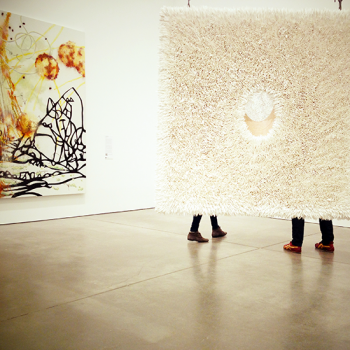
You are here
The intelligent eye: learning to think by looking at art, resource summary.
In this unique contribution to the literature of arts education, David Perkins explains why looking at art requires thinking and presents an argument for the value of looking at art as a means to cultivate thinking dispositions. Drawing on research in cognition, he explains why art is uniquely qualified to support habits of reflective thinking. ISBN: 978-0892362745
Resource Links
- Privacy Policy
- Harvard Graduate School of Education
- Harvard University
- Digital Accessibility Policy
Copyright 2022 President and Fellows of Harvard College | Harvard Graduate School of Education
Subscribe to Our Mailing List
Email Address
By submitting this form, you are granting: Project Zero, 13 Appian Way, Cambridge, Massachusetts, 02138, United States, http://www.pz.gse.harvard.edu permission to email you. You may unsubscribe via the link found at the bottom of every email. (See our Email Privacy Policy for details.) Emails are serviced by Constant Contact.
- Skip to main content
- Skip to footer
Association of Science Communicators
Giving science a voice.
Search Association of Science Communicators
How teaching arts can have a profound impact on scientific and critical thinking skills.
Jul 29, 2021 · Dennis Wesley
Advocates of the arts often talk about their transformative potential—for both the individual learner or practitioner and society at large. This is especially true in the context of improving scientific and critical thinking skills. Approaches employed in the arts can enable scientists, science communicators, and the general public to critically examine questions of method (scientific and otherwise), knowledge, and power. In doing so, the arts not only demystify aspects of the scientific method but can also inspire more young, keen minds to take up science.
Formal interdisciplinary training is one of the best ways to bridge the gap between the arts and the sciences. Today, “the Arts” and “the Humanities” are used interchangeably, and they are extremely wide-ranging in terms of their scope and concerns. In addition, most good Arts/Humanities programs today actively aim to bring the arts and the sciences closer. Many interdisciplinary modules are organized to this end. These modules would be a great way for scientists and science communicators to explore different ways of examining the scientific method.For instance, though relatively unknown outside of the humanities, Feminist Standpoint Theory (FST) is one of the approaches employed to directly examine questions of method, power, and knowledge. By doing so, the approach enables researchers to better understand what it means to adopt a scientific approach. In essence, FST highlights that the arts represent modes of critical inquiry and scrutiny without which the sociocultural dimensions of the human condition, including scientific undertakings, cannot be fully appreciated. In addition, interdisciplinary training is a two-way road: it enables scientists and science communicators to enrich the arts as well.
At the same time, it’s necessary to remember the following. First, approaches aimed at bridging the gap between the arts and sciences are inevitably interdisciplinary. Disciplinary perspectives such as “ Philosophy of Science ” and “ Sociology of Science ” are especially noteworthy in this context. Indeed, one of the main aims of these disciplines is to demystify not just crucial aspects of the scientific method but also popular claims about the nature of the method.
Second, qualities such as critical thinking and exemplary reasoning are associated more with the sciences. The arts are often seen as a collection of lesser disciplines, ones that don’t value incisive thinking as much, or even as a set of disciplines with little requirement for incisive thinking. As a result, interdisciplinary education is considered superfluous in some quarters. Nonetheless, studies have shown that interdisciplinary approaches enable learners to “recognize bias, think critically, tolerate ambiguity, and acknowledge and appreciate ethical concerns.” Incidentally, aspects such as “ambiguity” and “ethical concerns” are not especially associated with the scientific method, or with the doing of science. Though the scientific method is partly based on eliminating ambiguity wherever possible, young students and scientists alike are not especially trained to cultivate the ability to tolerate ambiguity and assess ethical concerns. This is one area that can be improved by interdisciplinary training and better science communication. Though the elimination of ambiguity has undoubtedly been one of the main reasons for the method’s rampant success, it must be remembered that the sciences are routinely harnessed to address human affairs, which, as is well known, are deeply ambiguous and complex. In other words, ambiguity necessitates ethical and sociological consideration. This is of course not to say that students and practitioners of the sciences cannot develop the aforementioned qualities without interdisciplinary training. In fact, many earnest practitioners develop these traits without additional help. This is merely to point out that the sciences, too, can benefit from interdisciplinary training. In other words, interdisciplinary training can accomplish the following: it can make scientists and science communicators more aware of their biases, standpoints, and innate preferences (if any), which is an important step toward presenting a more accurate picture of the scientific method and the nuances of doing science—both to oneself and to the general public. How Exactly Can The Arts Improve or Complement the Sciences? Feminist Standpoint Theory is only one way to understand what an “arts education” means. FST argues that the pursuit of objectivity, value neutrality, and falsifiability does not automatically ensure science’s transcendence from the realm of human affairs. Indeed, some philosophers and sociologists of science argue that science itself is a deeply human affair. Which means science, too, involves ambiguity and uncertainty, and must therefore be necessarily subjected to scrutiny. Accordingly, it has been argued that science, much like human affairs, should be examined from ethical, philosophical, anthropological, and sociological perspectives. This is of course not to say that all scientific findings are ambiguous or questionable. Rather, it is to shed light on the need to scrutinize claims about science’s “universal objectivity” and its capacity to usher in continuous, irreversible progress: another role science communicators are especially suited for.
Besides, key aspects of the scientific method (such as systematization, falsifiability, and the ability to be communicated intersubjectively) are not limited to science; they are essential for any type of critical inquiry. In addition, the scientific method concerns “the presentation” of scientific results or findings more than the “doing of science” itself.
It is also important to ask if science really does engender continuous, irreversible progress. If it does, is it at all tenable to pursue continuous progress? What are the impacts (negative and positive) of this pursuit, and how do we deal with the various, sometimes competing, conceptions of progress?
In this context, FST not only examines aspects such as objectivity and methodology but also deals with the more basic question of knowledge. The theory is not anti-science: it has influenced contemporary debates about both the sciences and the arts, and its focus on the question of method has enriched both disciplines.
FST is a very rich body of work, one that cannot be adequately probed in this article. But it remains one of the best examples of how the arts—especially philosophically and sociologically oriented approaches—can reframe debates and produce new insights.
In essence, FST shows that “the arts” stands for modes of inquiry and scrutiny, and these modes are typically multidisciplinary. The arts employ many perspectives, ranging from the philosophical, sociological, historical, to the scientific.
Sociology, Anthropology, and Economics are excellent examples in this regard. They are all disciplines with one foot in the sciences and the other in the arts. Sub-disciplines such as Biological Anthropology and Physical Anthropology draw heavily from the natural sciences. Cultural Anthropology, on the other hand, relies more on what anthropologists call “ thick description ,” a way of understanding how humans ascribe meaning to their lives and the contexts that surround them. In essence, it is a way of enabling outsiders to understand how people in specific societies or cultures make and seek meaning.
If this sounds abstract, think of how scientific and technological innovations are perceived by different cultures. For instance, some cultures may reject a technology widely considered positive and game-changing. Understanding how these cultures perceive this technology is essential not only for anthropologists but also for scientists and developers involved in the production of the technology. In other words, anthropological research findings are invaluable feedback for scientists. This is not all that far-fetched a concept. After all, beta versions of software also accomplish similar ends. Today, as Earl Babbie argues, “ social research ” necessarily requires multiple disciplinary perspectives. In fact, an essential characteristic of “the social” is that it cannot be reduced to a single, all-encompassing perspective. Social research draws from the scientific method, from anthropological and economic perspectives among many others, and employs quantitative and qualitative approaches.
FST—and indeed interdisciplinary approaches, in general—brings scientists, science communicators, and researchers affiliated with other disciplines together. By doing so, it enables them to work in concert and develop a better understanding of “method” and also enable the general public to enhance their critical thinking and scientific skills.
Pitch & Contribute
A science blog co-editors.

Reader Interactions
Leave a reply cancel reply.
Your email address will not be published. Required fields are marked *
Save my name, email, and website in this browser for the next time I comment.
Apply to Teach a Course
Thank you for your interest in teaching a course within the Science Talk community! Courses taught by Science Talk community members for community members will enable easier dissemination of science communication best-practices, and help scicomm grow as a profession. We want to help this community thrive, and are glad you are a part of it.
In offering courses, Science Talk provides the platform for organizing your course & registering students, course support, and access & marketing to our community of science communicators. We charge for course registrations and split net revenue from registrations on a 50:50 basis with instructors. All course IP remains the property of the instructor. We hope this arrangement will help support facilitators in our community in their work, and also support the growth of our organization & community.
Please, complete the form below. We will use this information to assess the proposed course for inclusion in our catalog of offerings. We review proposals on an ongoing basis, and will get back to you soon!
Science Talk is a 501 (c)(3) non-profit organization (Tax ID: 82-2076772). We are a volunteer-run organization and depend entirely on donors and sponsors for operational support. Donate now .

- Conferences
You are using an outdated browser. Please upgrade your browser to improve your experience.
Search Kids Discover
Art appreciation for kids & critical thinking.
May 8, 2023 by Julie Knutson
Art Appreciation for Kids
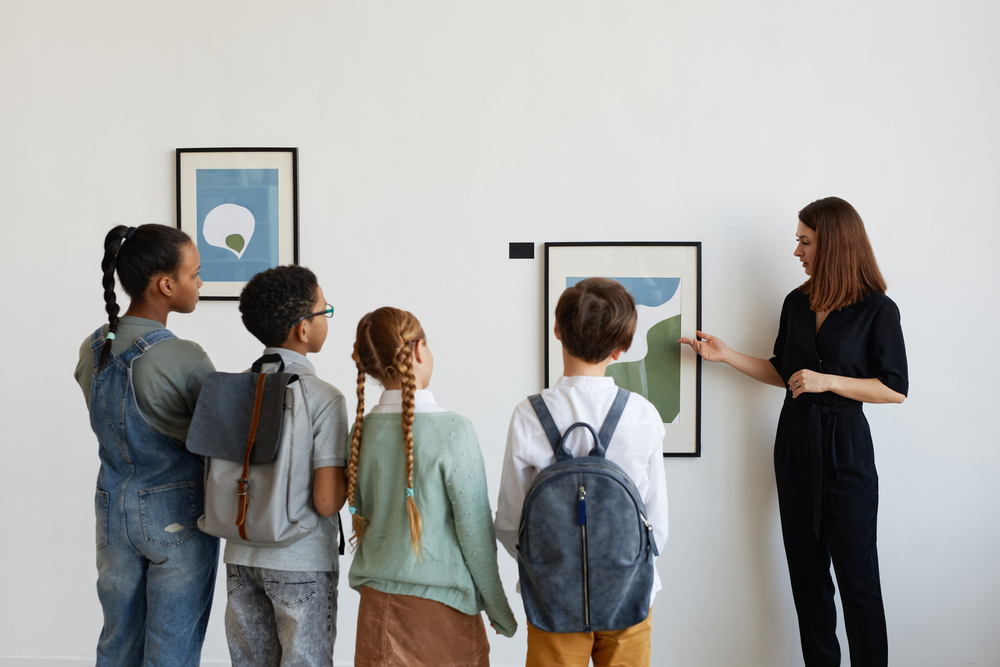
Two seconds. Ten seconds. Seventeen seconds. Thirty-two-and-a-half seconds . . . estimates of the average amount of time that museum-goers spend in the company of a given painting. These numbers testify to the difficulty of being fully attentive to art, even for adults who voluntarily enter the museum’s hallowed halls.
So is there a way to help students escape the cycle of looking without really seeing and to encourage meaningful engagement with art? How can we as teachers cultivate visual literacy and art appreciation for kids, and what’s the value in doing so?
Why look at art?
With programs perennially on school district chopping blocks, it’s worth revisiting the benefits of art education. Educational philosopher Maxine Greene notes that the arts make the full range of human experiences accessible. Whether ambling down a road less travelled with Robert Frost or strolling through a Parisian park with the Impressionists, art sparks imaginings of the real and fictional lives of others. Beyond this, experiencing art drives students to follow their own creative impulses, fostering self-understanding and empowerment. It also molds active learners who think before deeming an object “good” or “bad.” This skill — analyzing before judging — is an important one that transfers to other realms.
Arguably, teaching visual literacy holds another value for twenty-first century students — learning to be mindful and in the moment. Closely examining a painting, photograph, film, or sculpture offers an antidote to the near-constant stimuli with which children are bombarded, allowing kids to slow down through exercises that require time, discipline, and patience.
Engagement, response, and evaluation
How do you get kids to focus on an art object for more than two, ten, seventeen, or thirty-two-and-a-half seconds? Guiding students through a process of engagement, response, and evaluation creates more meaningful encounters with art.
To engage students with art, ask them to simply look at an image and name what they see. Whether done quietly and in writing or in conversation, this activity encourages students to interact with objects beyond a fraction of a second. To demonstrate that each person brings a unique perspective to a work, have each member of the class share what they notice. This process shows that discussing art with others can reveal new and previously unseen dimensions of it.
Next, have students respond to the object. How did it make them feel? What do they know about the time and place in which it was made? Who are the subjects and what are the themes? In this phase, students apply their existing skills and knowledge, bridging topics from a range of subject areas.
Finally, evaluate. Based on what students know about the work’s context, ask them to explain what its appeal would have been for audiences during the time period in which it was made. As a follow-up, analyze whether or not the object holds that same power today.
Working through this three-step process of engagement, response, and evaluation empowers students to move past superficial reactions to thoughtful critique of art. In so doing, students begin to look and see, visually engaging with art in ways that are anything but cursory.
Countless resources are available on visual literacy and incorporating art into classroom teaching. Here are a few to get you started:
Diaz, Gene and Martha Barry McKenna (eds.). Teaching for Aesthetic Experience. Boston: Lesley University Series in Arts & Education, 2004.
Ewald, Wendy. I Wanna Take Me a Picture : Teaching Photography and Writing to Children. Boston: Beacon Press, 2002.
Greene, Maxine. Releasing the Imagination: Essays on Education, the Arts, and Social Change. San Francisco: Jossey-Bass, 1995.
Kohl, Herbert R. and Tom Oppenheim (eds.). The Muses Go to School: Inspiring Stories About the Arts in Education. New York: The New Press, 2012.
Kids Discover Kids Discover Online Art Appreciation for Kids
Julie Knutson strives to incorporate art and social justice themes into the history classroom. After fifteen years of city-hopping — with stints in New York, Philadelphia, London, Washington, D.C., and Houston — she recently returned to her native Illinois, where she lives with her husband and young son.
You May Also Like


Leonardo da Vinci
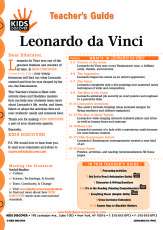
Already a Member, Log In:
Register below:, what best describes me.
Please send me Free Resources, Special Deals and Promotions.
Secure Server - We value your privacy. kidsdiscover.com will not sell or rent your email address to third parties
Lost your password?
Don't have an account sign up now, it's free..
- Lost password

Using Visual Arts to Foster Creative Thinking Skills
“A drawing is the three-way relationship between substance, surface and body. It activates the relationships between the eye and the hand, the hand and the tool, the body and the drawing surface. The elements of the drawing itself, the drawing marks on the empty page and between the eye of the artist and what lies beyond what the artist can actually touch.” Amy Sillman
“ I am not creative ” – “ I can’t draw !”, are the most common reactions I encounter when people learn that I’m working as an artist. Regrettably, the main focus of art production appears to revolve around a “beautiful outcome”, the ability to draw or paint a stunning picture. You are either good or not and if you aren’t, why carry on?
This misconception results in the profound benefits of engaging with the visual arts on your emotional health, the fostering of creative thinking skills, and art as a tool to strengthen psychological resilience being mostly overlooked.
Both art appreciation and the actual creating of visual arts can have a significant impact on the development of a young person. In fact, your brain will benefit from engaging with art at any stage of your life and you neither have to be a good artist nor know a lot about art to reap the rewards from experiencing it.
“Creativity requires the courage to let go of certainties” – Erich Fromm
Creativity requires strong self-believe, the ability to persevere despite failure and setbacks, it’s about following an idea, an intuition, it requires untiring curiosity. Carrying on, despite of what other people might say or of what your peers might say. It’s about seeing information in a different light, putting unrelated elements together, noticing patterns, inconsistencies, using everyday experiences, getting inspired by anything and everything and the need to try things in a different way over and over again.
Although, you might have an end goal in view, the creative path won’t be linear and can’t always be planned out from start to finish. There isn’t one correct answer, more of an open-ended answer to an open-ended problem. Being creative involves failing a lot, failure is indeed not a bad outcome, failure makes you look at all the pieces in a new light, it requires you to look at them differently, you need to find a new way of solving your answers and posing your questions.
In line with an easy to follow universal marking and evaluation system, most school settings teach children to deal with problem solving in a specific way, including the need to follow certain steps and leading to one correct answer. As Dr. Zorana Ivcevic Pringle, a research scientist at Yale Centre for Emotional Intelligence, explains, “ If a task poses a question with a specific set of steps required to answer it, there is no space for creativity. ”
Another stumbling block in acquiring creative thinking skills is “creative mortification”, a term used by psychologist Ron Beghetto, describing an unwillingness or outright refusal to participate in any creative work after having experienced negative feedback on your work, and lacking the ability to deal with the resulting negative emotions felt. This usually happens to children at a very young age, when they find it more difficult to regulate their emotions and don’t yet have the necessary resilience to deal with this negative experience.
In my opinion, a young person losing faith in their artistic creativity early on, will very likely refrain from using the arts as a tool for acquiring creative thinking skills. As a result, they might be less likely to explore their own ideas in other non-art related areas, as their motivation for exploring creative thinking has been discouraged at an early age.
There are individuals, who from the outset have a highly creative mind, a talent or inborn creativity, which makes them explore the world in a different and more creative way. Being creative is part of who they are, their very essence. Studies researching the connection between attention and creativity have brought to light that truly creative individuals appear to have a “diffused or “leaky attention”, which translates into their having great difficulties in filtering out external sensory stimuli whilst trying to carry out cognitive tasks. In contrast, individuals with lower creative talent are able to block out distractions from their environment and give full attention to the task at hand.
Although having a “leaky attention” would be a real disadvantage in particular exam situations, it nevertheless leads to creative individuals being able to notice more in their environment and doing so on a continuous basis. They will notice things most people overlook; therefore, the creative mind has more information to play with and furthermore the ability to create new and unusual connections between various seemingly unrelated chunks of information.
The creative brain has the ability to better regulate thoughts and behaviours whilst being involved in a creative task, getting into a state of flow and in this setting tuning out all distractions. The psychologist Mihaly Csikszentmihalyi described flow as “ being completely involved in an activity for its own sake. The ego falls away. Time flies. Every action, movement, and thought follows inevitably from the previous one, like playing jazz. Your whole being is involved, and you’re using your skills to the utmost. ”
In addition, creatives tend to be better equipped at managing their emotions, especially with regards to negative feedback, and are able to just carry on with their vision. They have a higher level of resilience when faced with obstacles; these obstacles often leading them to be even more creative.
What Happens in Your Brain When You are Drawing?
In a study conducted to investigate whether drawing could increase the brain’s plasticity and using fMRI (Functional Magnetic Resonance Imaging) scans to establish what is going on in the brain, Dr Lora Likova, worked with a cohort of congenitally blind individuals, who had been taught to explore raised line tactile images with the help of their fingers and learnt for a week to draw from memory.
Congenitally blind people don’t show any activation in the visual area of their brain, however those participants who had learned to draw from memory showed a “dramatic enhancement of the activation, very specific to the primary visual cortex or what would have been the primary visual cortex in these congenitally blind subjects. ” Dr Likova’s study shows a rather remarkable and fast means of neural plasticity using drawing.
In a different study, researchers wanted to find out if art appreciation and active art production would have different effects on the brain. Neurologists Anne Bolwerk and Christian Maihofer, observed that the visual art participation group showed greater psychological resilience and a higher level of functional brain connectivity than the art appreciation cohort.
The study noted stronger connections of brain areas and an involvement of brain regions which are activated during introspection; the employment of cognitive strategies in order to reduce negative emotional experiences; the regulation of emotions; greater self- awareness; and enhanced memory processing. It has been noted that the functional connectivity of most of these areas are vital for a healthy resilience.
Whilst more research needs to be conducted in this field, the neurologists put this phenomenon down to the fact that “ the production of visual art involves more than mere cognitive and motor processing described. The creation of visual art is a personal integrative experience – an experience of “flow”, – in which the participant is fully emerged in a creative activity. ”
This intriguing connection between emotional and creative skills has led to researchers from Yale University exploring this feature in the development of children. A course that was carried out over six sessions with children from selected primary schools in Santander, Spain, showed a significant increase in creative behaviour, enhanced skills for problem finding and idea generation. Interestingly, a follow up two months later, demonstrated that these positive effects started diminishing, which indicates a need for a continuous arts based intervention to achieve longer lasting results.
Students who score higher on the TTCT Torrance Test of Creative Thinking are more likely to have been exposed to art and art education. They are generally more willing to take greater risks, have a more pronounced imagination, show higher levels of creativity and, are finding it easier to engage with cooperative learning and expression.
Nonetheless, visual arts appreciation should not be underestimated, various studies have found that viewing paintings leads to an activation of a range of brain regions and in particular regions of the brain that are associated with “vision, pleasure, memory, recognition and emotions” as well as areas which deal with the “processing of new information to give it meaning”.
Neurobiologist Semir Zeki scanned the brain activity of people looking at art and was able to detect the release of dopamine, a chemical neurotransmitter that plays a part in how we feel pleasure. Looking at art appears to create a sensation similar to falling in love or looking at a loved one.
The perception of art is a very aesthetic experience which stimulates areas of the brain that are mainly associated with visuo-spatial exploration and attention. Viewing art activates your mirror neurons; brain cells that respond to the observation of a performed action. It can lead to what is called “embodied cognition” – one of the reasons you get drawn into a painting – perhaps making you feel afloat like Botticelli’s angels in “The Birth of Venus” or almost to feel paint splatters hit the canvas standing in front of a Pollock.
Furthermore, visiting museums and art galleries has been shown to lower stress levels, improve memory, and engage and strengthen your empathy. A study conducted by the University of Westminster found that study participants who visited an art gallery during their lunch break reported a lowering of their stress levels, this observation could be supported by findings that the cortisol levels of the participants fell after a 35 minute gallery visit. Visiting an art gallery can help with recovery from mental exhaustion in the same way as spending time in nature.
In 2017, a study carried out on preschoolers found that cortisol levels, and thus stress, were lowered if the children were given the chance to participate in music, dance and visual arts classes.
Research carried out by the University of Arkansas found that children who visited galleries and viewed art, improved their critical thinking skills and had an improved historical empathy. Viewing works of art helped them to understand what life would have been like for people who lived in a different time and place. These experiences contribute to a general openness to diversity, different ways of living, thinking, and experiencing of the world. The children also showed a much higher level of tolerance, as well as an enhanced appreciation, interest and understanding for art and culture. In a world where emotional intelligence is increasingly being understood as being essential to happiness and fulfilment, visual arts can play a fundamental part in supporting people of all ages.
Visual arts engagement should play an important part in every child’s learning experience. By freely experimenting with a variety of materials, whilst simultaneously expressing their emotions and ideas, these experiences will help to form important connections in the developing brain of a child. As outlined in this article, the arts represent a perfect vehicle for engaging a young person with the concept of creativity. It will become natural to them to approach a problem from more than one point of view, and to know that there might be multiple answers to a specific problem, or question. They will be able to apply an open mind and not only work with past experiences. The combined experience of art production and art appreciation will maximise the effect art can have on a young person, be it brain development; mental wellbeing; experiencing flow; strengthening creative thinking skills; learning psychological resilience or becoming a more empathetic, tolerant open-minded thinker.
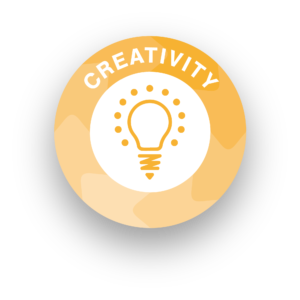
For advice on how to support children in art, see the blog Art: Adding Extra Colour to the High Potential Learner’s World
Bolwerk, A., Dorfler, A., Lang, F. R., Mack-Andrick, J., Maihofner, C. (2014). How art changes your brain: Differential effects of visual art production and cognitive art evaluation on functional brain connectivity. PLoS ONE. https://journals.plos.org/plosone/article?id=10.1371/journal.pone.0101035
Bowen, D. H., Greene, Jay P., Kisida, B. (2014). The educational value of field trips. Education Next ,14 (1). https://www.educationnext.org/the-educational-value-of-field-trips/
Craft, A., Cremin, T., Burnard, P., Chappell, K. (2007). Developing creative learning through possibility thinking with children aged 3-7. In: Craft, A., Cremin, T., Burnard, P. (Eds.), Creative learning 3-11 and how we document it . Trentham.
Clow, A. (2006). Normalisation of salivary cortisol levels and self-report stress by a brief lunchtime visit to an art gallery by London City workers. Journal of Holistic Healthcare 3. https://www.researchgate.net/publication/252281628_Normalisation_of_salivary_cortisol_levels_and_self-report_stress_by_a_brief_lunchtime_visit_to_an_art_gallery_by_London_City_workers
Ebert, M., Hoffmann, J. D., Ivcevic, Z., Phan, C., Brackett M. A. (2015). Teaching emotion and creativity skills through art. A workshop for children. The International Journal for Creativity & Problem Solving , 25 (2), 23-35.
Fostering creativity: T he preschool teacher. (n.d.). [Online Lesson] in The Virtual Lab School. https://www.virtuallabschool.org/preschool/creative/lesson-4
Geirland, J. (1996). Go with the flow. Wired Magazine ,4(09). https://www.wired.com/1996/09/czik/
Hofmann, J., Ivcevic, Z., Maliakkal, N. (2020). Emotions, creativity, and the arts: Evaluating a course for children”. Empirical Studies of the Arts. Sage Journals. https://doi.org/10.1177/0276237420907864
Ivcevic Pringle, Z. (2020, April 3). Creativity at home in the times of pandemic. Dr. Zorana Ivcevic Pringle . https://www.zoranaivcevicpringle.com/post/creativity-at-home-in-the-times-of-pandemic
Ivcevic Pringle, Z. (2020, April 3). Manage emotions to innovate. Dr. Zorana Ivcevic Pringle . https://www.zoranaivcevicpringle.com/post/manage-emotions-to-innovate
Ivcevic Pringle, Z. (2020, April 3). Building your creative muscle. Dr. Zorana Ivcevic Pringle . https://www.zoranaivcevicpringle.com/post/building-your-creative-muscle
Ivcevic Pringle, Z. (2020, April 3). The how of creativity. Dr. Zorana Ivcevic Pringle . https://www.zoranaivcevicpringle.com/post/the-how-of-creativity
McDonald, H. (2019, February 15). The cognitive balancing act of creativity. Psychology Today . https://www.psychologytoday.com/us/blog/time-travelling-apollo/201902/the-cognitive-balancing-act-creativity
Phillips, R. (2015, March). Art enhances brain function and well-being. https://www.healing-power-of-art.org/art-and-the-brain/
Skov, M., Vartanian, O. (2014). Neural correlates of viewing paintings: evidence from a quantitative meta-analysis of functional magnetic resonance imaging data. Brain and Cognition , 87, 52-56.
The benefits of art on memory and creativity (2018, April 17). Invaluable . https://www.invaluable.com/blog/benefits-of-art/
Zambon, K. (2013, November 12). How engaging with art affects the human brain. American Association for the Advancement of Science . https://www.aaas.org/news/how- engaging-art-affects-human-brain
Zeidel, D. W. (2014). Creativity, brain, and art: biological and neurological considerations. Frontiers in Human Neuroscience , 8(389). https://www.ncbi.nlm.nih.gov/pmc/articles/PMC4041074/
About the author: Nina Vangerow is an artist, educator and online content creator with a MA in Ancient History. Teaching art and craft classes, Nina has developed a particular interest in the correlation between the arts, creativity and mental wellbeing. As a mother of a teenager with high learning potential, she has been a Potential Plus UK member and volunteer since 2012.
Share This Page
Related posts.
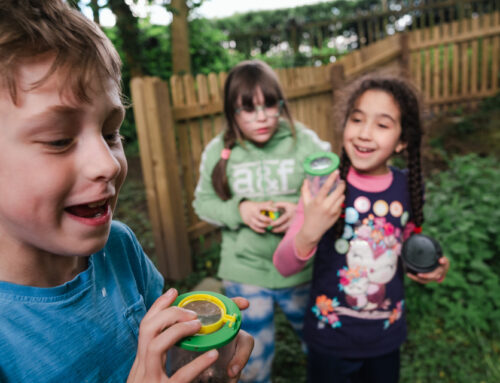
Finding Your Tribe at the Be Curious Weekend 2024

He’s Not a Bad Kid, Just Misunderstood: Ben’s Story

How to Survive a High Learning Potential Christmas

Christmas Gift Ideas the High Learning Potential Way

Summer Reading Challenge Reviews 2023
Privacy overview.
Art Appreciation: Learning to See Art and Artists in a New Light
Time to Read:
- Art Appreciation
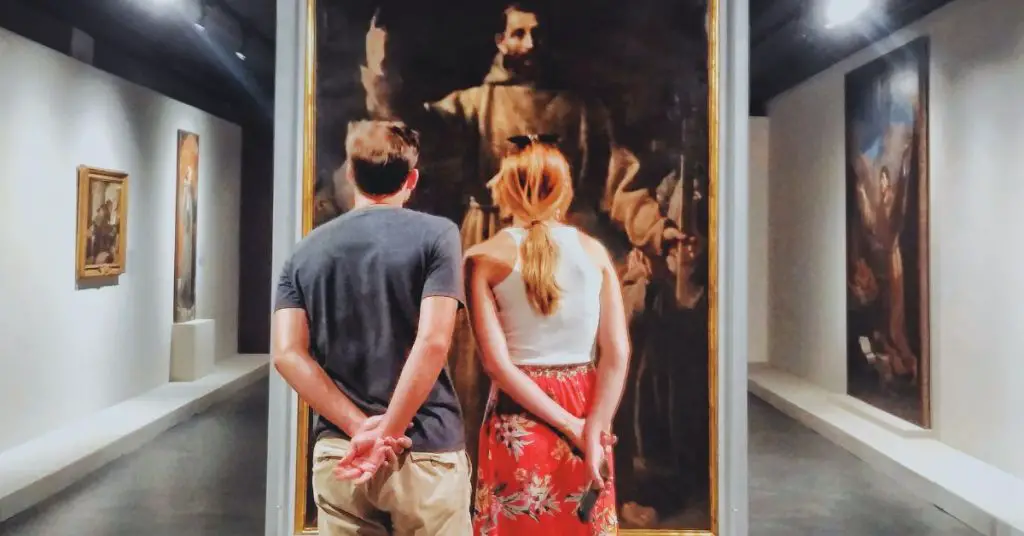
Art appreciation is an often overlooked skill.
It’s much more than simply looking at a piece of art and judging it based on what we see – art appreciation requires us to look deeper, beyond the surface level into the artist’s intent and technique.
We’re here to help you learn how to step outside your comfort zone and explore new ways of seeing art and appreciating its beauty.
This article will provide insight into the process of learning to appreciate artwork from different perspectives.
You’ll gain knowledge about tips on how best to observe them so that you can discover hidden gems throughout any gallery or museum visit.
By the end of this journey, you’ll have all the necessary tools you need in order to begin viewing artwork with newfound appreciation. So let’s get started!
Definition Of Art Appreciation
History of art appreciation, benefits of art appreciation, types of visual art forms to explore, strategies for viewing artwork, basic elements of design and composition in art history, techniques for understanding context, developing interpretive skills, resources for further learning, tips for sharing and connecting, frequently asked questions, final thoughts on art appreciation.
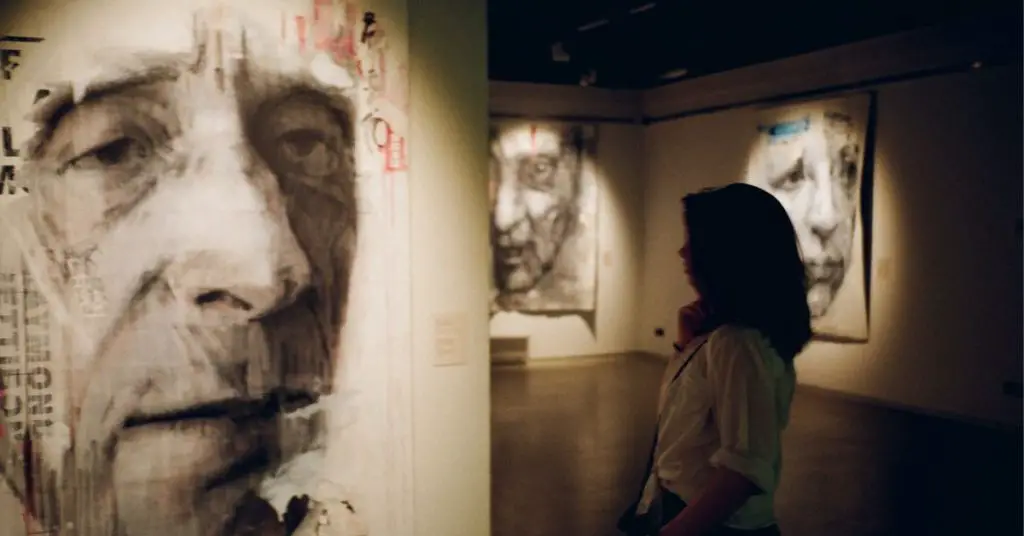
What is art appreciation? It’s the ability to see and appreciate the beauty, value, and meaning of the artwork.
It’s also a way of engaging with the artist’s vision and understanding how their work conveys a message or emotion.
Art appreciation helps us develop an understanding and appreciation for different cultures, styles, media, materials, and techniques.
Learning to appreciate art isn’t just about looking at a painting or sculpture; it involves learning about different periods in art history and exploring the various movements that have impacted our culture.
This could include learning about classical Greek sculptures or Renaissance paintings, as well as more contemporary works like installations or performance art.
We can gain insight into each period by studying artists’ biographies, reading literature about them, and visiting galleries or museums where we can view their work first-hand.
Art appreciation can open our eyes to new perspectives on the world around us. It enables us to explore our feelings beyond what words alone can express and encourages us to look at things from new angles.
Developing an understanding of art allows us to experience a greater sense of joy in life and boosts our creativity too!
Appreciating art helps us become more culturally aware while sparking conversations between people from different walks of life.
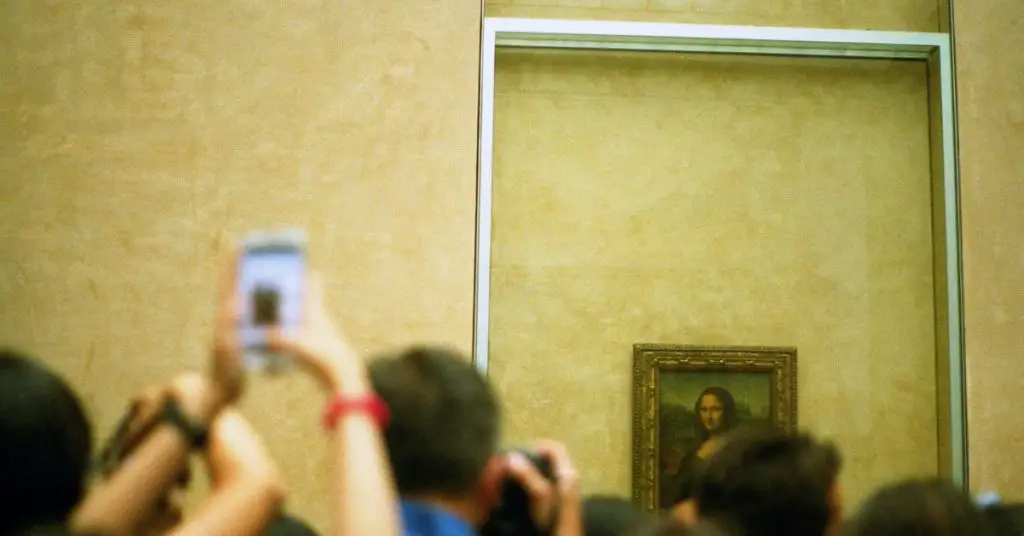
The history of art appreciation is long and rich. Art appreciation has been studied for centuries, with the earliest known records from Ancient Greece and Rome.
In Ancient Greece and Rome, appreciation of art was seen as an essential part of living a cultured life. The study of art was thought to cultivate one’s visual senses and develop an understanding of beauty in the world around them.
The Renaissance period saw a renewed interest in art appreciation, as it became more closely associated with the idea of education and culture.
During this period, artists were highly esteemed for their works and their skills in creating beautiful works of art.
It was during this time that some of the greatest works of art were created by master painters like Michelangelo and Raphael.
In the modern era, art appreciation has become more accessible to people than ever before.
With advances in technology, there are now more ways to appreciate artwork than ever before – from online galleries to virtual exhibitions – making it easier for people to explore and understand different forms of artwork from around the world.
By being exposed to different forms of art, we can gain an unprecedented understanding and appreciation for what makes each unique work special.
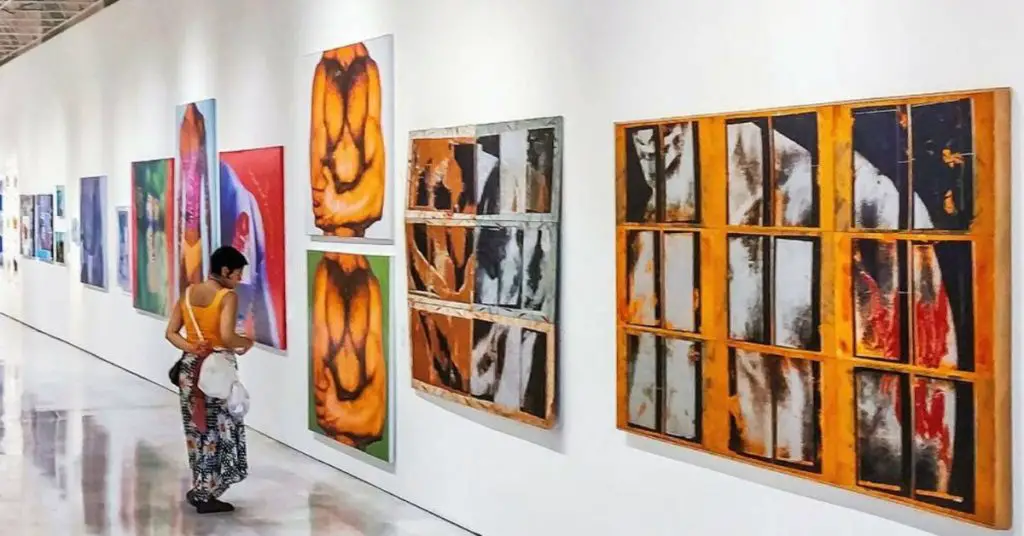
Art appreciation can have many benefits for both individuals and society as a whole.
For individuals , art appreciation can help to increase creativity, develop critical thinking skills, and boost self-esteem. It can also help to reduce stress and anxiety levels by providing an outlet for creative expression.
On a societal level , art appreciation can help to strengthen communities by bringing people together through shared experiences and creating a space for dialogue around important topics.
The ability to appreciate art also has implications for our physical health and well-being. Studies have shown that engaging with art on a regular basis can help improve memory and cognitive functioning while reducing fatigue and improving overall mental well-being.
Additionally, viewing works of art in person can give us an opportunity to get outside, connect with nature, and enjoy the peace of being surrounded by beauty.
Beyond the individual benefits of art appreciation, it is also important to consider its impact on the world around us.
Art is often used as a tool for social change; it has the power to raise awareness about issues that are affecting communities across the globe.
By engaging with different forms of art from various cultures and countries, we can gain valuable insight into different perspectives that we may not have encountered before.
This helps us understand one another better, build empathy towards different points of view, and ultimately lead to more tolerant societies.
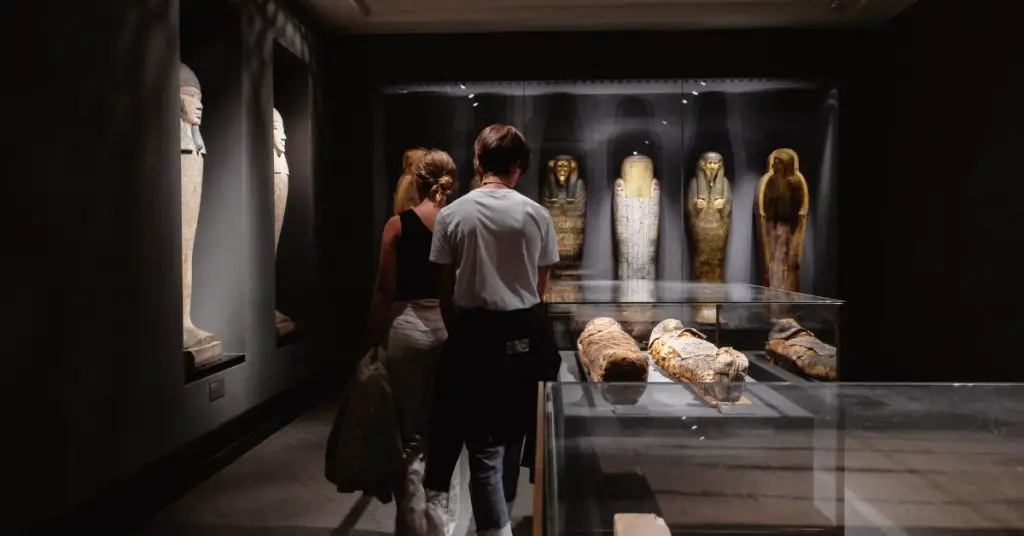
Exploring the various types of visual arts can be an exciting experience. There are countless mediums to explore, from photography and sculpture to painting and drawing.
Each type of art has its own unique history and style, allowing for a wide range of expression.
- Painting stands out among these mediums as one of the oldest forms of creative expression. It is believed that cave paintings were created by some of the earliest humans, dating back as far as 40,000 years ago. Paintings have been used throughout history to tell stories, convey emotions, and document events. From oil paintings to watercolours and abstract expressionism, there are numerous styles to explore in this medium.
- Sculpture is another form of visual art that dates back thousands of years. The first sculptures were small figurines made from clay or stone that were used in religious rituals or ceremonies. Over time, sculpting has evolved into a medium for expressing ideas in three-dimensional form. Many sculptures today are made from a variety of materials including bronze, marble, wood, or even concrete.
- Photography is one of the most popular forms of visual arts today and it continues to evolve with new technologies such as digital cameras and editing software. Photographers use light and composition to create powerful images that tell a story or evoke emotion in the viewer. Whether you prefer nature photography or street photography, there’s something for everyone to explore in this ever-changing field.
No matter which type of visual arts you choose to explore, remember that art appreciation begins with being open-minded about what you see and how it makes you feel.
Observing each piece closely can help reveal hidden details you may have otherwise missed out on!
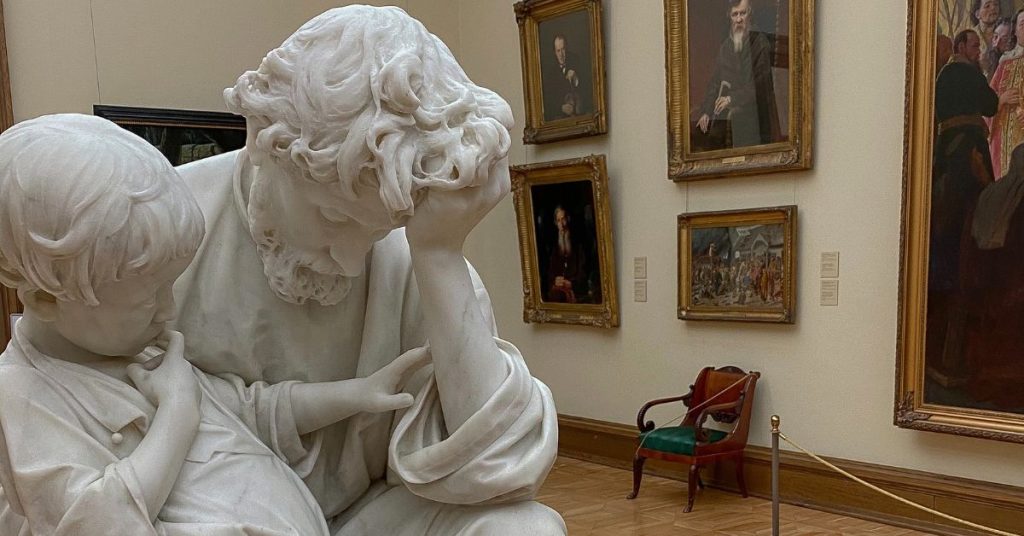
Now that you’ve explored some of the many types of visual art, it’s time to learn how to view artwork in a new light. Viewing artwork can be both fun and educational .
It’s important to take your time when viewing artwork and really appreciate the details, colours, shapes, and textures that make it unique.
Here are some strategies for viewing artwork that will help you get the most out of your experience:
- The first step is to prepare yourself mentally . Before you begin viewing any artwork, take a few moments to relax and clear your mind of any preconceived notions or ideas of what you think a piece should look like. This will help you open up to different interpretations and perspectives as you explore the work.
- The next step is to examine the artwork closely . Take note of its colours, textures, lines, and shapes. Consider how these elements work together to convey meaning or emotion in the piece. Think about what the artist may have been trying to express with his or her use of colour, texture and composition. Ask yourself questions such as: “What do I see?” “What is this piece saying?” “What feelings does it evoke in me?”
- Finally, try putting yourself in the artist’s shoes by asking questions such as: “What was their inspiration for creating this piece?” “What techniques did they use?” “What materials did they use?” Answering these questions can help give you insight into their creative process and further enhance your appreciation for their work. Through thoughtful observation and exploration of an artist’s work, you can gain a deeper understanding and appreciation for art as a whole.
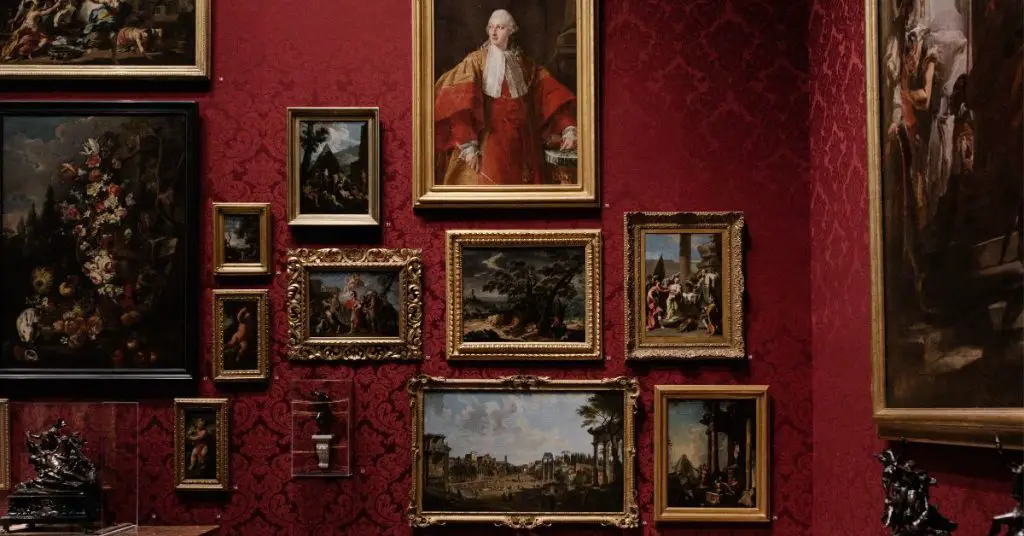
The elements of art, design and composition are integral aspects of a work of art . They can include the use of line, shape, form, colour, texture, and space.
By combining these elements in creative ways , an artist is able to create a unique visual experience for the viewer.
- Line is one of the most important elements in any artwork. It can be used to define shapes and forms or to create movement or direction within a composition. Lines can also be used as symbolism or to emphasize a certain emotion within the piece.
- Shape and form are also crucial components of any artwork. Shapes are two-dimensional figures that define an area and outline images while forms refer to three-dimensional objects that have depth and volume.
- Colour can be used to add contrast and emotion to artwork while texture brings life to it by creating different effects with light and shadow. Finally,
- Space refers not only to the physical areas between objects but also to the psychological depths created by their placement in relation to each other within a composition.
These elements play a critical role in how we interpret artworks on both conscious and subconscious levels.
Every element should contribute toward creating an overall unity so that viewers will take away something meaningful from it in terms of its message or purpose.
An artist must be mindful of how all these pieces fit together when creating their work; otherwise, they risk creating something that fails to evoke any reaction from their audience at all.
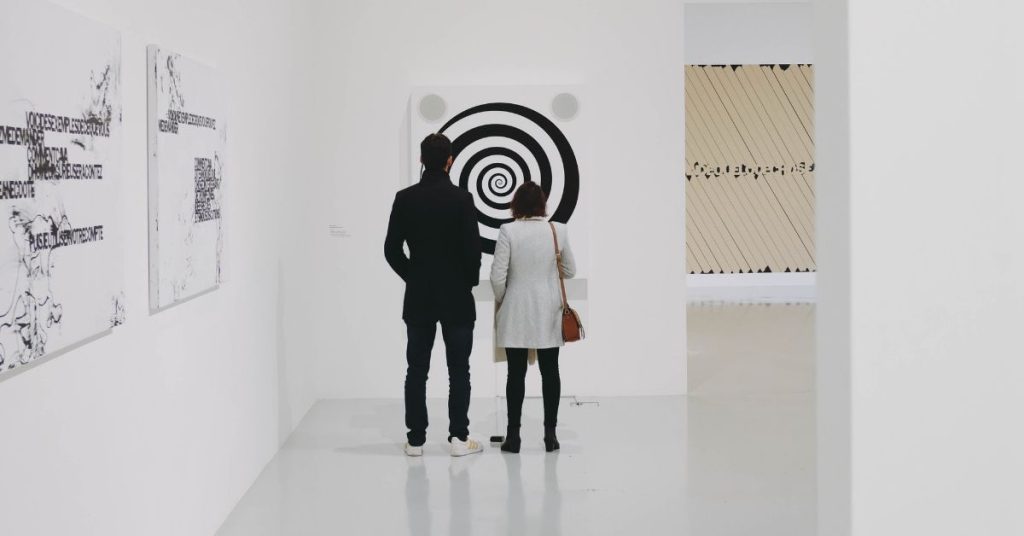
Now that we have discussed the various elements of design and composition, let’s shift our focus to understanding how to look at art in a new light.
To appreciate art, it is important to understand the context in which it was created. The context behind a piece can be found through techniques such as research , observation , and analysis .
- Researching a piece of art, it is important to look for information about the artist and the time period in which it was created. This can help provide insight into why certain elements were used and what message may have been intended by the artist. Additionally, one should look for any details or symbolism present in the work that may not be immediately evident.
- Observation plays an important role in understanding context as well. Taking a closer look at an artwork can help uncover details that are often overlooked when viewing from afar. Paying attention to colours, textures, shapes, and lines can help reveal more about the artwork than simply looking at it with no further inspection.
- Analyzing a work of art is another way to gain insight into its context. Looking closely at how elements were used and combined together will help determine how they contribute to the overall message of the piece. This includes considering composition and design elements such as balance, contrast, rhythm, movement and unity. By carefully analyzing these aspects of an artwork, one can develop a more informed appreciation for its meaning and purpose beyond just its aesthetic value.
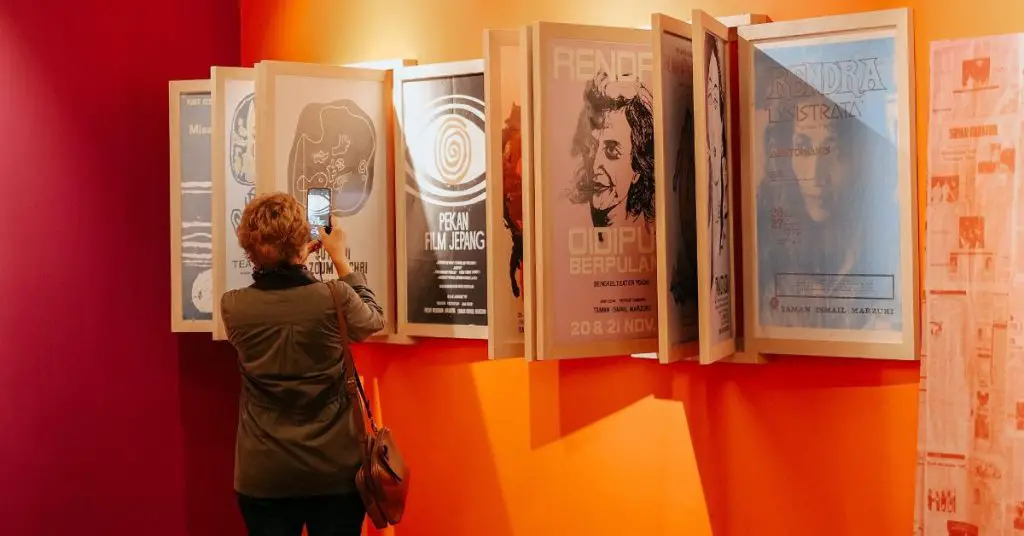
Interpretive skills are essential for understanding and appreciating art. When looking at an artwork, it’s important to look beyond the surface to uncover the deeper meaning behind it.
To develop interpretive skills, there are a few key techniques that can be used:
- One of the most effective ways to gain insight into an artwork is by asking questions . What is the artist conveying with this piece? What elements and techniques were used to create the work? Are there any symbols or metaphors present? Asking these types of questions can help unlock hidden meanings in a work of art that may not be immediately obvious.
- Another helpful technique is researching the artist and their cultural context . This can provide further insight into what inspired them, and how their work was received by their peers and society at large. It can also help put the artwork in a larger cultural context which adds depth and complexity to its meaning.
- Analyzing artistic elements such as composition, colour, texture and form can also help unpack an artwork’s message. Paying attention to how different elements interact with each other reveals subtle nuances that contribute to its overall impact on viewers.
Developing interpretive skills requires practice but is a rewarding process that helps us gain a greater appreciation for art.
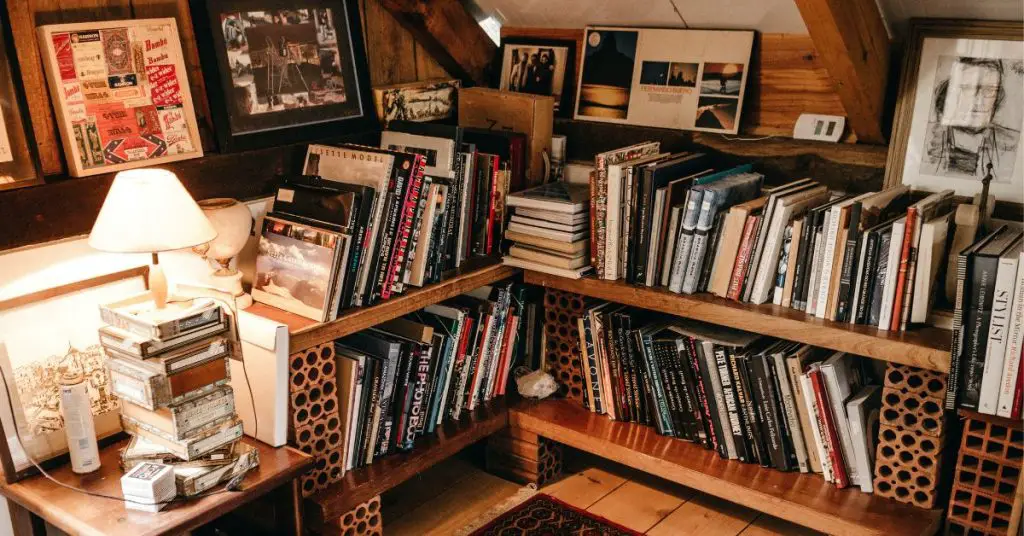
There are many resources available to help anyone learn more about art appreciation. Books , magazines , and articles all provide valuable information on the subject.
Online resources also offer great tools for learning more, such as podcasts , webinars , and courses . A great starting place is to look for art appreciation classes offered by colleges and universities in the area.
These classes typically cover a broad range of topics from the basics of art history to deeper dives into specific artists or styles.
For those who prefer to learn at home, there are plenty of books available on art appreciation. Many can be found at local libraries or bookstores , while others can be purchased online.
Magazines such as Art Forum or Art in America also provide coverage of current trends in the world of art. Articles written by experts in their respective fields can be found on various websites like Artsy or Hyperallergic .
Finally, there are countless podcasts and webinars that discuss almost every aspect of art appreciation. Many of these are free and readily available with a simple internet search.
Finding the right one depends on the individual’s preferences and goals when it comes to furthering their knowledge about this field.
With so many options out there, anyone looking to explore art appreciation further will have no trouble finding something that works for them!
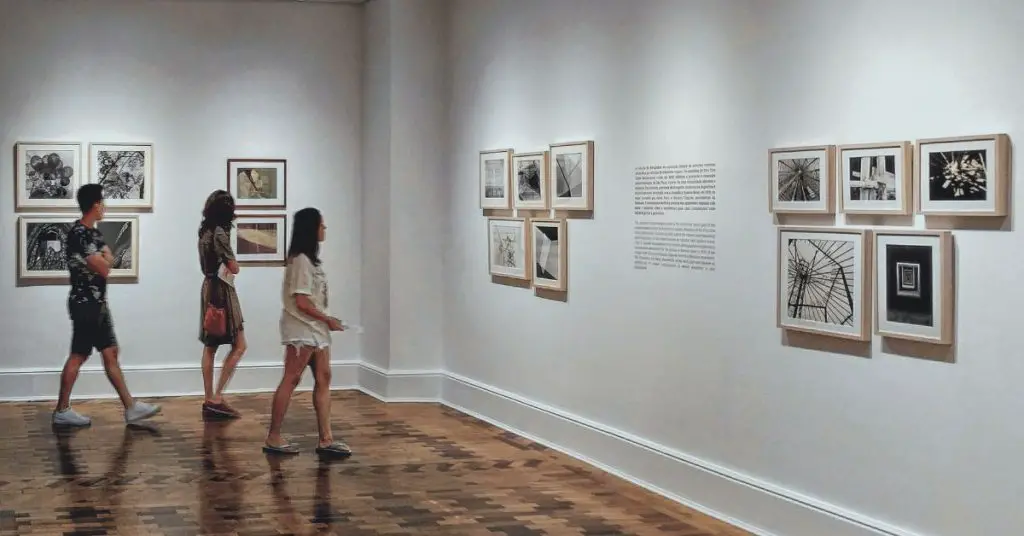
Sharing and connecting with art can be one of the most rewarding experiences in appreciating the artwork. To get the most out of the experience, there are a few tips to keep in mind:
- The first tip for sharing and connecting is to engage all your senses . Take time to fully observe the artwork and let it speak to you. Notice how the colours, shapes, and textures make you feel. If a painting or sculpture evokes emotion, don’t hesitate to express it. Connecting deeply with artwork can be an extremely powerful feeling.
- Another great tip is to take advantage of guided tours and audio tours when available. A guide can help lead you through a museum and provide meaningful context for each piece you encounter along the way. Audio tours can also help bring an artwork’s story to life by providing detailed information about its history and significance, and finally,
- Try discussing your thoughts on artwork with friends or family members who may have a different opinion than yours. This allows both perspectives to come together in conversation and create something new from their dialogue about art appreciation. By taking these tips into consideration, we can approach viewing artwork from different angles and gain a new appreciation for it every time we look at it.
What Types Of Art Should I Start Exploring First?
When exploring art, it’s important to figure out what type of art you’re most interested in. There are so many different mediums and styles that can be explored, from painting and sculpture to photography and digital art. It can be overwhelming trying to decide where to start, but there are a few techniques that can help you narrow down your choices.
One way to begin is by exploring the work of artists who inspire you. Look for pieces that draw your attention or evoke strong feelings in you. This will indicate what types of art you’re drawn towards, whether it’s abstract expressionism, surrealism, or something else entirely.
You may also want to research different movements and styles throughout history, such as Impressionism or Postmodernism, which could present new possibilities in terms of what kind of art appeals to you.
Another approach is to experiment with different mediums yourself. If you have access to art supplies like paints and canvas, try creating a piece of artwork in each one and see which ones come more naturally to you.
You might even find that a style or technique that didn’t immediately appeal to you reveals itself as something enjoyable once you start working with it! Additionally, don’t forget about digital media; there are plenty of free software programs available online that allow anyone with a computer the opportunity to create their own digital artwork—all without spending a penny!
No matter how much (or how little) experience you have with creating art, exploring various mediums is the best way to get familiar with them and grow as an artist. If nothing else, this will provide an excellent opportunity for self-discovery and help refine your personal tastes when it comes to appreciating other people’s artwork.
How Can I Develop My Interpretive Skills?
Developing interpretive skills is an important part of understanding art. It requires the ability to look at a piece of artwork and gain insight into what the artist is trying to express. This can be a difficult task, but with practice and dedication, it’s possible to hone your interpretive skills.
One way to develop interpretive skills is by looking for patterns in the artwork. Patterns can be anything from a repeating color scheme or shape to more abstract concepts like symbolism or metaphors.
Looking for these elements will help you understand how the artist intended the piece to be viewed and interpreted. Additionally, making connections between different pieces of art can also provide valuable insight into how they are meant to be understood.
Another way to sharpen your interpretive skills is to become familiar with different artistic styles and techniques used throughout history. Learning about different types of art and their unique characteristics will give you a better understanding of how each style contributes to the work as a whole. Additionally, studying classic works of art can give you an appreciation for the skill and creativity that goes into creating them.
By looking for patterns in artwork, making connections between different pieces, and familiarizing yourself with various artistic styles, you can improve your interpretive skills and gain a deeper appreciation for art. With time, practice, and dedication you’ll be able to see art in an entirely new light!
Are There Any Online Resources I Can Use To Learn More About Art Appreciation?
Developing one’s interpretive skills is an important part of learning to appreciate art. But with the advent of the internet, it can be difficult to know where to start. Are there any online resources available that can help someone learn more about art appreciation?
The answer is yes! There are a variety of online resources available for anyone who wants to dive deeper into art appreciation. From podcasts and YouTube videos to in-depth articles and interactive activities, these websites provide a wealth of information on various aspects of the subject.
One great example is The Art Newspaper, which offers daily updates on all kinds of topics related to art appreciation. They cover news from around the world along with reviews and interviews from leading professionals in the field. Additionally, they provide educational materials for students, such as quizzes and lesson plans.
For those seeking a more hands-on approach, there are several sites that offer interactive activities designed to help people understand different aspects of art appreciation.
For instance, Artsy provides virtual galleries where users can explore works from around the world without ever leaving their homes. Similarly, Museum Hack offers virtual tours that let people get up close and personal with some of the greatest works of art in history.
These online resources are invaluable for those looking to develop their interpretive skills and gain a better understanding of art appreciation. With so many options available, there’s no excuse not to take advantage and get started on your journey today!
What Elements Should I Look For When Viewing Artwork?
When viewing artwork, it is important to look for certain elements. By doing so, a person can gain a better understanding and appreciation of the artwork. It is not enough to simply look at the work, but instead one should look for certain characteristics that make the piece unique or special.
The first thing to consider when looking at artwork is its composition. This means looking at how the colors, shapes, and lines interact with each other to form a pleasing whole. Additionally, it might be helpful to think about how these elements convey emotion or meaning in the piece. For instance, warm colors may suggest comfort while cool colors may imply sadness.
A second aspect of the artwork that one should consider is its subject matter. This includes both what the piece depicts as well as any symbols or metaphors that may be present.
Looking closely at these details can help one gain insight into what the artist was trying to convey through their work. Furthermore, studying the context of the piece – such as who created it and why – can also provide valuable information about its meaning and purpose.
In order to understand art more deeply, it is important to pay attention to all of these elements when viewing a piece of art. Taking time to observe them carefully will help one appreciate artwork more fully as one begin to recognize patterns in composition and symbolic meanings behind images and objects portrayed in works of art.
Are There Any Tips For Discussing Art With Others?
Discussing art with others can be a great way to gain new perspectives and deepen your appreciation of artwork. However, if you’re not used to talking about art or don’t feel particularly confident in your own knowledge, it can be intimidating. Fortunately, there are some simple tips that can help make the process easier.
Before discussing artwork with someone else, it’s important to take the time to analyze the piece yourself. Ask yourself what elements of the artwork stand out to you and why they appeal or engage you. This will give you a better understanding of how and why you perceive it in a certain way. Additionally, taking notes on specific aspects of the work that interest you is also helpful for sparking conversation with someone else about it.
When talking about artwork with another person, remember to focus on whatever speaks to them as much as possible. By doing this, you may find that their observations lead you to notice things in the piece that hadn’t occurred to you before.
This can be especially beneficial when discussing more abstract works since each person’s interpretation will likely be different from the others. Additionally, being open-minded and respectful towards their point of view is essential for having productive conversations about art without feeling judged or uncomfortable.
In order for discussions about art to be meaningful and enjoyable experiences, it’s important to keep an open mind while engaging in dialogue with others about the artwork. Taking the time beforehand to think deeply about a particular piece will ensure that you have plenty of ideas and points of view ready to share during these conversations as well.
To conclude, art appreciation is a skill that can be cultivated by anyone. With the right knowledge and perspective, we can all learn to appreciate art in new ways.
By understanding how artists create works of art , and what elements make up these pieces, our eyes are opened to new possibilities.
Everyone has the capacity to gain a deeper understanding and admiration for visual art – it’s all about finding what speaks to us individually.
As such, learning more about art appreciation encourages us all to see things differently – allowing us to develop an even greater appreciation for both established masterpieces as well as emerging talent.
About the author
We are a team of creatives dedicated to sharing tips, tricks, and step-by-step guides on all things related to art and design. Check out our blog for a list of all the awesome things we post!
2 responses to “Art Appreciation: Learning to See Art and Artists in a New Light”
I never knew that appreciating art helps you learn more about its beauty while enhancing your visual senses. My brother is interested in taking his girlfriend on a date this year. I should recommend that they visit an art gallery so they’d consider installing wall art in their home!
Art has the power to move us in many ways. Thanks for sharing your thoughts.
Leave a Reply Cancel reply
Your email address will not be published. Required fields are marked *
Save my name, email, and website in this browser for the next time I comment.
Subscribe to newsletter
related posts
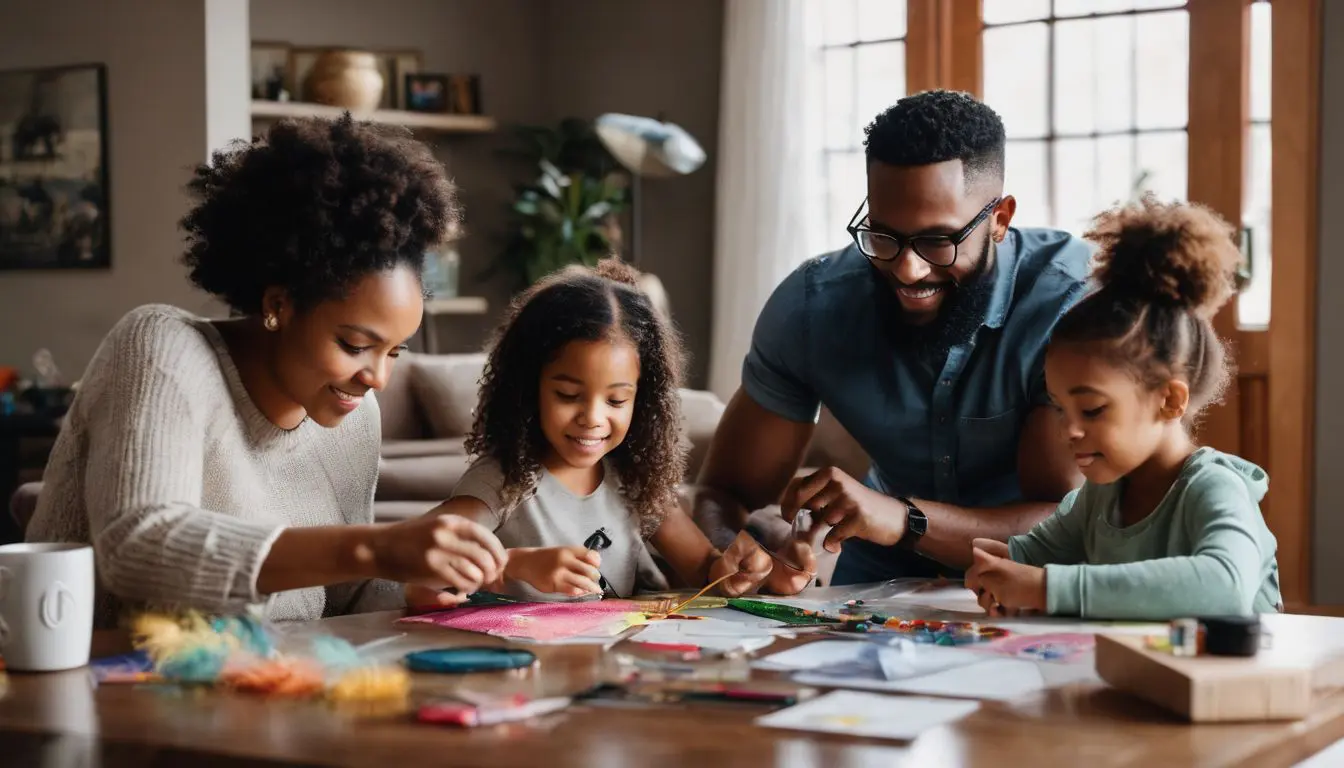
10 DIY Craft Ideas for the Home to Add Personal Touches
Whether you’re looking to craft a statement piece for your…
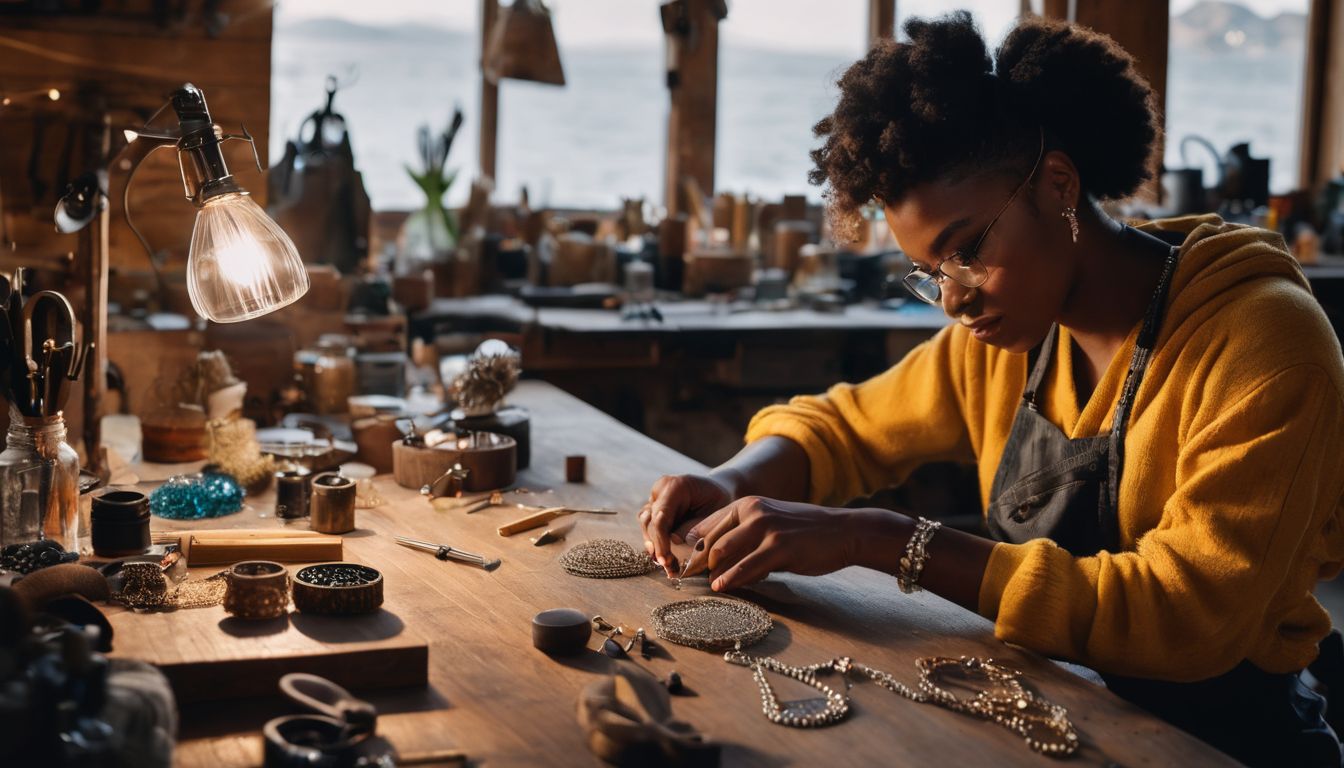
Top 24 DIY Craft Ideas to Sell and Make Money from Home
DIY Craft Ideas to Sell Dreaming of turning your crafty…

DIY Craft Ideas For Gifts: 50 Handmade Projects for Loved Ones
Finding that perfect gift for a special someone can often…
Privacy Overview

- Find a Location

How to Use Art to Teach Critical Thinking?
There’s no doubt that critical thinking skills are one of the most sought-after when it comes to success in academic and professional life. But why does acquiring such skill have to be so complicated?
As educators and parents, we can often get entangled with the ‘critical’ part of the thinking process, looking into the complex problem-solving processes by using science and math problems. While the development of the analytical side of the brain is essential in leveraging a person’s critical thinking skills, nurturing the creative and inquisitive side of the brain is equally important.
COMPUCHILD’s after-school STEAM franchise uses an amalgam of left and right brain stimulants to provide a holistic opportunity for students to learn critical thinking.
Using Art to Ignite Curiosity
Children have an unprecedented level of curiosity. Strengthening the school’s art programs can help them hone their critical thinking skills to add value to the professional environment when they enter it.
Think about our time back in school when science and math were the ‘practical’ classes that required theoretical learning involving untouchable and variable subject matter. On the contrary, art enables students to learn real-time problem solving through a hands-on approach to concretize the ‘hypothetical.’ Art allows students to take a focused and slow approach to understand the world around them for better access to clues that can make complex problems easy.
Research shows that helping children examine, observe, and reflect on paintings and other forms of art can enable them to perform a careful analysis when faced with a real-life problem. Moreover, art appreciation fosters empathy, tolerance, and resilience among students.
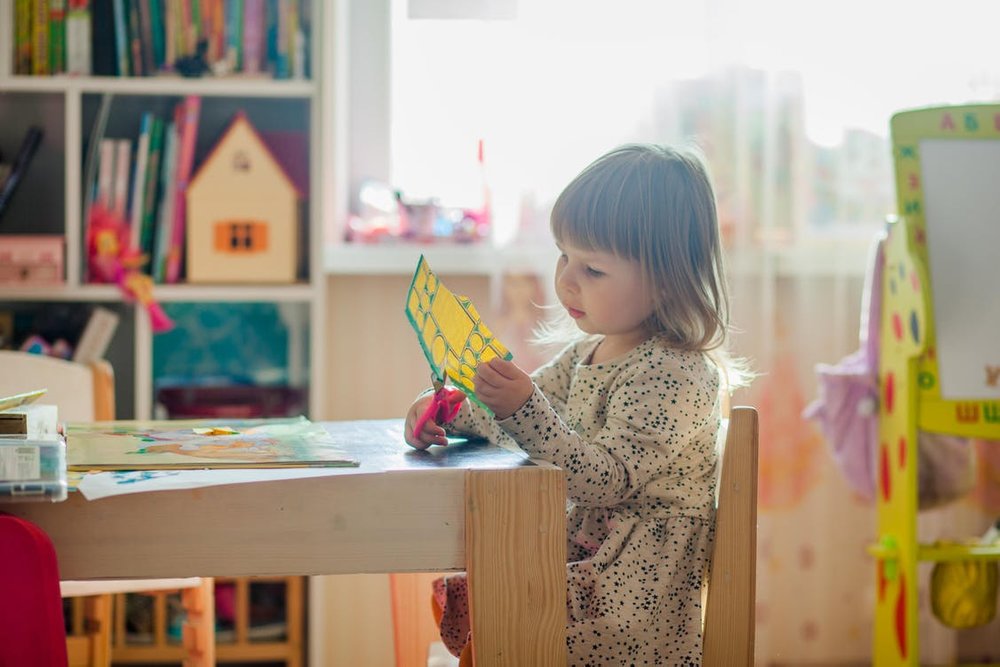
How to Use Art in the Classroom?
Integration of art is a robust method of using art in different subjects. For instance, when teaching mathematics, you can encourage the students to use their creative side of the brain to picture the word problem to solve it with ease.
STEM education programs, like the ones offered by COMPUCHILD, get a lot of traction these days. Therefore, COMPUCHILD has incorporated Arts in the STEM to offer STEAM-based after-school enrichment programs that use self-expression to teach complex concepts.
Nonetheless, lucrative careers in the field of STEM – like software programming – use artistic solutions for real-world problems. STEAM education proves that practical knowledge and creativity can coexist in the classroom.
Low-Cost High-Profit STEAM Education Franchise Opportunity
COMPUCHILD offers a unique Entrepreneurial STEAM™ kids education franchise that uses the creative expression of the arts to teach complex concepts of STEM. Our Impactful Blogging and Animation Creation programs provide technical knowledge infused with a creative expression so that students can learn to code, program, and communicate in a fun way.
COMPUCHILD is one of the least expensive STEAM education franchise in the US and Canada. Get in touch with COMPUCHILD to start a profitable franchise under $30k.
Find out more about education franchise opportunities here.
Entrepreneurship and Technology focused
Enrichment programs for children.

Quick Links
Franchisee login.
- 3736 Fallon Rd., Suite 125 Dublin, CA 94568, USA
- (341) 777-8000
- [email protected]
© 2023. COMPUCHILD. All Rights Reserved.

19 Abilities Every Child Needs for the Future
Posted: May 30, 2024 | Last updated: May 30, 2024

Preparing children for the future involves equipping them with a set of diverse skills and abilities that go beyond traditional academic knowledge. As the world evolves, these competencies will help them navigate complex challenges, adapt to changing environments, and thrive in their personal and professional lives. Here are 19 abilities every child needs for the future, each explained with insight and a sprinkle of humor to lighten the mood.

Critical Thinking
Children should learn to question everything but in a good way, like a mini-detective piecing together a puzzle. This skill helps them evaluate information critically, make informed decisions, and not fall for every internet hoax about moon cities.

Encouraging kids to think outside the crayon box fosters innovation. Creativity isn’t just for art projects; it’s for problem-solving, inventing new technologies, and figuring out how to turn a boring cardboard box into a spaceship.

Emotional Intelligence
Being able to read the room is just as important as reading a textbook. Emotional intelligence involves understanding and managing one’s emotions and empathizing with others, ensuring that future leaders can inspire and not just dictate.

Adaptability
In a world that changes faster than a superhero in a phone booth, being adaptable is key. Kids need to learn to be comfortable with uncertainty and flexible enough to adjust their capes when the winds of change blow.

Collaboration
Teamwork makes the dream work, especially when robots are your co-workers. Learning to work effectively with others, both in person and through digital platforms, is essential for solving the complex problems of the future.

Digital Literacy
Navigating the digital world should be as second nature as navigating their neighborhood. From coding to online safety, digital literacy is the new reading and writing for the digital age.

Environmental Stewardship
Understanding the importance of sustainability and taking action to protect our planet ensures that there will be a world worth inheriting. It’s about teaching kids not just to recycle but to respect and care for their giant home.

Problem-Solving
Life doesn’t come with an instruction manual, so being a good problem-solver is crucial. Whether it’s fixing a leaky faucet with online tutorials or tackling global challenges, the ability to identify problems and find solutions is invaluable.

Communication
Expressing ideas clearly and listening attentively are superpowers in their own right. Whether it’s through a persuasive essay, a compelling presentation, or just a well-timed joke, effective communication is key to making oneself understood and understanding others.

Financial Literacy
Understanding money management, from saving for a rainy day to investing in a lemonade stand, sets kids up for a future where they control their finances, not the other way around. It’s like giving them the cheat codes to adulting.

Curiosity and a Love for Learning
Instilling a mindset that learning isn’t just confined to the classroom but is a lifelong adventure keeps their inner explorer alive. It’s about teaching them to see every day as an opportunity to learn something new, even if it’s why the sky is blue or how to say “hello” in ten languages.

Teaching kids to bounce back from setbacks with the grace of a rubber ball builds character and perseverance. It’s showing them that failure isn’t the opposite of success; it’s part of the journey.

Mindfulness and Self-Regulation
In a world of constant stimuli, being able to focus and stay present is like having a superpower. Mindfulness and self-regulation help children navigate stress and emotions, making them ninjas in the art of calm.

Cultural Awareness and Appreciation
Understanding and appreciating diverse cultures and perspectives enrich children’s lives and prepare them for a globalized world. It’s like giving them a passport to explore and celebrate the vastness of human traditions without leaving their classroom.

Fostering leadership skills doesn’t mean creating a mini-CEO in every child but empowering them to take initiative, inspire others, and make positive changes. It’s about showing them that leadership is about service and vision, not just titles and power.

Time Management
Teaching children to manage their time effectively is like giving them a magic wand to create more hours in the day. It’s a skill that helps them balance homework, hobbies, and rest, making “I’m bored” a phrase of the past.

Ethical Thinking
Instilling a strong sense of ethics and integrity ensures they can distinguish right from wrong and stand up for their values. It’s about teaching them to be the heroes of their own stories, fighting for what’s fair and just.

Health and Wellness
Understanding the importance of physical and mental health, from exercise and nutrition to mindfulness and self-care, equips them to take care of themselves and others. It’s like being their own health superhero, armed with kale and yoga poses.

Entrepreneurial Spirit
Encouraging an entrepreneurial spirit helps children see opportunities, take calculated risks, and innovate. Whether they’re opening a neighborhood lemonade stand or inventing a new app, it’s about teaching them to dream big and work hard.

12 Manners That Kids Today Just Aren’t Taught Anymore

12 Schoolyard Games Older Generations Loved That Have Disappeared
More for You
Jury's 'Thorough' Requests Spell Bad News For Donald Trump: Legal Analyst
This maths brain teaser will put your skills to the test
Man lives debt-free in cob home that only cost $200 to build: ‘It’s just beautiful’
I took creatine every day for 10 days like Mark Wahlberg — here’s what happened to my body
'The worst investment people can make': Real estate guru Grant Cardone says too many Americans are chasing after the dream of homeownership. Here's what he thinks you should do instead
Tyronn Lue becomes one of NBA's highest-paid coaches after signing 5-year extension with Clippers: reports
Trump trial verdict: if guilty, what would ex-president’s punishment be?
The Supreme Court Is About To Make Congress Reinvent Itself | Opinion
Archaeologists Found a Family’s 3 Ancient Tombs Filled to the Brim With Treasure
Five exercises that are better than tricep pushdowns for building serious arm size
Travis Kelce responds to being booed at NBA game with Patrick Mahomes
Millionaire faces massive fine after bulldozing over mile of waterway near home: 'Ecological vandalism on an industrial scale'
Apple to pay iPhone users as much as $349 for defect - but claims need to be filed soon
Donald Trump's Popularity Is Soaring
Meet one of the world's most advanced humanoids
The Best Handguns of 2024, Tested and Reviewed
‘Wheel of Fortune’ Host Pat Sajak Loses it While Contestants Celebrate Incorrect Guess
‘World’s largest botnet’ knocked offline after raking in billions
The hail in Texas was so big Tuesday that it required a new description
Harsh Truths: 12 Truths About Electric Vehicles No One Wants To Hear

Exhibitions and Events
Current exhibition, si com di l’eau | we are like water, jason baerg may 4 - august 10, 2024, opening reception: june 15, 2:00 - 4:00pm.
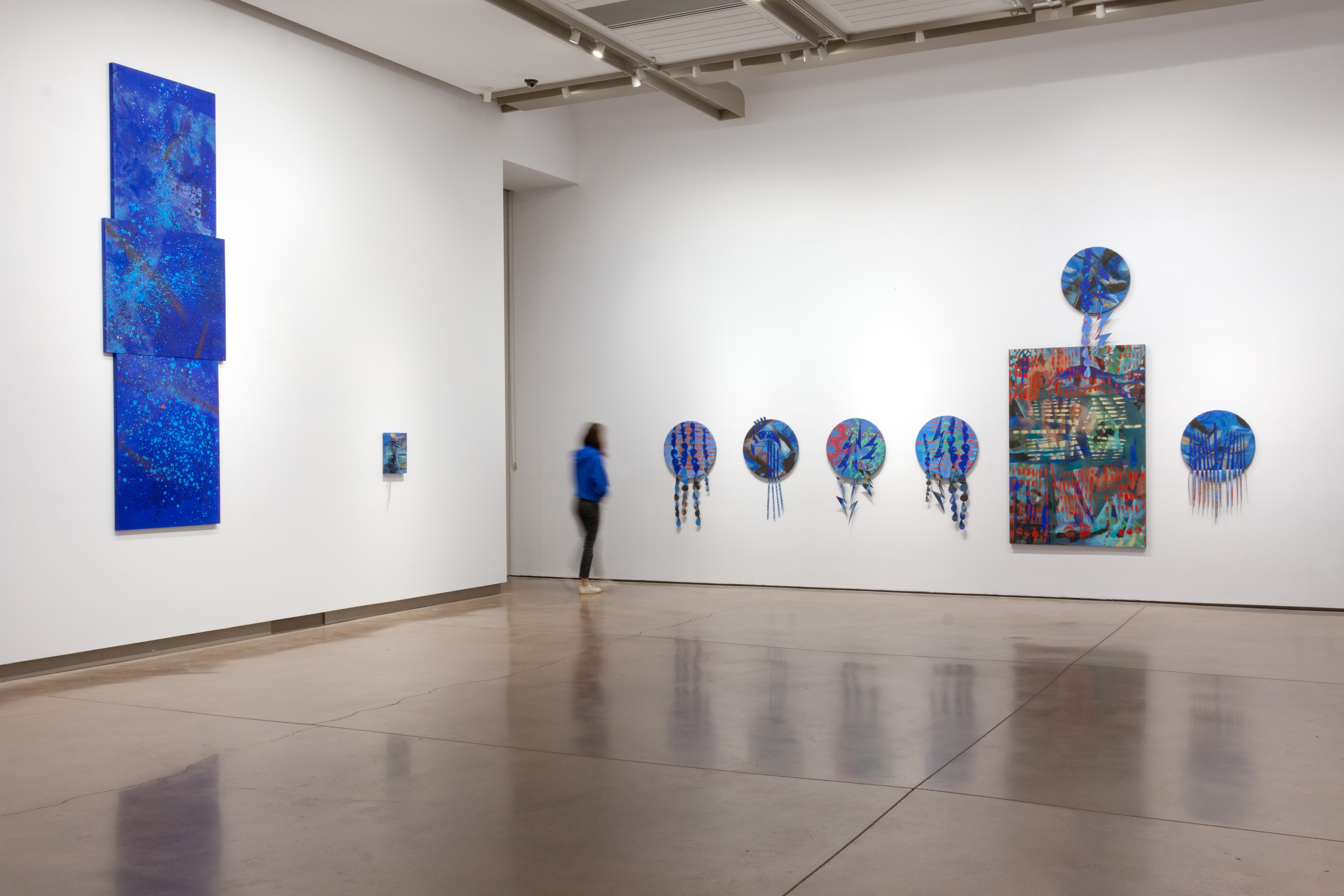
Jason Baerg, si com di l'eau | we are like water, installation view, Grimsby Public Art Gallery (2024) Photo: Jordyn Stewart
A highly respected artist grounded in community and kinship, Baerg’s practice traverses intermedia and laser cut abstract painting through visual language rooted in Indigenous ways of knowing, relationalities, and futurisms. Underpinned by Plains Cree medicine thinking, Baerg’s continued exploration of the Cree medicine wheel in 2024 delves into its third blue, western quadrant - fluidly conceptualizing and honoring water, sage, the setting sun, and emotional health in addition to other seminal traditional teachings. These cyclical connections flow through the circular form and symbolism of the medicine wheel, echoed through the use of tondos in the space, evoking portals to speculative futures, while stacked compositions ground past and present, both gesturing to Sky World. Reflecting on the title, si com di l’eau , graciously bestowed on this body of work by elder Marjorie Beaucage, it translates to ‘we are like water’ in the Metis language, Michif. Through colour and symbolism, we are prompted to consider water’s relationality, balance, and presence in all things and beings; its gentle nourishing characteristics; its presence in our bodies; its power; and its embodied connection to past and future ancestors. Water has the ability to exist in multiple states of matter, echoing the currents of life, and as a brimming vessel of epigenetic memories. Through seductive surfaces, Baerg’s work fluidly blurs the lines between critical theory, Indigenous iconography, and relationality through a thrilling use of abstraction and cutting-edge technology. The works on display have a propositional capacity to collaboratively implicate Indigenous and non-Indigenous audiences to imagine and therefore manifest collective futures for both present and future generations. We are like water. We must adapt and flow. Carve new paths slowly over time, or with radical force. Be permeable and be able to permeate. Nourish future generations, and excise collective care.
Jason Baerg is a Cree-Métis curator, educator, and visual artist. As a visual artist, he pushes new boundaries in digital interventions in drawing, painting and new media installation. Often through means of visual abstraction, Baerg's projects work with various themes such as language, the Anthropocene, and Indigenous connections to land and the environment.
Dedicated to community development, Baerg founded Métis Artist Collective and has served as volunteer Chair for organizations such as the Aboriginal Curatorial Collective and the National Indigenous Media Arts Coalition.
Baerg graduated from Concordia University with a Bachelors of Fine Arts and a Masters of Fine Arts from Rutgers University. He is currently teaching as an Assistant Professor in Indigenous Practices in Contemporary Painting and Media Art at OCAD University. Recent international solo exhibitions include the Illuminato Festival in Toronto, the Royal Melbourne Institute of Technology in Australia, and the Digital Dome at the Institute of the American Indian Arts in Santa Fe, New Mexico. His most recent curatorial project was a new media interactive engagement at Toronto's Nuit Blanche. Baerg has also adjudicated numerous art juries and won several awards through Canada Council for the Arts, the Ontario Arts Council, and The Toronto Arts Council.
Cross Pollination
Clear eyes collective.
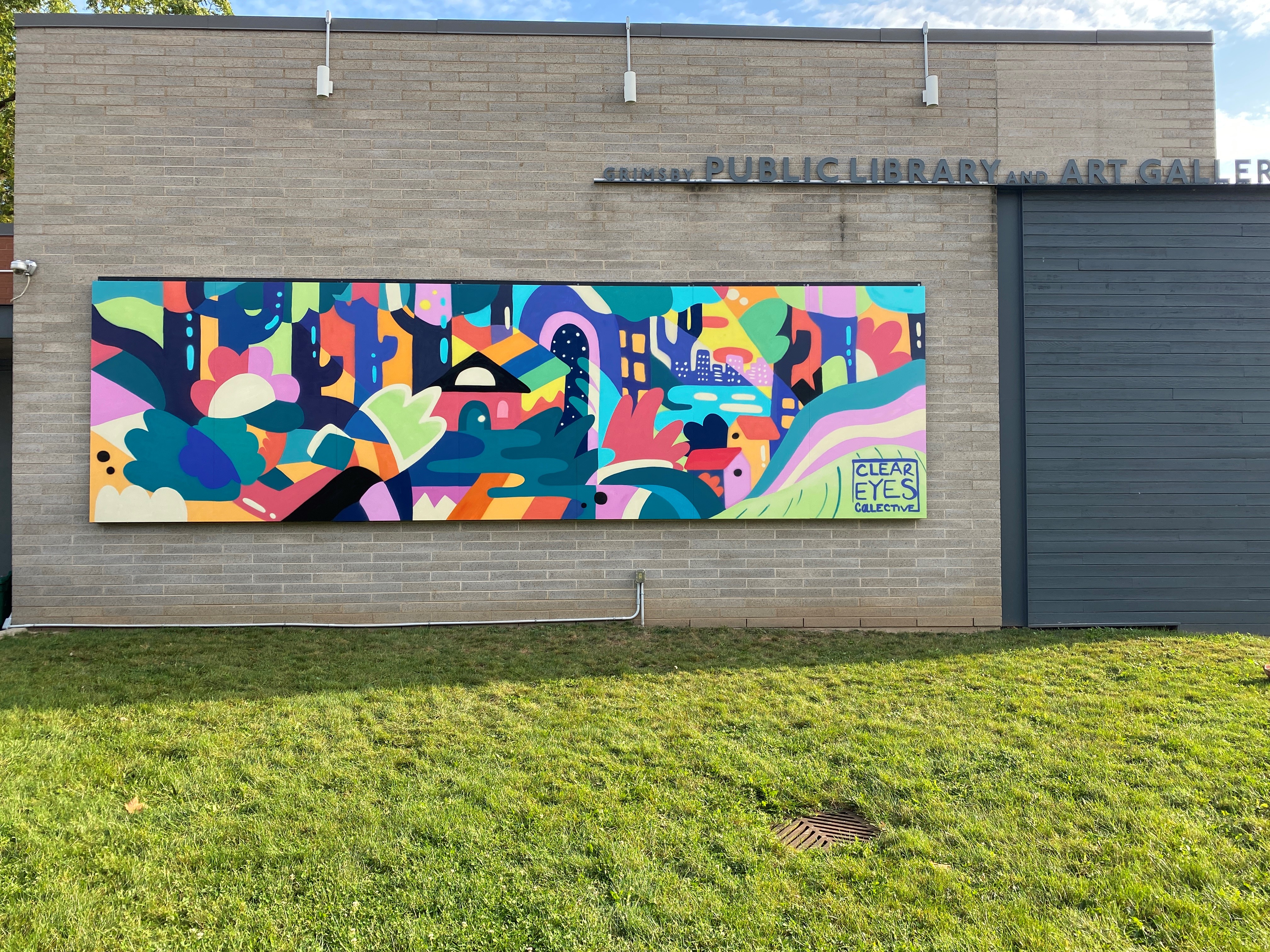
True community is inclusive and nurtures everyone, providing a safe space for all.
Cross Pollination is a commissioned mural by Clear Eyes Collective for the exterior outdoor exhibition platform of the Grimsby Public Art Gallery and Library. Over the course of the summer, the collective collaborated with the community by asking them to generate key words to inspire the artistic development and content of the mural. Some words were reflective of the physical characteristics of the Town of Grimsby; its connection with agriculture, proximity to Lake Ontario, and the Niagara escarpment. Others looked to honor less tangible connections like culture, multiculturalism, and LGBTQ2S+ allyship. After reviewing each prompt, and drawing from their own connection to the area, the collective refined their final design, culminating in Cross Polination , which was live painted onsite during the second annual Grimsby Arts Walk, September 23, 2023.
In the collective’s own words, “Every story begins with a word. Every painting with a brush stroke. Every forest, with a seed. And once portrayed, an idea can travel far beyond its origin, inspiring and nourishing other people and places. The one thing these creative forces have in common is that they all tell a story. Storytelling is important; it conveys the very hearts of those who wrote them. Farmers sew the story of the land, the land plants the seed of creativity in the artist, and the artist creates the image that inspires the people. Who may then become the storytellers? Art and life are often a delicate balance. On the right we have depicted a reader surrounded by elements of nature and community that are found in Grimsby. True community is inclusive and nurtures everyone, providing a safe space for all. We’ve included various pride elements in our colour palette, namely in the right and left sides of the design to illustrate how integral and important these voices are. As you move through the design, the elements cascade into homes and nearby cityscapes, and then back into nature – Portraying how far the influence of these ideas can reach, but also how connected they are to their roots. We invite the viewer to be the reader of this piece and interpret their own story from its images, ultimately planting the seed for future generations to discover.”
CLEAR EYES COLLECTIVE is a mural crew based out of Hamilton, Ontario made up of members Darian Poisson, Adam Bates and Josh Kellett. Their mission is to integrate the mysterious power of art into the plain cityscape, transforming ordinary spaces into an immersive gallery. Their approach to public art has always been rooted in creating vibrant visual environments that connect and uplift the community at large. Clear Eyes Collective have been painting large-scale murals as a team for 10 years, and in that time they have had the opportunity to partner with local businesses, festivals, corporations and different municipalities and cities. They take tremendous care to make sure their designs are tailored to each project, while always maintaining a vibrant and bold style that naturally comes out of collaboration.
PAST EXHIBITIONS
To play a daredevil's advocate
Jordyn Stewart January 13 - April 13, 2024

Jordyn Stewart, Honouring the Heroine of the Falls , 2022 (video still). 10 minutes, HD video. Image courtesy the artist.
Opening Reception: January 20, 2:00 - 4:00pm
Free Zine workshop with Jordyn Stewart and Sonali Menezes: January 13, 12:00 - 3:00pm ( view details )
To play a daredevil’s advocate , pays tribute to Annie Edson Taylor, the first person and woman to go over Niagara Falls in a barrel and survive. In the early 1900’s, during the height of daredevil activity surrounding Niagara Falls, one woman surprised everyone. Confined in only a whisky barrel, padded with a few pillows, Annie Edson Taylor became the first person to successfully plunge over the brink of the Horseshoe Falls and survive.
But what was her overall intention? In search of financial stability, Annie resorted to the most challenging entrepreneurial endeavor; challenging nature. In the shadow of her male counterparts - even with the Falls on her side - success was destined to be unattainable.
To play a daredevil’s advocate pays tribute to Annie and her performance, while asking the viewer to consider their individual relationships with this natural wonder. At what point has the Falls been positioned as a trophy or celebrity you need to photograph yourself next to? Or beat in a match? Where does this inherent desire to challenge the Falls come from? At some point in time this perspective stuck - do we have the need to feel superior to the Falls or recognize our inability to.
Primarily video-based, Jordyn’s exhibition highlights Annie’s feat while also questioning the daredevil’s desire to challenge the Falls through stunts. The exhibition includes paintings and prints from the collections of Grimsby Public Art Gallery, Niagara Falls Art Gallery and Riverbrink Art Museum. Sharing unique representations of the falls evoking Annie’s tumultuous feat, these artworks also highlight the feminist undercurrents of the exhibition including Stewart’s own practice and advocacy for/as a female artist, juxtaposed to the institutional narrative of museological practices historically focussed on collecting male artists.
Take a virtual tour of the exhibition To play a daredevil's advocate! Click the link, or the image below, and start exploring.
Jordyn Stewart (she/her) is an artist, educator and arts administrator. She received her MFA from the University of Waterloo and her BA from the University of Toronto, joint program with Sheridan College in Art & Art History. Her work has been programmed in spaces such as Art Museum, Hamilton Artists Inc., Trinity Square Video, Idea Exchange, and Gallery Stratford. In 2022, her work screened at the Small File Media Festival in Burnaby, BC and OORtreders Festival in Pelt, BE. Jordyn is currently teaching in the Department of Visual Studies at The University of Toronto Mississauga.
She is a settler artist currently residing on the traditional territories of the Hatiwendaronk, Haudenosaunee, and Anishinaabe, including the Mississaugas of the Credit First Nation and the Six Nations of the Grand River (otherwise known as Niagara, Ontario).
Grimsby Public Art Gallery and the Artist would like to acknowledge the generous support of:

two degrees of separation
December 2 - 30, 2023
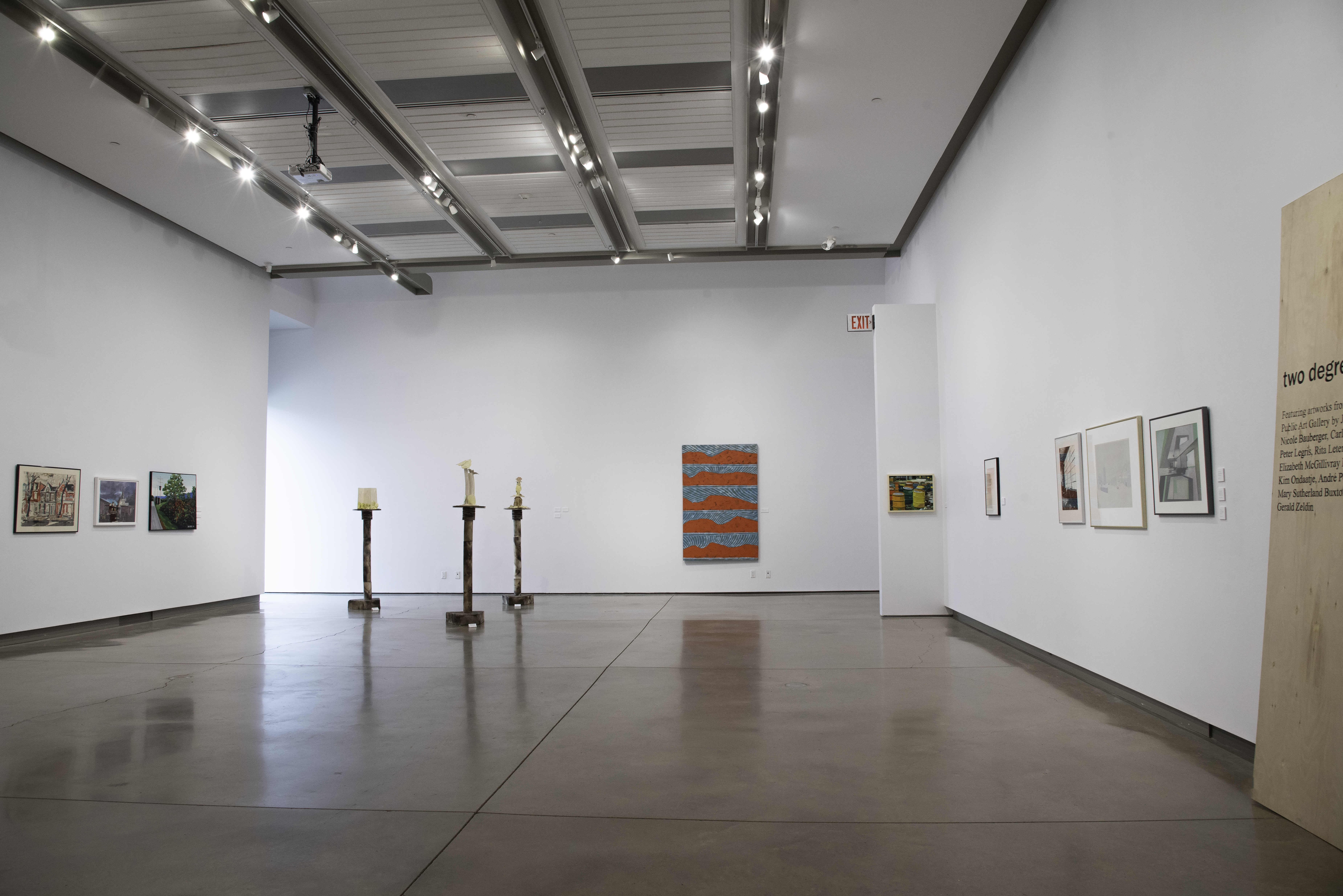
Featuring artworks from the permanent collection of Grimsby Public Art Gallery by Julie Aubin and Darlene Benner, Nicole Bauberger, Carl Beam, Alice Crawley, John Davies, Peter Legris, Rita Letendre, Denis Lukas, Elizabeth McGillivray Knowles, Ciaran Murray, Kim Ondaatje, André Pérusse, Jacques Schyrgens, Mary Sutherland Buxton, Chinkok Tan, Akira Yoshikawa, Gerald Zeldin
The exhibition two degrees of separation weaves together works that comment on 2 degrees of global warming, which would put the whole planet in crisis. As NASA states, “a 2-degree rise in global temperatures is considered a critical threshold above which dangerous and cascading effects of human-generation climate change will occur.”1 While some works on display relate directly to this environmental shift, others may not overtly address it but help weave together a narrative that highlights the human implications of this post-industrial crisis as well as possible futures.
1 https://climate.nasa.gov/news/3278/nasa-study-reveals-compounding-climate-risks-at-two-degrees-of-warming/#:~:text=A%202%2Ddegree%20rise%20in,generated%20climate%20change%20will%20occur.
Michèle Karch-Ackerman and Tanya Zaryski
August 26 – November 18, 2023
Artist Reception and Participatory Performance: Saturday, September 23, 2:00-4:00pm
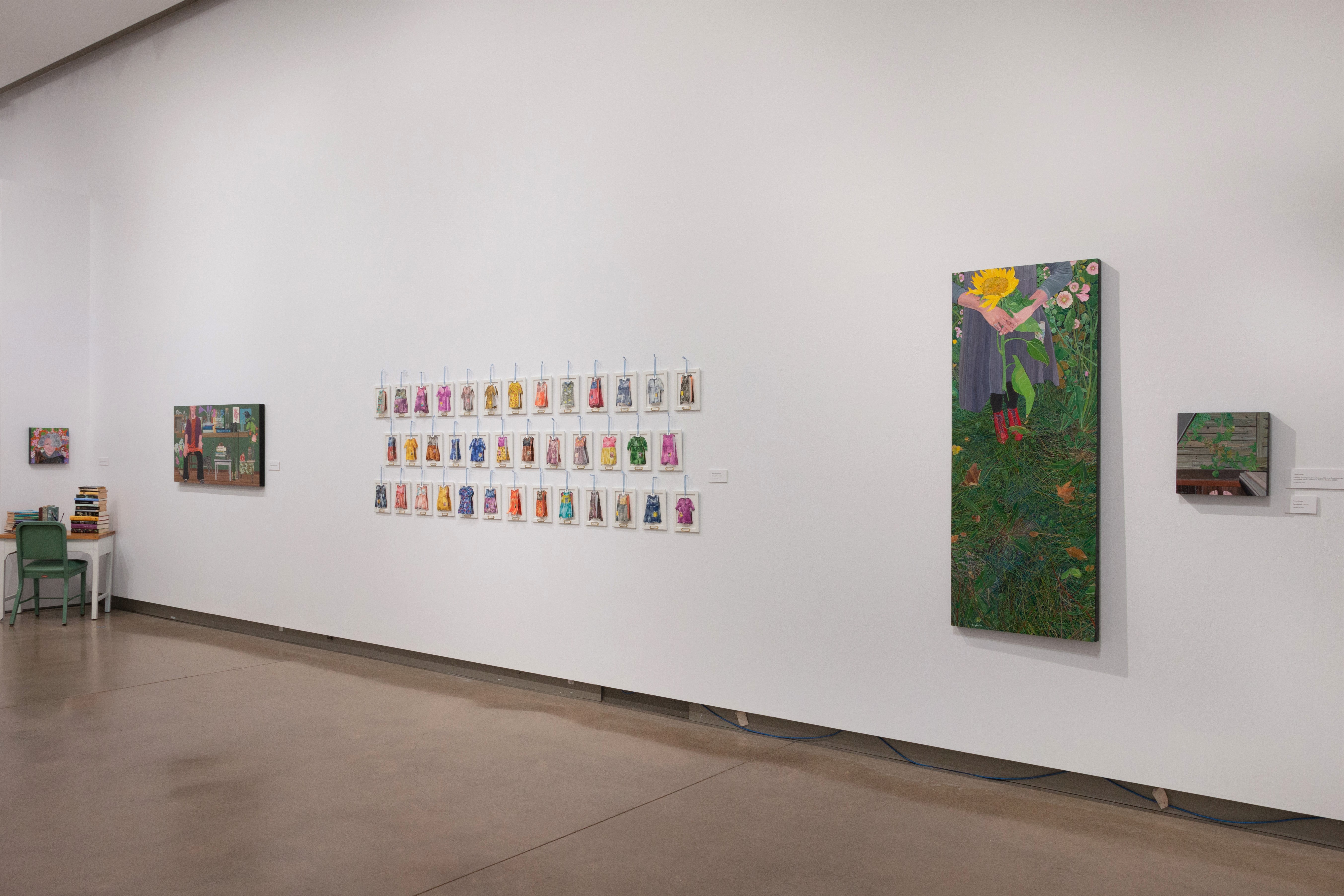
Michèle Karch-Ackerman and Tanya Zaryski, Rewilding Installation view (2023). Photo: Jordyn Stewart
Rewilding is a compilation of works weaved together by Michèle Karch-Ackerman and Tanya Zaryski. The exhibition is comprised of The Library of Dresses , a year-long exploration that involved stitching a wardrobe of dresses to honour deceased female authoresses that inspired Karch-Ackerman, and the bountiful and lush paintings of Zaryski’s isolation fueled longing for connection with friends, explorations of fairy tale lore, imaginative play, and the ‘rewilding’ of her childhood and self. Both are women and mothers, committed to an art practice that tugs at the heartstrings and explores love, nature, memory and narrative. This body of work is the culmination of a year’s worth of work and playful discovery; and many long conversations about creative process, motherhood, love, loneliness, fairy tales, and the idea of rewilding. Zaryski’s Rewilding series plays with animal companions and guides, embedded with quests and magical narratives that at first glance appear attractive and charming, but upon further inspection are not entirely safe. Intertwined with Karch-Ackerman’s Library of Dresses paying homage to authors such as Jane Austen, Mary Shelley and Emily Dickinson, the works dovetail, transporting audiences to speculative worlds of fiction, possibility and healing.
Take a virtual tour of the exhibition Rewilding ! Click the image below and start exploring.

For over thirty years Michèle Karch-Ackerman ’s artistic practice has involved the devotional act of sewing clothing for ghosts; the dead, the forgotten, the hurting. A nationally recognized conceptual installation artist, she has toured her ‘domestic acts of love’ in a series of solo exhibitions in public galleries across the country inspiring viewers with her thoughtful subject matter and aesthetics. From the Yukon Arts Centre and Grande Prairie Art Gallery to the McMichael Gallery, Tom Thomson Gallery and the Campbell House Museum to The Rooms Provincial Gallery in St. John’s Newfoundland (among many others), Michèle has stitched and knitted her ‘kits for lost souls’ to help heal some of Canada’s deepest tragedies.A graduate of the Ontario College of Art and Design, Michèle is the recipient of numerous awards from the Ontario Arts Council and Canada Council for the Arts, residencies across Canada, and has received national media coverage. Her work is the subject of a series of award winning publications documenting her artistic process and exhibitions.
As a painter, glassblower, and mixed media sculptor who creates functional and decorative sculptural works, Tanya Zaryski has a foot firmly planted in both the fine craft and art worlds. Fundamentally, when one sets aside the fluidity of materials and processes, Tanya is at the core, a storyteller.Tanya studied Art and Art History at the University of Toronto, and later attended Sheridan College to specialize in glassblowing. Upon graduation, she worked in the public access glass studio at Toronto’s Harbourfront Centre for three years before moving north towards Georgian Bay.Much of Tanya’s work stems from early childhood experiences growing up on a farm in rural Ontario. As a child, Tanya was interested in the smallest details of the natural world, and how the lives of the creatures were dictated by the environment. For the past twenty years, Tanya has lived in the Beaver Valley area. Her current home and studio reside in Clarksburg, where Tanya lives with her son, cats, and unruly chickens.
Embodying Femininity: Power, Radiance, Care Sharl G. Smith
May 31 to august 5, 2023.
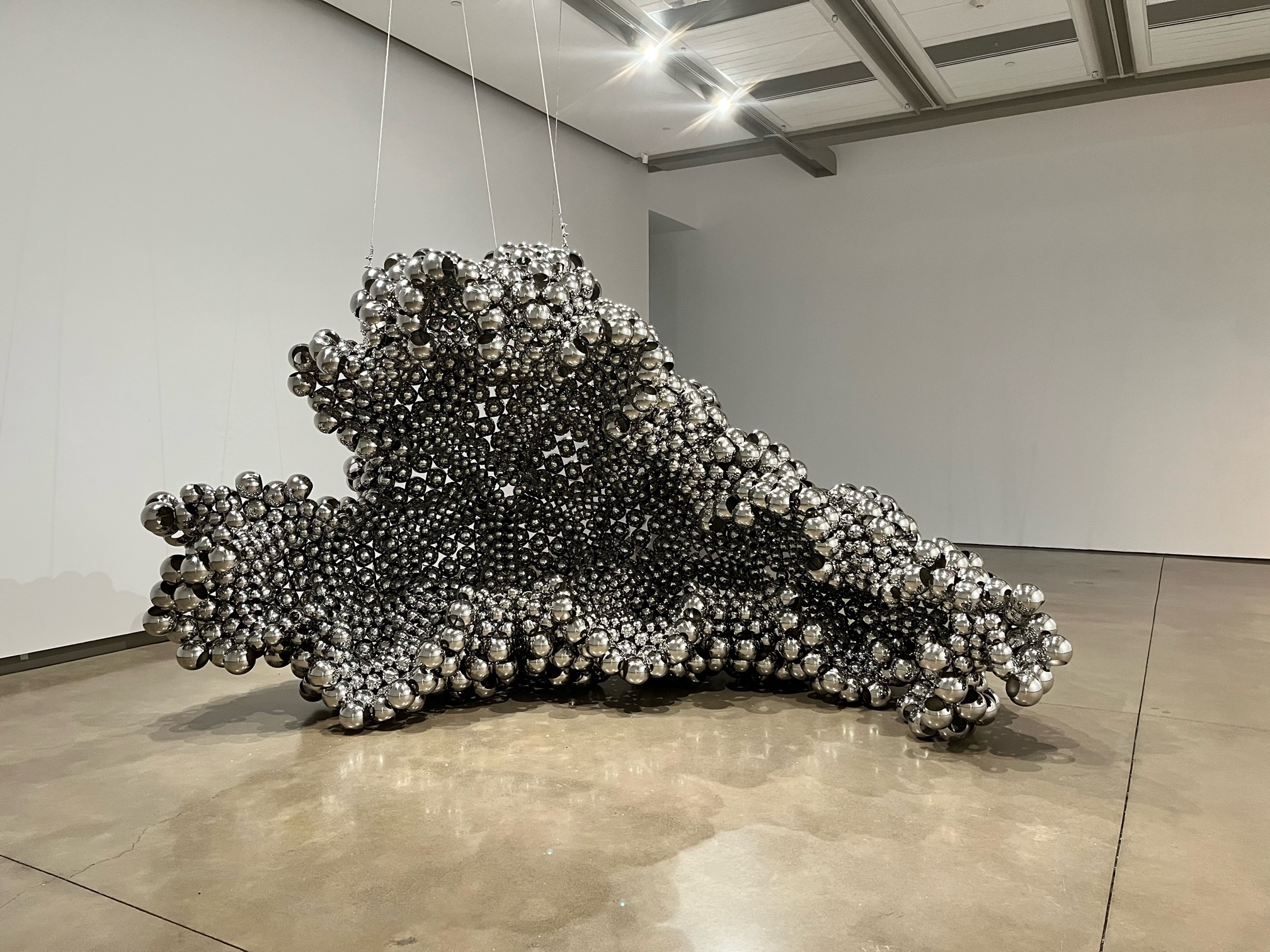
Sharl G Smith, Shelter II, (2023). Installation View. Photo: Jordyn Stewart
Inspired by her personal struggles around her own femininity and its value, Sharl G. Smith’s recent work explores the history of women’s work and domestic care under the lens of an abuse of natural feminine tenderness, care, and love. The invisible labour of women, especially in domestic work, creates nourishing environments for growth, stability, and care. Placing an emphasis on the intrinsic value of femininity, a universal principle that is present in all humans regardless of gender identity, Smith’s work aims to underscore the contributions of women, including the domestic space, as equally essential to the contributions of men.
Embodying Femininity: Power, Radiance, Care embodies these thoughts in a site-specific installation that celebrates women’s work and the long history of women artists whose craft was excluded from conversations in fine art. Constructed using bead-stitching, the life-sized sculpture celebrates weaving and textiles, mediums that have traditionally been categorized as domestic and feminine, and brings to the forefront the idea that such traditionally categorized mediums have served as particularly potent tools to engage with feminist issues in modern and contemporary art. Fortified with a special capacity to express women’s diverse perspectives and stories through their historical associations with femininity, Smith’s sculptural beadwork, Shelter II , is the perfect example of dismantling stereotypes while tapping into different and nuanced experiences of womanhood.
Take a virtual tour of Embodying Femininity ! Click the image below to start exploring.

Originally from Jamaica, Sharl G. Smith is a Waterloo based artist who works primarily in hand-stitched bead sculpture. Smith is self-taught, using her background in architecture to inform and shape her practice. Inspired by her experience working in Zen Buddhist architectural design, Smith has a deep appreciation for the concept of “process as practice.”
Grimsby Public Art Gallery gratefully acknowledges the generous support of the Town of Grimsby and Ontario Arts Council.
Portraits of Home Soheila Esfahani, Travis Shilling, Jordyn Stewart, Diana Thorneycroft
February 21 to april 22, 2023.
Exploring ideas of Canadiana and what it means to be Canadian through depictions of place, identity, and culture Portraits of Home presents the works of artists Soheila Esfahani, Travis Shilling, Jordyn Stewart, and Diana Thorneycroft. Comprised of photography, sculpture, painting, mixed media, and video these works, both together and individually, challenge viewers to engage with preconceptions around what defines being Canadian. From the pastiche landscapes of Diana Thorneycroft to the delicate installation of Soheila Esfahani’s porcelain birds, each artist speaks to aspects of identity, representation, culture, and landscape.
Soheila Esfahani’s installation features 215 porcelain birds, a combination of collected souvenir-like objects alongside handmade birds painted with culturally specific designs. Together, the birds evoke a representation of the movement of culture from place to place by immigrants and tourists, challenging viewers to consider the dissemination of culture and their inherent complexities.
Influenced by the Group of Seven and Norval Morrisseau, Travis Shilling’s work not only captures the Canadian landscape in a visceral way, but also engages with the ever-changing vistas, drawing connections to the charged political climate, most notably around housing and the development of pipelines.
Jordyn Stewart’s work explores place and personal identity, questioning personal and collective assumptions about landscape and the correlation between nature and national identity. The video work, Landscape Study IV uses the physical intervention of the image to explore the artificiality of scenic tourism's depiction of the Canadian landscape. As the video continues, the dripping liquid becomes reminiscent of maple syrup—a common and distinctly Canadian condiment.
Diana Thorneycroft’s tongue-in-cheek, large-scale chromogenic photographs illustrate facets of Canadian identity—deep wooded landscapes, hockey teams, and plaid. Paired against the backdrops of paintings by the Group of Seven and Tom Thomson the foreground of each work presents stereotypical, iconic representations that unfold and explore concepts of national pride and cultural ideologies.
Image: Installation view of Portraits of Home.
Take a virtual tour of Portraits of Home ! Click the image below and start exploring.
The Long View Carolyn Dover
October 18 - december 1, 2022.

Grounded in form and colour, Carolyn Dover’s laboriously crafted works challenge us to take pause and explore materiality, shape, and rhythm—all speaking to our understanding of the language of the lands in this region. Comprised of en plein air work, The Long View is a survey exhibition that gathers together works spanning as early as 2010, tracing the evolution of Dover’s painting practice. From small-scale to the monumental these works explore the perceptions of realism, seen through the lens of Dover. Purposefully distilled, the works are void of any traces to architecture and highways—a pointed effort to underscore the realities of the continued changes happening to the lands.
Culminating as the final presentation of her landscape vineyard series, The Long View not only calls on the depth of these compositions and their vantage points, it likewise references the perspectives of time and the development of Dover’s career. Bringing together this series in one space, the works engage with the intangible nature of the changing landscape, eliciting visual tensions and encouraging visitors to move slowly through the exhibition, to take pause, reflect, and get lost in the landscape.
Image: Carolyn Dover, The Hill , 2022, oil on canvas. Image courtesy of the artist.
Take a virtual tour of The Long View ! Click the image below and start exploring

Community Exhibition Space
GPAG presents the community exhibition space as an opportunity to showcase regional talent and local community art exhibitions to the public in the main lobby.
Echoes From This Land
April 25 – June 25
Artist Reception: June 15, 2:00 - 4:00pm
Participating Artists:
L.P., Sylvia Martin, Sean Ross, Geneva Cooper, Carmel Whittle, Marg Boyle, Tara Cooper, Julia MacRae, Morgan Wedderspoon, Nicole Banton, Alysha Aran, Ivan Rocky Toulouse, Shawnee Danielle, Camryn Hardaker-Schabauer, Eli Nolet, Gina Ortiz, Suzanne Valois, Rebecca Han, Sidney Paul, Linda Jules & Ellijah Jules, Clara Laratta, Monique Martin, Bryce Morison, Awbri Savannah Paul, Yifan Wang, Angie Nehle, Robert Truszkowski, Stacey Fayant, Andrea Vela Alarcón, David Garneau, Nicole Favron, Marie Price, Susan Miller, Becky Katz, Cameron Roberts, Lisa Shalfoun, Robin Paul, Jessica A. Rodriguez, Theodora Oyinloye, Karli Kessup, Angela Snieder, Emily Hinds, Molly Cooper, Shipek Mikunis / Caroyln Lalone, Audrey Ewen, Joviel Buenavente, Carol Howard Donati, Sandra Lamouche, Amber Forno, Mackenzy Vida, Max Paradis, Cher Obediah, Veronika Marks, Johanna Griffith, Jessie Stueck, Rozhin Tayaraniyousefabadi, Ardyn Gibbs, Ana Maria Cruz-Valderrama, Cody Storms, Stephanie Florence, Eric Euler, Mara Bureau, Charlie Saltzman, Bail Lamarche, Elizabeth Sigalet, Lyn LaFortune, Emma Eichenberg, Patsea Griffin, Michelle Purchase, Sarah Martin, Elizabeth Elich

Echoes from this Land aims to visually represent the Truth and Reconciliation Commission (TRC) of Canada’s 94 Recommended Calls to Action by engaging Indigenous and non-Indigenous, artist/creators from educational institutions and communities across Canada. Participants of this project express their own positionality by visually contextualizing one of the calls to action through the media of print, from research, and/or lived experiences. All participants created a limited edition of 16 prints and received 9 plus their own in exchange. The remaining 6 editioned prints from each participants contain all 94 calls to action. These editioned portfolios will be exhibited throughout Canada to continue the critical dialogue and action of reconciliation through a visual lens of knowledge sharing.
Artist statements and Calls to Action
Emily Andrews, Nicole Beno, Charlotte Moffatt and Anja Steensma January 17 – March 9

(left) Nicole Beno, Suspended Flora 2 (2022). Collage on archival paper. Image courtesy the artist. (right) Charlotte Moffatt, Up the Hill (2023). Mixed media. Image courtesy the artist.
Opening Reception: January 20, 2:00 – 4:00pm
Tugging directly at the roots and landscape of Niagara Region, works by Emily Andrews, Nicole Beno, Charlotte Moffatt and Anja Steensma intertwine to create gateways to an area many call home, and even more come to visit. From the geology, flora and fauna of the landscape, to the industries that connect the Region globally and the surreal grandeur of the tourism industry – the works on display embrace the uniqueness of the Region and its complexities through intimate and personal gestures by each artist.
Emily Andrews is a multi-media artist, actress, and musician from Niagara Falls, Ontario. She works in a variety of media, including oil painting, collage, installation art, and sculpture. Her work has been shown in many group and solo exhibitions and can be found in both private and public collections. Her most recent series, Strange Happenings & Rare Findings , features surrealistic oil paintings that explore bizarre and unexplained scenarios in a mid-century setting. Emily has a BA in Visual Arts from Brock University and has taught at Niagara College and Brock University. Nicole Beno is a Slovak-Canadian-based artist and designer, fascinated with technology and its relationship to the natural world. Known for her inventive use of materials ranging from orchid petals, jello, office supplies to moldy strawberries, she employs them in ways that emphasize their aesthetic qualities. Through the process of digital manipulation, she distorts, cuts, collages them into something new. Her photographs and image-making style result in a blend of digital and analog, a remix between the computer and the hand. Charlotte Moffatt’s creations give the viewer an opportunity to venture into her “wonderland” and the way she sees the world. Inspired by flora, fauna, and the imaginations of the children she works with as a Montessori teacher, Charlotte’s work has no shortage of whimsy. Since studying Costume Design in Toronto Charlotte has travelled the world collecting ideas for her creations. Charlotte grew up in Grimsby and now resides in Hamilton. For commissions and more of Charlotte’s artistic endeavours follow her on Instagram @madebycharlottemoffatt. Anja Steensma's working career as a Contract Interior Designer in Ontario, Alberta and British Columbia supports a strong appreciation for value, balance, colour and other elements of design. She looks for the contrast of urban linear forms against freeform natural elements. She has shown and sold her paintings at the Pumphouse Gallery, Niagara on the Lake and twice at Visa Gallery, Brock University, St Catharines. She paints with the Niagara Plein Air Artists in the summer.
Virtual Exhibitions
The Grimsby Public Art Gallery has a number of virtual exhibition experiences for you to enjoy in the comfort of your own home! Please enjoy these virtual exhibitions by clicking on each image:
A Town Called Grimsby, Part II

The second iteration of A Town Called Grimsby launches at the heels of centennial celebrations across the Town and offers a unique look at the creative impacts artists have had over the past 100 years—all from the perspective of the lands, both natural and built.
As we saw in A Town Called Grimsby I, curator Rhona Wenger presented works from GPAG’s permanent collection that traced the impact of artists who lived and created art in Grimsby. From historic portraits of some of the Town’s founding families to images of more recent residents who have left an impression on the community, the exhibition meaningfully connected to the pulse of Grimsby’s community.
From the permanent collections of Grimsby Public Art Gallery and the Grimsby Museum, A Town Called Grimsby, Part II expands on the foundations of Part I and presents thoughtfully developed works that explore the Town’s distinct heritage, treasured natural setting, and architecture. The artists represented in the exhibition, including Dennis Lukas, John Davies, and Diane Ptolemy, all have distinct connections to Grimsby and reveal some of the remarkable elements that share the story of the Town. Together the works in the exhibition engage with one another, weaving new connections and perspectives around the beauty and power that the lands can show us.
Both A Town Called Grimsby, parts I and II bookmark the series of signature celebrations that have taken place highlighting Grimsby’s centennial year and underscore the remarkable contributions of artists over the last 100 years. Take a virtual tour of A Town Called Grimsby II
Special Events
Special events held at the Gallery allow visitors to experience art in many ways and often provide the opportunity to interact directly with artists and creators. Community art-making projects encourage direct participation. Lectures, discussion groups and workshops are both educational and enjoyable.
Wayzgoose Book Arts Fair
Saturday, April 27, 2024
9 a.m. - 5 p.m.
FREE Admission
Always held on the last Saturday in April, the GPAG's Wayzgoose Book Arts Fair is an annual gathering of private press printers, bookbinders, print makers, paper marblers and other artisans celebrating the art of the hand-made book.
The 2023 Wayzgoose Anthology is currently available to purchase for $80 (includes HST) plus shipping, as well as many back issues of the anthology. If you are interested in purchasing this unique work of art, please contact [email protected] or 905-945-3246.
For more information about Wayzgoose, or how to become an exhibitor, please visit our Wayzgoose Book Arts Fair page.
Both the 2020 and 2021 Wayzgoose events were held virtually, due to COVID-19 restrictions. Please visit the following links to enjoy the virtual content:
2020 - 42nd Annual Wayzgoose - Virtual Presentation
- Photo album on Facebook
- YouTube video
2021 - 43rd Annual Wayzgoose - Virtual Presentation
- Instagram posts
Sign up to stay up to date with news from the Town of Grimsby
Stay up to date on the Town's activities, events, programs and operations by subscribing to our News Alerts.
This website uses cookies to enhance usability and provide you with a more personal experience. By using this website, you agree to our use of cookies as explained in our Privacy Policy.
I Want To...
Apply or Register
Activities and Programs Building Permit Burn Permit Dog License Facility Booking Job Opportunities Marriage Licence View Bid Opportunities
Dog Licence Facility Rental Parking Ticket Permits Taxes Water bill
Report an Issue / Contact Us
Report an Issue Contact Us
K-12 Resources By Teachers, For Teachers Provided by the K-12 Teachers Alliance
- Teaching Strategies
- Classroom Activities
- Classroom Management
- Technology in the Classroom
- Professional Development
- Lesson Plans
- Writing Prompts
- Graduate Programs
The Importance of Art Class
Janelle cox.
- May 24, 2024
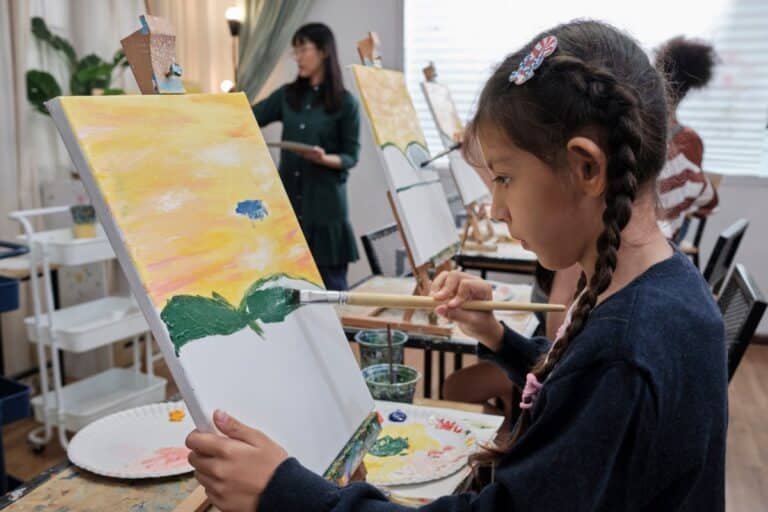
In today’s technology-driven classrooms , art remains an important component of student development. Despite often being the first to be cut from the curriculum in some schools, dismissed as a luxury, or merely a source of fridge-worthy projects, art education holds profound benefits.
From fostering cognitive abilities and emotional resilience to enhancing academic performance and learning lifelong skills, art class provides much more than just a creative outlet. Here, we’ll explore why art class is so essential and how to make it more accessible to all students.
Cognitive Skills
Art classes play a critical role in developing a student’s cognitive skills. They encourage creativity, allowing students to express themselves in a different way other than writing. This freedom promotes innovative thinking. It also helps to develop students’ critical thinking skills.
As students look at their work and that of their classmates, they learn to observe, analyze, and make judgments, which are all valuable skills students will use in all aspects of their lives. Art classes can also enhance students’ visual-spatial skills. When students are drawing, painting, or creating sculptures they need to understand space and perspective which are skills they need if they ever go into fields like architecture or engineering.
Social-Emotional Learning
Art class extends beyond a student’s cognitive development, it can also impact their social- emotional learning . Artistic activities can tap into students’ feelings so if they have a hard time vocalizing their feelings, they may be better able to express themselves through art.
This can feel therapeutic and help to build their self-confidence. It can also release any anxiety and stress they may be feeling. Art can also promote empathy. When students explore different art forms and learn different cultural and personal perspectives, they have a better understanding of other people’s experiences.
Academic Achievement
Various studies conducted over the years have shown a correlation between art education and academic achievement. Reports from organizations like the Arts Education Partnership and the National Endowment for the Arts in the United States suggest that the arts are linked to improved test scores, enhanced reading and language skills, and higher rates of going to and completing college. Additional findings show artistic activities enhance memory and attention to detail. Integrating art with other subjects, referred to now as STEAM (Science, Technology, Engineering, Arts, and Mathematics) can help make learning more relatable and deepen students’ understanding and retention.
Lifelong Skills
The skills learned in art class extend far beyond the classroom. In today’s job market creativity is valued. Employers are seeking individuals who are innovative, creative, and who think outside of the box. This need for creative thinking is ranked as a top skill for future professionals. Additionally, art class teaches risk-taking and resilience. By continually taking creative risks students are developing resilience which can help them with any challenges they may face in the future.
Cultural Awareness and Appreciation
When students are engaged with art forms from different cultures , they gain a deeper understanding of global cultures. They learn to respect and value different viewpoints and traditions. By creating and discussing art from various backgrounds, students dispel stereotypes and prejudices, promoting a society that is more inclusive and empathetic to others.
Making Art Class Accessible
Art classes are not always accessible to all students. This may be driven by socioeconomic status, school funding, or geographic location. Ensuring that every student has access to art education is crucial for a student’s well-rounded academic experience. Here are a few approaches to achieve this goal.
Invest in Art
One way to make art classes universally accessible is to invest in art programs. Allocate funds for basic supplies and materials that will inspire students to create as well as invest in professional development for teachers. Teachers who have a background in art education will help foster a greater appreciation for the arts among students.
Integrate Art
Art can be integrated into the core curriculum to ensure all students have access to art education. STEAM education combining art with other core curricula can become fundamental to every child’s educational experience.
Utilize Technology
Art education can be made more accessible through technology. Digital tools can bring art classes to children across the globe. Virtual classes mean students can learn, create, and share their work with anyone worldwide.
Form Partnerships within the Community
Partnerships with local art galleries and artists can provide schools with additional resources. These partnerships might involve professional artists working with students, or collaborations with local museums that offer field trips or workshops. Community involvement enhances the school’s art program and strengthens the community culture.
Art class is a vital part of a child’s educational experience. It nurtures cognitive, social, and emotional skills, boosts academic achievements, makes them more culturally aware, and prepares students with skills they will use throughout their lives. Making art education accessible for all students should be a priority for all leaders and administrators .
- #ArtClass , #Classroom Management
More in Classroom Management

Beyond Monkey Bars: The Vital Role of Recess in Child Development
Do students need recess? This question has been discussed for years among parents and educators….
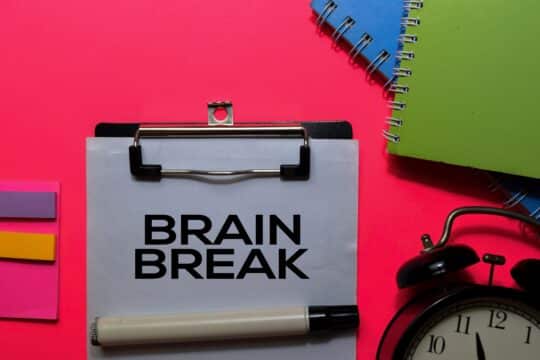
Brain Breaks: The Science Behind it and the Benefits
The Science Behind Brain Breaks Most educators experience students’ glazed eyes, heads down,…
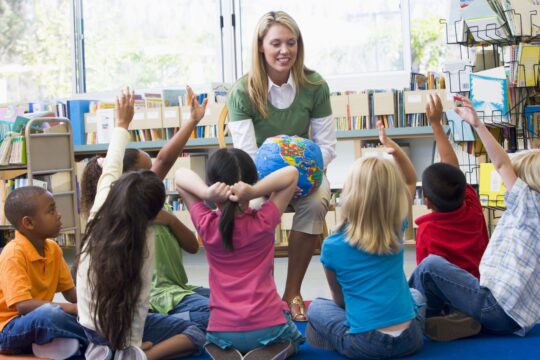
Classroom Attention-Getters to Use for Engaging Students
For many teachers, classroom management is a challenge. Without various strategies in your…

Unmute the Classroom: Unleashing the Power of Student Participation
The silence of unengaged students who are hesitant to raise their hands or…
Open Access is an initiative that aims to make scientific research freely available to all. To date our community has made over 100 million downloads. It’s based on principles of collaboration, unobstructed discovery, and, most importantly, scientific progression. As PhD students, we found it difficult to access the research we needed, so we decided to create a new Open Access publisher that levels the playing field for scientists across the world. How? By making research easy to access, and puts the academic needs of the researchers before the business interests of publishers.
We are a community of more than 103,000 authors and editors from 3,291 institutions spanning 160 countries, including Nobel Prize winners and some of the world’s most-cited researchers. Publishing on IntechOpen allows authors to earn citations and find new collaborators, meaning more people see your work not only from your own field of study, but from other related fields too.
Brief introduction to this section that descibes Open Access especially from an IntechOpen perspective
Want to get in touch? Contact our London head office or media team here
Our team is growing all the time, so we’re always on the lookout for smart people who want to help us reshape the world of scientific publishing.
Home > Books > STEM Education - Recent Developments and Emerging Trends
Thinking, Alternatively: The Application of Art, Philosophy and Holistic Practice in the Teaching of Science, Technology, Engineering and Mathematics (STEM)
Reviewed: 01 December 2023 Published: 29 May 2024
DOI: 10.5772/intechopen.114039
Cite this chapter
There are two ways to cite this chapter:
From the Edited Volume
STEM Education - Recent Developments and Emerging Trends
Edited by Muhammad Azeem Ashraf and Samson Maekele Tsegay
To purchase hard copies of this book, please contact the representative in India: CBS Publishers & Distributors Pvt. Ltd. www.cbspd.com | [email protected]
Chapter metrics overview
5 Chapter Downloads
Impact of this chapter
Total Chapter Downloads on intechopen.com
Total Chapter Views on intechopen.com
The challenge for education in contemporary times is how to combine rich subject knowledge with conceptualization, whilst also supporting curiosity, criticality and creative problem-solving through application. More importantly is the embedding of well-being in curriculums to ensure the evolution of being, becoming, and thriving subjects towards enhancing life-long learning. This chapter will explore the potential of interdisciplinary working across philosophy and the humanities to develop the kinds of critical education required. Using practical examples, we will demonstrate how educators can think in interdisciplinary ways, within the constraints of formal curricula activity. We will explore opportunities for ‘thinking, alternatively’ across STEM subjects, focusing particularly on the role of art and philosophy. Drawing on posthuman thinking and the work of Deleuze, Guattari, Dewey and others, we consider philosophy to be an active and creative practice which can work to open new ontological positions and modes of thought. We consider how art can work with science, not as a tool in the service of understanding scientific concepts, but to reimagine what science is, what it can do, and to break down nature/culture binaries. We aim to show how transdisciplinary educational practice can aid human and non-human well-being, through reframed relations within and without the classroom.
- conceptualisation
- interdisciplinarity
Author Information
Christine challen *.
- Sunderland University, Sunderland, United Kingdom
Kay Sidebottom *
- University of Stirling, Stirling, Scotland, UK
*Address all correspondence to: [email protected] and [email protected]
1. Introduction
“Imagination is more important than Knowledge” Albert Einstein
“Where is the wisdom we have lost in knowledge?”
“Where is the knowledge we have lost in information?” (T.S. Eliot, The Rock)
The complexity of our current worldly condition - an entangled, relational set of human and environmental predicaments such as climate change, digital revolution, environmental degradation and the rise of zoonotic pandemics - requires new conceptual understandings of the world and consequently, different framings of education and schooling. Braidotti ([ 1 ], p. 1181) terms this contemporary phenomenon as the ‘posthuman predicament’; a convergence of multiple technological, ecological and democratic challenges which, although often dealt with separately, need to be understood as connected and intra-acting. Posthumanism as referred to here is essentially a final call to ‘…mark the end of the self-reverential arrogance of a dominant Eurocentric notion of the human, and to open new perspectives’ ([ 2 ], p. 3). The post means ‘after’ humanism, acknowledging the benefits of humanism (particularly around struggles for equity via identity-related civil action), but recognising the limitations of it regarding the reification of what is typically encoded as ‘Man’: that is, white, male, European, able-bodied, neurotypical, straight and so on. Posthuman thinking thus requires us to go beyond, or after humanism as we augment and reposition the voices of those overlooked and oppressed by Enlightenment ideas of ‘humanity.’ It also turns towards the body as an important and often overlooked site of learning, calling us to start our understanding from our own situated, embodied contexts in acts of the politics of location [ 3 ] which do not universalise but understand both teachers and students as individuals with facing different, often intersectional, modes of oppression.
Despite the irrefutable complexities of current times, the compartmentalised way in which educational disciplines are currently taught within English education continues to reflect humanistic, Cartesian binaries and dualisms which fail to account for our predicament, or to create new systems of knowledge which allow us to deal with the various issues differently. The siloed nature of education is further entrenched via neo-liberal practices of measurement, comparison and competition which do not allow for complexity and nuance in either practice or judgement. The emphasis is on pedagogical activities which will have a significant impact on students’ measurable outcomes; not those that impact individuals emotionally or relationally [ 4 ]. Within these spaces it is difficult (and in fact counter-cultural) for teachers to find room for consideration of deeper ontological or epistemological questions around education in the current times. Alongside this sits a culture of anti-intellectualism, whereby subjects such as art, literature and science are downgraded into the kind of knowledges that can be memorised and regurgitated to suit prescribed tests rather than studied deeply and meaningfully. Thinking, in an age of academic and expert distrust, is seen as the practice of the elite (that is, the preserve of those at the higher echelons of the educational system); yet we are in a time that calls for new ideas and approaches to complex ethical dilemmas more than ever. ‘Think, we must’ as said Virginia Woolf ([ 5 ], p. 60); but in accelerated educational consumer cultures of product, customer and service, time and space for these activities is increasingly eroded.
Practices such as interdisciplinarity, which work towards the integration of differing knowledges and draw on diverse ontological approaches to embrace multiple perspectives can be helpful in allowing new ideas and worldly understandings to be foregrounded. However, as a practice interdisciplinary education can also be seen as pre-supposing and cementing the very disciplinary differences it purports to disrupt. Nina Lykke therefore suggests that we need to move beyond disciplines entirely by embracing postdisciplinarity , a term which ‘… refers to more transgressive ways of producing academic knowledge which destabilise, deconstruct and disrupt the hegemony of distinct disciplines and the classic academic divides between human, social, technical, medical and natural sciences’. (Nina Lykke [ 6 ], p. 333). Whilst the current constraints of ‘education-as-usual’ may restrict teachers’ ability to truly move beyond disciplines in this way, we argue in this chapter that trans-disciplinarity - the synthesis of subjects and removal of boundaries through the transversal merging of science, arts and humanities - can help us to reimagine ‘subjects.’
In this chapter we explore the challenges and opportunities for working in transdisciplinary ways across STEM subjects, focusing particularly on the role of art and philosophy. Drawing on posthuman thinking and the work of Deleuze, Guattari, Dewey and others, we consider philosophy to be an active and creative practice which can work to open new ontological positions and modes of thought. We then consider how art can work with science, not being employed as a tool in the service of understanding scientific concepts and ideas, but to reimagine what science is, what it can do, and to break down nature/culture binaries. In doing so we aim to show how transdisciplinary educational practice can aid human and non-human well-being, through reframed relations both within and without the classroom. We draw on a range of practical examples from practice in order to illustrate our ideas, not in a prescriptive sense but as a jumping-off point for educators’ own innovations and experiments.
Also embedded across this chapter are quotations, stories and reflections from creative narratives, poetry and biography. In this way we emulate the practices we espouse by breaking the disciplinary silos entrenched within academic writing. This approach is diffractive, in that it allows us to read things through other things; in the same way that a pebble when thrown into water with a second pebble will cause the waves to intersect, so interrupting academic writing with creative texts will allow new readings, ideas and patterns of thought to emerge [ 7 ]. Diffractive writing, in a similar way to interdisciplinary pedagogy, allows us to be affected in different ways. In adopting this approach, we also encourage readers to take ‘lines of flight’ [ 8 ] in their thinking; we therefore pose the following questions to you, our reader. What other connections can you make, and what other texts or work of art can you connect to the ideas shared here?
2. Teaching in complex times
The challenges of working within an educational system driven by data, testing and results render it difficult to teach outside the boundaries of subjects and disciplines. Standardised tests limit the scope for innovation and moving outside of prescriptive lesson plans. The reality of testing culture is pervasive and damaging; recently a teacher told me (Christine) the following about her daughter: “ She was driven by exam results and exam result day was her Christmas day.” Meanwhile, outside the artificial process of examinations lie real socio/economic problems that society and the world is facing, and these require deeper, innovative and inter-connective thinking.
An example of the lack of such connections in schools was highlighted recently in my (Christine’s) teaching. In the year 10 Science end-of-term assessment paper was a question which asked the pupils to measure the area around each circle of antibiotic resistance in an agar plate (a required practical that children undertake in Biology). Not one of them attempted this question, yet when asked in class if they had learnt how to calculate the area of a circle in maths and what the formula is, they were all able to answer the question correctly. Despite this mathematical knowledge they failed to make this connection during the test, and in failing to see Maths and Science as inextricably connected, lost valuable marks as well.
Further illustrating the siloed understandings of knowledge in education, on August 3rd, 2023, Katherine Birbalsingh (Head Teacher of Michaela School, London and former adviser to the UK government on social mobility) tweeted the following:
You want kids to read? Make them read. Constantly. Break it down. You want kids to add and subtract? Do maths. Constantly. Means no phones. No yoga. No gardening. No chatter and lack of attention.
Birbalsingh, known as ‘@MissSnuffy’ on the social media platform X (previously known as Twitter) is well-known for her provocative stance regarding the promotion of traditional education. The tweet here exemplifies in many ways the emphasis in contemporary English teaching practice on Cartesian dualisms between mind and body. Rather than seeing activities such as gardening as having educational, as well as therapeutic and environmental value, they are seen as extraneous to the ‘real’ and valid practices of maths and reading. By establishing such false binaries however, we risk students being unable to think divergently across disciplinary boundaries; struggling to integrate maths within other subjects, or failing to understand maths as a life skill which could be equally applied in calculating gaps when planting seeds, measuring wood for planters, or estimating growth and harvesting times. The examples provided here demonstrate that there is a real need for strategies to be embedded which allow for deeper thinking, so that knowledge can be adapted to different situations and subjects. As Eliot states in The Rock ([ 9 ], p. 147) ‘ Where is the wisdom we have lost in knowledge? Where is the knowledge we have lost in information? So, how can this be done effectively in practice?
Rainbows, Bikes, and Lego
What is a rainbow? This is a simple question that often begins with very young nursery/early primary-aged children producing pictures of colourful semi-circles. As they move up into higher primary, or secondary school, this visualisation can be developed into connections with physics and the diffraction of white light, understandings of meteorology/weather, and maths through an appreciation of the angles of diffraction of the light colours. English Literature and History can also be embedded through the introduction of songs, poems and stories, mythology and magic around the concept of the rainbow and the infamous “pot of gold” at its end. By drawing together nature, science and culture, multiple understandings of a common phenomenon can help children to understand the ways in which knowledge is not siloed but relational, contextual and mediated.
Another example which I (Christine) undertook as part of a STEM transition from year 6 primary to Year 7 secondary was titled “The Beat of Life.” In this session the pupils created a heart out of clay using straws to illustrate the arteries’ veins. Some decided to sketch and label a heart from the power-point picture and one of these is framed on my living room wall as it was so good ( Figure 1 ).

Framed pupil heart sketch from “beat of life session.”
The children then had to create a storyboard of how the heart relates to health, exercise, poetry, poems and literature and if time allowed write a rap called ‘The Beat of Life’. The pupils thoroughly enjoyed these sessions and were enthused about being able to think differently about science. One of the parents said to me after it “I hope the teachers at my son’s secondary are as engaging and passionate about their subject as you. He has learnt a lot today”.
I have also used sweets to get the pupils/students to create different body systems. This is easy to implement in practice a selection of sweets and get the pupils/students to be creative as shown in the diagrams below. Further it has huge successful results as the students used this in assessments to recall the different organ systems and their parts to obtain high grades of merits and distinctions ( Figure 2 ).

Candy anatomy of the kidney and student assessment showing how this has been used to assess learning.
In more recent times I have also used Lego to support the engagement of pupils in science/medical topics. In February I attended a workshop session which involved building a mini heart from Lego. This was suitable for all ages, young and old, and it made me think of adapting and building intersubject connections in this activity not just for school but University students as well. While being a creative, artistic process, this activity also instilled a spatial awareness of the heart structure; the red and blue colours representing the oxygenated and deoxygenated blood and opening room for comprehending the reality of blood flow between the heart and lungs ( Figure 3 ).

Miniature Lego heart.
These lung miniature kits can be bought from companies such as Brick This ( https://www.brickthis.co.uk/ ), they have full instructions to build and support useful conversations around the blood flow of oxygenated and deoxygenated blood in the heart. This process simultaneously enhances spatial awareness and kinaesthetic learning.
It can be hard to move children accustomed to subject-based teaching into spaces where they are able to think in interdisciplinary ways. One method to enhance this thinking is to provide pupils with a picture of an object such as a bicycle and ask them to identify the different ‘subjects’ implicit in this. Examples could include physics in the gears/friction tyres, wind resistance, bodies and machine interaction, circle shapes of wheels, and angles of spokes. This simple task unfolds the mind to many different aspects and concepts and is a great way to enhance trans-interdisciplinary thinking.
These examples illustrate how we can deepen learning and engagement and allow pupils to make subject connections. The embedding of building and artwork enhances the social, team-building aspect of learning and supports emotional and mental regulation and expression which can support behavioural and learning subject and emotional barriers for children with special educational needs.
3. Thinking, otherwise
In the challenging, complex landscape of life and in particular education, the idea of freeing the mind, and dwelling in the conscious/subconscious becomes not only appealing but almost a necessity in order to enhance curiosity, innovation and critical thinking. Additionally, it can enable the breakdown of barriers (such as those between subjects and the false binaries between cognition and emotion) and support the development of trans-subject, interdisciplinary connections. In this section we will discuss the role and importance of philosophy in implementing strategies towards the enhancement of these outcomes. Further we will examine the mystique and cyclical nature of time (via texts such as TS Eliot’s poem, ‘Burnt Norton’) and consider how disrupting linear understandings of temporality can influence the ability to think deeply and process information, thereby resulting in novel ideas and discussions.
3.1 Time and the mind
Most would agree that life is run or even “controlled” by time; basic routines are all very much run against the clock. Our modern systems are centred around chronos (linear time) rather than aion (an understanding of time as cyclical, dynamic, insurgent, and connected to nature [ 10 ]). As Bridle [ 11 ] reminds us, ‘…the idea of global time - a single, universal standard, divided into hours and minutes, and shifting across time zones - is a recent one.’ To imagine time working differently in education (whether it be primary, secondary, college and/or University) feels impossible; teaching sessions all have a set time frame and work to institutional clock rhythms. However, what if we could pause or interrupt time such that we lose that barrier? And how does that impact, not only on mental wellbeing but from an educational standpoint?
The issue of time is discussed eloquently in the late Kate Gross’s podcast Private Passion [ 12 ]. While she lay gravely ill, Kate talked openly about her struggles with time and how she wanted to pause each moment to enjoy what she called ‘the intensity of light and colour.’ This has similarities both with the nature writings of authors such as Nan Shepherd and Tove Jansson, both of whom had a deep love of nature and were able to explore as independent spirits with the freedom of no time constraints; Shepherd in the Cairngorms, Scotland, and Jansson in a remote island off the Gulf of Finland. As with Gross, both, in Shepherd’s words, ‘immerse themselves’ in their environments mind, body, soul and senses.
The common theme within the similar yet different scenarios is the desire to fully entangle body and senses with the environment in order to disrupt clock time. However, while Shepherd and Jansson had seemingly no time restrictions, Gross was terminally ill; a ‘ticking time bomb’. It is interesting and almost ironic that as soon as the impending knowledge of death lies ahead, we value and want to pause or stop time. However, in life we feel the need to battle with time, unable to appreciate how the sheer enormity of pausing and soaking in the moment allows us to reflect, process and restore. It is as Gross states in her podcast, the need to ‘look after our hinterland’, not just in terminal illness but life itself.
Taking what Jasmine Ulmer [ 13 ] refers to as ‘slow ontology’ requires us to attune to time in different ways, working with artistic moments of flow, paying attention to the rhythms of nature, and disrupting linear processes which are restrictive and time bound. From an educational perspective this may involve taking learning outside - from closed classroom systems to the open flows of the natural environment - or paying attention to the ways in which learning extends outside school clock time to corridors, playgrounds and homes. These disruptions can be difficult however, particularly in the era of Coronavirus in which the language of speed, acceleration and catch-up is prevalent. In the classroom there is often a constant struggle to get through a dense curriculum or obtain a quick answer to a question so that learning can be evidenced, and the class can move on. The idea of even pausing, giving pupils time to absorb to process information, or reflect individually or with others can feel uncomfortable or risky, yet there is power in that pause regarding deep learning as well as wider human growth concerning being, becoming and thriving.
It is perhaps important at this point to clarify and define the three commonly known states of mind as explained via the Chambers Dictionary [ 14 ].
“Consciousness defines our thoughts and awareness, subconscious is defined as memories, motives, intentions and thoughts which the individual is only dimly aware, but which exert and influence on his/her behaviour and unconsciousness is the deepest inaccessible level of the psyche in which repressed impulses and memories are present in a dynamic state”.
The concept of time and its relationship with the state of mind, is eloquently expressed in T S Eliot’s [ 9 ]; the first of the four quartets. At the start Eliot states: ‘Time present and time past are both perhaps present in time future’. Alluding to the way in which our understandings and experiences echo the past, as well as recognising their connection to the future, Eliot emphasises the need to value time and take account of the present moment. He goes on to describe the moment of fixity of time when he states, ‘Allow but a little consciousness, to be conscious is not to be in time’ and it is within this state of mind, we can pause to appreciate to immerse process and deepen our understanding, that is so essential to building transdisciplinary subject knowledge and emotional creative human growth. Such rich experiences we have within the present/past are important not only in our human growth and ability to understand ourselves but to help others understand themselves also. Interestingly, Pullman in The Amber Spyglass ([ 15 ], p. 97) states: ‘In the landscape of your mind’ that ‘conscious beings make dust’; emphasising the way in which thought, sentience and recognition can allow us to materialise knowledge (dust here being a physical manifestation of creative and sentient acts). This knowledge he describes as not a ‘fixed quantity’ but something that gets renewed all the time by thinking, reflecting and by gaining wisdom. Further to this, Pullman describes how through these actions of pause and reflection you can pass on wisdom and help everyone else to learn about themselves, thereby enabling them to ‘keep their minds open and free and curious.’ This understanding of learning as relational and distributed troubles the individualised nature of education-as-usual, in which the ‘dust’ of knowledge is owned and used as capital.
This social transfer of knowledge supports Kalanithi’s ([ 16 ], p. 97) view that ‘Human knowledge is never contained in one person; it grows from the relationships we create between each other and the world and is still never complete.’ This highlights that the human mind cannot necessarily thrive on constant bombardment of learning content by rote subject knowledge alone, and that there is a need for a humanistic aspect, such that the desire for knowledge incorporates a social and emotional aspect as well as subject authority.
3.2 Philosophical practices to disrupt clock time
Deleuze and Guattari [ 17 ] suggest that philosophy should be a practice of creativity and development of new ideas, with education thus being not about repetition but creation: ‘Philosophy is the art of forming, inventing, and fabricating concepts’ (p. 2). Philosophical concepts can be activators, used to reimagine education, or to defamiliarize ourselves from schooling-as-usual. Bringing art and philosophy together with science thus allows for affective understandings and different modes of thought, or lines of flight, which allow newness in and new understandings of the world to be formulated. One such creative practice, which also subverts linear, individualised and time-bound practices of teaching, is community philosophy, or Philosophy for Children (P4C) [ 18 ]. Embedding philosophical inquiry into Science education can allow for slow thinking, deep exploration and connection of science to wider social, environmental and cultural issues. This methodology facilitates active listening, mitigates binary oppositional thinking [ 1 ], and empowers young people to reflect critically in a democratic way [ 19 ].
In P4C a facilitator introduces a stimulus related to a topic (e.g., photograph, video, news clip); students discuss it in small groups and then identify the related concepts (e.g., justice, health, community). Groups then develop a question (via a democratic voting process), and the facilitator prompts wider discussion. Afterwards, participants engage in active reflection to critically examine how the process unfolded in terms of individual contributions, group dynamics and the creation or enactment of new concepts and perspectives. Such a practice has the potential to deepen understanding of topics such as ethics in science, as well as opening space to deal with complexity, appreciate different contexts and locations, and reimagine new ways to enact ethics in practice.
In a similar example of practice, Science teacher Tait Coles explains in his book, Punk Learning [ 20 ] the use of ‘Question Formulation Technique’ [ 21 ] and how it can be employed with pupils to disrupt teacher authority and provoke creative thinking. After introducing a stimulus (for example, an image of the digestive system), pupils are encouraged to create a list of questions about it, no matter how unusual, inappropriate or odd. Working with divergent thinking, rather than replicating the input of the teacher, is shown to foster creative and engaged responses as well as enabling students to work further on the crafting of incisive and thoughtful questions to provoke deeper engagement with scientific concepts. In this way, Socratic questioning techniques, with all their unpredictability, can disrupt ‘teaching-as-usual’ and open space for exciting perspectives which may well extend beyond the lesson time and walls of the classroom.
4. Creative practice and STEM
In Eliot [ 9 ] stated that ‘Art required a form which could impose order and meaning on experience.’ He goes on to say that ‘… all art emulates the condition of ritual’; however, this understanding of art as form and cohesion is challenged by outsider practices such as Art Brut. In Peter Shukie’s pedagogical practice as a teacher educator [ 22 ]. Peter removes any kind of order in his classroom to allow for ‘artistic expression’ using raw art. Shukie describes art practice as enacting an ‘alternate psychic reality’ and questions ‘what happens when the foundations of normality are removed’ (n.p.). It is interesting to consider this as another state of mind or a process of flow [ 23 ], where the loss of inhibitions is neither conscious nor sub/unconscious. Within this state can lie a wealth of creativity, innovation and a sheer sense of being, becoming, and thriving. Some of the great artists such as Van Gogh had mental health issues yet produced work of great artistic talent. Keats in his poem ‘Ode to Psyche’ describes this as an ‘untrodden region of my mind, where branched thoughts, new grown with pleasant pain…And in the midst of this quietness… A rosy sanctuary I will dress.’ It is within this level of mind where we lose all barriers and restrictions that we experience total freedom of thought and senses and ‘face our own intuitive sense.’ Deleuze and Guattari’s concept of the ‘cosmic artisan’ reflects this experience of becoming ‘other-worldly,’ via informal, creative acts which are undertaken in community. They suggest that this melding together of art, philosophy and science can enable new modes of being in the world: ‘In this submersion it seems that there is extracted from chaos the shadow of the ‘people to come’ in the form that art, but also philosophy and science, summon forth…’ ([ 17 ], p. 218).
The importance of engaging the ‘landscape of the mind’ and realising its holistic benefits is eloquently and beautifully illustrated in ‘The Queen’s Gambit’; a fictional but powerful drama about a girl called Beth growing up in a 1950s orphanage. Whilst dealing with childhood trauma and battling addiction, Beth is determined to learn chess and ultimately become a World Chess Champion. The social scenes in the film in which the janitor is teaching Beth chess depicts the distributed and relational aspect of learning within the conscious mind. However, Beth also has an addiction to sleeping drugs whereby her delusional mind allows her to visualise the chess board and create moves, allowing winning formulations and connections to be made. The technique used to demonstrate this in the film, where the chess board appears on the ceiling and moves take place, is an excellent way to show what Keats describes as the ‘untrodden region of my mind, where branched thoughts, new grown with pleasant pain’; that is, the delusional yet creative subconscious. Additionally, it supports the idea that in this uninhibited mind space we can be ultimately creative and find our true selves. Seeking out such spaces can be difficult within time-bound learning environments, but nevertheless moments of flow; that is, complete absorption in joyful activity, should continue to be encouraged and elevated once experienced.
5. Bodies in relation
Taking a minor turn [ 24 ] means seeing difference (be it as appearance, identity, beliefs, culture etc.) as generative and productive. Difference from normative ways of being in education is rarely appreciated in and for itself, but instead viewed as deficit, with ‘inclusion’ meaning a layering of additional processes rather than a shift in or redesign of the education system. A holistic, affirmative curriculum practice avoids these universal, normative modes of teaching and moves towards process-led activity, which is grounded in care of individuals and elevation of different modes of being and generating knowledge. There is a central role for neurodiversity, not only for students but for teachers too.
Within Science education, Strom and Kayumova [ 25 ] suggest that dialogue is vital for building shared knowledges while recognising such different perspectives, identities and locations. Creating communities and turning away from neo-liberal framings of competition and individualism (many of which are engrained in liberal understandings of science itself) thus form part of an engaged pedagogical approach. Science continues to be based around Western epistemologies, and this in turn creates certain ‘science’ subjects; young people acculturated to ways of enacting scientific endeavour and practice. The authors suggest instead that we move to ‘pluriversal praxis’ which ‘…requires embracing an onto-epistemological shift based on relationality, interdependence, embodiment, ethics, and care towards youth, diverse communities, and more-than-human collectives.’ ([ 25 ], p. 2).
Further to this, Kayumova and Dou [ 26 ] discuss the need to enact ‘ethical and sociopolitical accountability’ in science. This not only enhances a sense of belonging and engagement, but more importantly ‘…it helps perhaps even to design worlds in which articulations of nature and culture are intertwined and not separate in ways that we can defend or recreate worlds that relate important and communal dimensions.’ Such strategies are necessary for providing an inclusive learning environment such that diverse learners from different cultural backgrounds can experience not only subject knowledge but do this ‘outside human experiences’ that build new relations with the natural world and new understandings of human/non-human relationality and reciprocity.
Strom and Kayumova also urge us to take account of the body in the classroom, stating that ‘…embodied onto epistemologies, social and cultural histories, experiences, and performances of different physical bodies (including human bodies) are central to the nature of social relations, including learning interactions.’ Taking a material turn in this way means paying attention to the way bodies move in space and the role (or not) of bodily autonomy, as well as the structure of learning environments, the bodily effects of student-teacher relations, the impact of school rules on the body, and so on.
Francis Bacon was an advocate of the notion that the ‘destiny of science was not only to enlarge human beings’ knowledge but to improve human beings’ life on earth’ ([ 7 ], p. 28). He also believed that the construction of a better world was achieved through ascertaining the truth about natures’ workings. The emphasis on knowledge retention currently seen in schooling frequently overlooks the ethical component of science learning, along with the understanding that learning is a relational and distributed activity. Shifting attention to the body and thereby appreciating inequalities, located and political perspectives and oppressive practices is a vital way of addressing this call for improvement, not only for humans but our more-than-human counterparts.
6. Conclusion
In this chapter we have drawn together philosophical ideas and theory with historical writings and contemporary works to demonstrate how learning-as-usual can be disrupted when we think across disciplinary boundaries and understand the mind/body binary as a false and unhelpful distinction that is engrained in educational systems. By drawing together science education with artistic, social, and philosophical practices, we have suggested here that new connections and ideas can be formulated which are valuable in our contemporary predicament. As Dewey urged us in [ 27 ], we must resist the compartmentalisation of subjects as this practice does not reflect the real world as experienced by children both externally and internally:
… [the] universe is fluid and fluent; its contents dissolve and re-form with amazing rapidity. But, after all, it is the child’s own world. It has the unity and completeness of his own life. He goes to school, and various studies divide and fractionize the world for him. Geography selects, it abstracts and analyses one set of facts, and from one point of view. Arithmetic is another division, grammar another department, and so on indefinitely. (p. 5)
Although we are necessarily part of systems that uphold disciplinary boundaries, we have attempted to demonstrate here that there are always methods by which we can integrate subjects and reterritorialize fixed ways of teaching and learning. Braidotti [ 1 ] urges us to undergo processes of de-familiarisation and dis-identification in order to give us critical distance from the systems that constrain us. Diffracting texts and media of different kinds through our teaching and thinking outside of disciplinary silos are examples of ways in which we can find ways of teaching and learning otherwise. Oppressive practices have become so normalised that we cannot imagine other ways of doing things. Yet when we examine structures, organisations and political systems from a critical distance, or with different understandings of what it means to be human, we begin to see the cracks and even feel a sense of the ridiculous. Owning ‘radical space’ alongside students is possible, both via the individual process of working ourselves from pain to knowledge, and collective thought and action. We close with bell hooks’ important reminder and call to action: ‘The classroom remains the most radical space of possibility in the academy’ ((1994), p. 12).
Acknowledgments
I would like to express my gratitude to Professor Laura Stroud, Pro vice Chancellor and Dean of Health Sciences at Sunderland University, for her generous contribution to publishing costs. Also, to Mrs Sue Brent (Head) and Mrs Karen Giles (Associate Head) of the school of Nursing and Health Sciences at Sunderland University for their continued support in my professional development.
- 1. Braidotti R. Transversal posthumanities. Philosophy Today. 2019; 63 (4):1181-1195
- 2. Braidotti R, Hlavajova M. Posthuman Glossary. London: Bloomsbury Academic; 2018
- 3. Rich A. Blood, Bread, and Poetry: Selected Prose 1979-1985. New York: W. W. Norton & Company; 1986
- 4. Ball S. Neoliberal education? Confronting the slouching beast. Policy Futures in Education. 2016; 14 (8):1046-1059
- 5. Woolf V. Three Guineas. London: Blackwell; 1938
- 6. Lykke N. Postdisciplinarity. In: Braidotti R, Hlavajova M, editors. Posthuman Glossary. Cambridge: Bloomsbury; 2018. pp. 332-335
- 7. Sidebottom K, Carlyle D. From reflection to diffraction: What Toto teaches us about “thinking-with” multispecies companions in education. Cultural and Pedagogical Inquiry. 2023; 14 (2):8-21
- 8. Deleuze G, Guattari F. In: Massumi B, editor. A Thousand Plateaus: Capitalism and Schizophrenia. London: Bloomsbury Academic; 1987
- 9. Eliot TS. The Complete Poems and Plays. London: Faber and Faber Publishers; 1934
- 10. Braidotti R. A theoretical framework for the critical posthumanities. Theory, Culture and Society. 2018; 36 (6):31-61
- 11. Bridle J. Ways of Being: Animals, Plants, Machines: The Search for a Planetary Intelligence. London: Penguin; 2022
- 12. Gross K. Private passion. 2015. Available from: https://www.bbc.co.uk/programmes/b04wmg26 [Accessed: 26 July 2023]
- 13. Ulmer J. Slow ontology. Qualitative Inquiry. 2017; 23 (3):201-211
- 14. The Chambers Dictionary. 13th ed. London: Chambers Harrap Publishers Ltd.; 2014
- 15. Pullman P. The Amber Spyglass. New York: Random Books; 2000
- 16. Kalanithi P. When Breath Becomes Air. London: Random House; 2016
- 17. Deleuze G, Guattari F. In: Burchell G, Tomlinson H, editors. What Is Philosophy? London: Verso; 1994
- 18. Society for the Advancement of Philosophical Enquiry and Reflection in Education (SAPERE). Community philosophy. n.d. Available from: http://www.sapere.org.uk/MembersSchoolsPartners/CommunityPhilosophy.aspx [Accessed: 21 June 2023]
- 19. Sidebottom K. From prevent to enable: Reclaiming radical thinking spaces through democratic education. Feminist Dissent. 2019; 4 :246-273. DOI: 10.31273/fd.n4.2019.189
- 20. Coles T. Never Mind the Inspectors: Here’s Punk Learning. Carmarthen: Independent Thinking Press; 2014
- 21. Right Question Institute. What is the QFT?. n.d. [Online]. Available from: https://rightquestion.org/what-is-the-qft/#:~:text=Developed%20by%20the%20Right%20Question,%2C%20accessible%2C%20and%20reproducible%20technique [Accessed: 19 October 2023]
- 22. Sidebottom K, Shukie P. Dwelling in the Dissolve….. Towards Transdisciplinary Posthuman Pedagogies for Complex Times: Pedagogies/Posthumanities/Research Convergences. Edinburgh: Edinburgh University Press; forthcoming, 2023
- 23. Csikszentmihalyi M. Flow: The Psychology of Optimal Experience. London: Harper Collins; 2008
- 24. Manning E. The Minor Gesture. Durham NC: Duke University Press; 2016
- 25. Strom K, Kayumova S. Ontology, Epistemology, and Critical Theory in STEM Education. Oxford: Oxford Research Encyclopedia of Education [Online]. 2023. Available from: https://oxfordre.com/education/view/10.1093/acrefore/9780190264093.001.0001/acrefore-9780190264093-e-1508 [Accessed: 29 August 2023]
- 26. Kayumova S, Dou R. Equity and justice in science education: Toward a pluriverse of multiple identities and onto-epistemologies. Science Education. 2022; 106 :1097-1117. DOI: 10.1002/sce.21750
- 27. Dewey J. The Child and the Curriculum. Chicago: University of Chicago Press; 1902
© 2024 The Author(s). Licensee IntechOpen. This chapter is distributed under the terms of the Creative Commons Attribution 3.0 License , which permits unrestricted use, distribution, and reproduction in any medium, provided the original work is properly cited.
Continue reading from the same book
Stem education.
Edited by Muhammad Azeem Ashraf
Published: 29 May 2024
By Innocent Zitha, Georgina Mokgaetji Mokganya and Or...
6 downloads
By Majid Nawaz, Irfan Ahmed Khan and Muhammad Imran A...
44 downloads
By Chairil Faif Pasani and Rizky Amelia
93 downloads

IMAGES
VIDEO
COMMENTS
How Art Improves Critical Thinking. Because critical thinking tends to incorporate logical and rational thinking and veers from instinct, many people see it as a hinderance to creativity. ... Teaching young people to be careful and deliberate observers can go miles toward expanding their worldview. And this, in turn, can create a stronger ...
Critical thinking provides the tools for this process of self-evaluation. Critical thinking and creative expression conjure up our better human attributes of compassion and tolerance. Critical thinking guides us to an end result. It can also guide us in a moral, ethical direction. Because we are viewing situations, strategies, and problems from ...
It involves looking at the formal elements of art, the principles of design, and the cultural and historical context of the art. Art analysis can help individuals to understand and appreciate works of art on a deeper level. Art analysis can also help individuals to develop their critical thinking skills and to communicate their ideas about art.
Introducing the National Gallery of Art's first online course, Teaching Critical Thinking through Art with the National Gallery of Art. Based on the Museum's popular Art Around the Corner professional development program for teachers in Washington, D.C., this five-part online course provides everything you need to begin creating a culture of critical thinking and collaboration for any ...
The artworks begged understanding. Using thinking patterns to understand and appreciate the artworks could offer students vital lessons to learn about critical thinking. If thinking about their thinking (metacognition) could be part of this experience, then the students might, in addition, transfer these thinking patterns across subject areas ...
The Socratic Method is a time-tested teaching strategy named after Socrates, a classical Greek philosopher. He believed in the power of asking questions to stimulate critical thinking and to draw out ideas and underlying presumptions. Instead of feeding information directly, the Socratic Method encourages learners to ask and answer questions ...
curriculum reform movements, Writing Across the Curriculum and the Critical Thinking Move ment in North America, four "micro-writing" activities demonstrate how the process of writ ing can be used to shape critical thinking skills in the content area of art appreciation. gible, a kind of subconscious event.
While Science, Technology, Engineering, and Maths (STEM) subjects are often emphasised, art education can help foster creativity, innovation, and critical thinking. Combining artistic expression ...
Teachers in a number of districts in California are using classic works of art to inspire some of the youngest students to observe closely, think critically and discuss respectfully - all key elements of the Common Core approach to learning. By looking closely together as a class at a Picasso or a Cezanne, 4- and 5-year-olds are learning how ...
Art education's potential contribution to critical appreciation is exam- ined in light of art's unique content and approaches to knowledge. Finally, a structure. is suggested for integrating art production, art criticism, art history, and aesthetics in. a model fostering general critical appreciation.
6. Psychology or Philosophy: These subjects encourage critical thinking and reflection as well as help you develop a deeper understanding of human behavior, ethics, and societal values. 7. Debate or Public Speaking: If you want to improve your communication and presentation skills, a debate or public speaking course can be an excellent choice.
3) Art can improve your ability to empathise. "Exposure to the arts also affects the values of young people, making them more tolerant and empathetic. We suspect that their awareness of different people, places, and ideas through the arts helps them appreciate and accept the differences they find in the broader world," according to ED WEEK.
Learn how to integrate works of art using Artful Thinking routines, effective strategies from Project Zero at Harvard University, in this interactive online course for teachers of all levels and subjects.
In this unique contribution to the literature of arts education, David Perkins explains why looking at art requires thinking and presents an argument for the value of looking at art as a means to cultivate thinking dispositions. Drawing on research in cognition, he explains why art is uniquely qualified to support habits of reflective thinking ...
In this video, Shari Tishman, the principal researcher and developer of Artful Thinking at Project Zero in the Harvard Graduate School of Education, talks ab...
Advocates of the arts often talk about their transformative potential—for both the individual learner or practitioner and society at large. This is especially true in the context of improving scientific and critical thinking skills. Approaches employed in the arts can enable scientists, science communicators, and the general public to critically examine questions of method (scientific […]
Teaching Critical Thinking through Art with the National Gallery of Art. Based on the National Gallery of Art's popular Art Around the Corner professional development program for teachers in Washington, D.C., this five-part, self-paced online course provides everything you need to begin creating a culture of critical thinking and collaboration for any classroom, subject, or level.
Thus, conventional teaching is mostly conducted through textbooks, presentation slides or videos. However, by presenting artwork appreciation through a lecture, it is difficult for students to feel the beauty of artworks, and they can hardly develop accurate appreciation knowledge and critical thinking.
Implementing an art-appreciation programme enabled a group of 5- and 6-year-old children to explore artists and their artworks and to understand artistic/aesthetic elements through a systematic ...
Art Appreciation for Kids. Two seconds. Ten seconds. Seventeen seconds. Thirty-two-and-a-half seconds . . . estimates of the average amount of time that museum-goers spend in the company of a given painting. These numbers testify to the difficulty of being fully attentive to art, even for adults who voluntarily enter the museum's hallowed halls.
Studies into the effect of art education have uncovered numerous benefits in addition to improved critical thinking. These include: Improved Tolerance and Empathy. Students who experience art show increased levels of tolerance and empathy. † This is most likely because experiencing art exposes students to viewpoints outside of their own.
This misconception results in the profound benefits of engaging with the visual arts on your emotional health, the fostering of creative thinking skills, and art as a tool to strengthen psychological resilience being mostly overlooked. Both art appreciation and the actual creating of visual arts can have a significant impact on the development ...
Image by Matheus Viana. Art appreciation can have many benefits for both individuals and society as a whole. For individuals, art appreciation can help to increase creativity, develop critical thinking skills, and boost self-esteem. It can also help to reduce stress and anxiety levels by providing an outlet for creative expression.
On the contrary, art enables students to learn real-time problem solving through a hands-on approach to concretize the 'hypothetical.'. Art allows students to take a focused and slow approach to understand the world around them for better access to clues that can make complex problems easy. Research shows that helping children examine ...
Teaching kids to bounce back from setbacks with the grace of a rubber ball builds character and perseverance. It's showing them that failure isn't the opposite of success; it's part of the ...
Teaching art is a rewarding experience that allows educators to inspire creativity, critical thinking, and a love for artistic expression in their students. To maximize the impact of your teaching, it's essential to design well-structured lesson plans that are engaging, educational, and adaptable. This guide provides valuable insights into crafting effective art lessons that will captivate and ...
LESSON 2.2 - THE IMPORTANCE OF ART APPRECIATION IN HUMAN DEVELOPMENT Art appreciation plays a crucial role in human development, contributing to various aspects of cognitive, emotional, and social growth. 1. Cognitive Development Through Art Art encourages analysis and interpretation, fostering critical thinking skills.
He is currently teaching as an Assistant Professor in Indigenous Practices in Contemporary Painting and Media Art at OCAD University. Recent international solo exhibitions include the Illuminato Festival in Toronto, the Royal Melbourne Institute of Technology in Australia, and the Digital Dome at the Institute of the American Indian Arts in ...
In today's technology-driven classrooms, art remains an important component of student development. Despite often being the first to be cut from the curriculum in some schools, dismissed as a luxury, or merely a source of fridge-worthy projects, art education holds profound benefits. From fostering cognitive abilities and emotional resilience to enhancing academic performance and learning ...
The challenge for education in contemporary times is how to combine rich subject knowledge with conceptualization, whilst also supporting curiosity, criticality and creative problem-solving through application. More importantly is the embedding of well-being in curriculums to ensure the evolution of being, becoming, and thriving subjects towards enhancing life-long learning. This chapter will ...